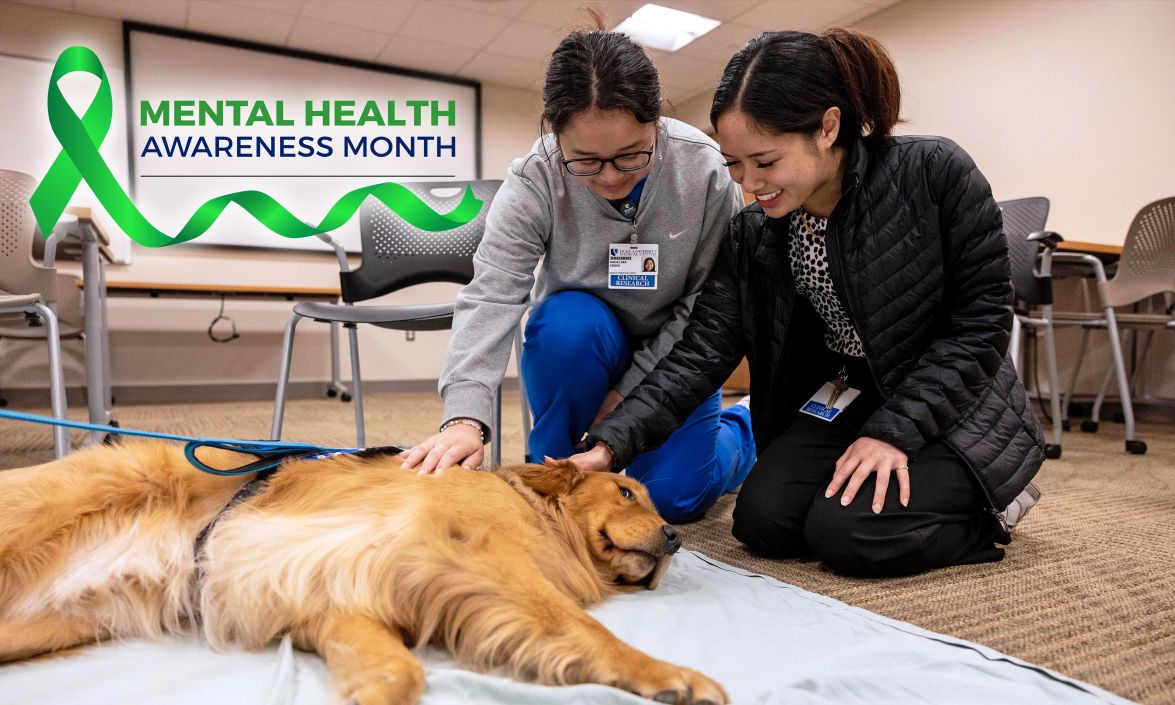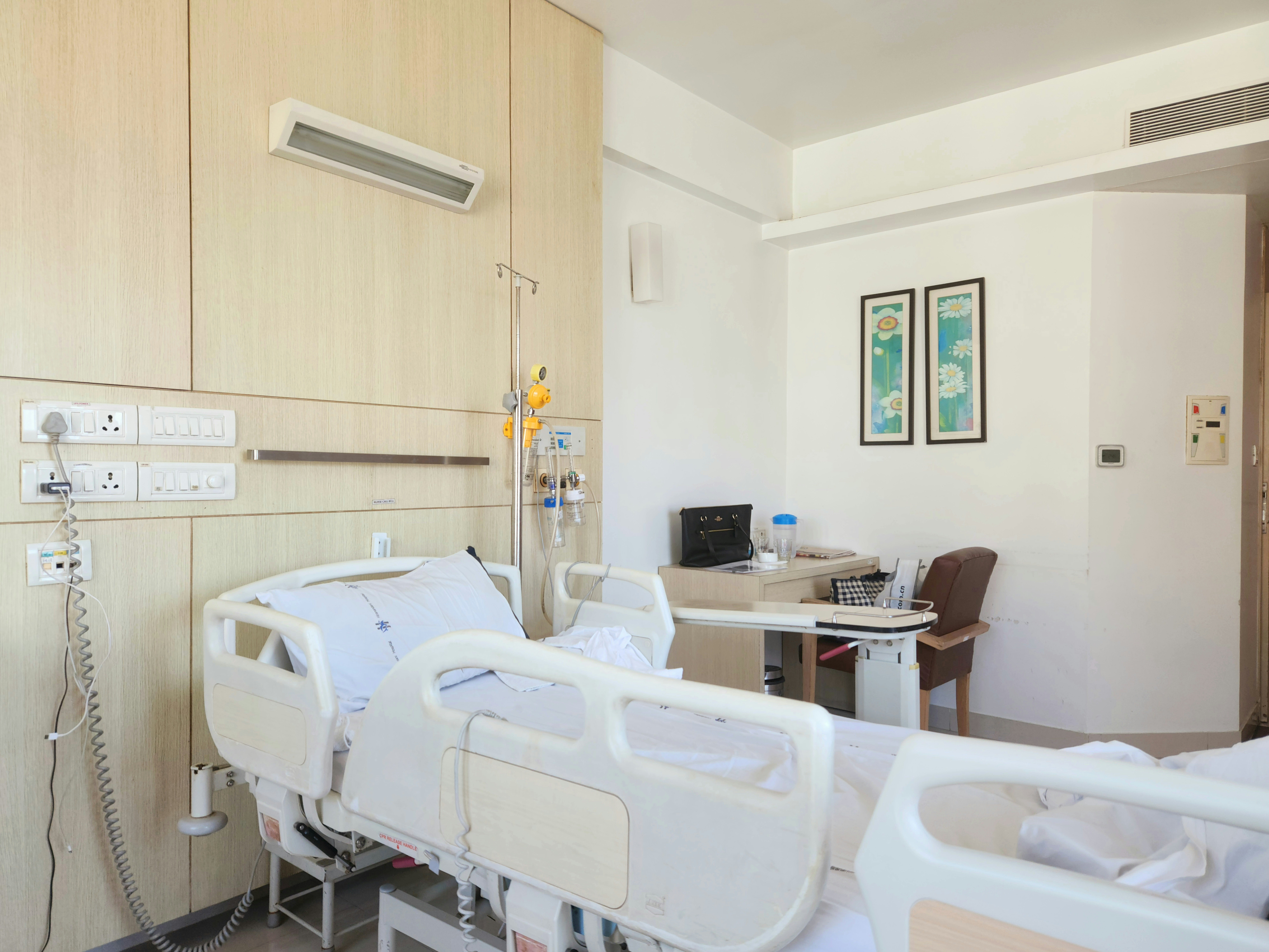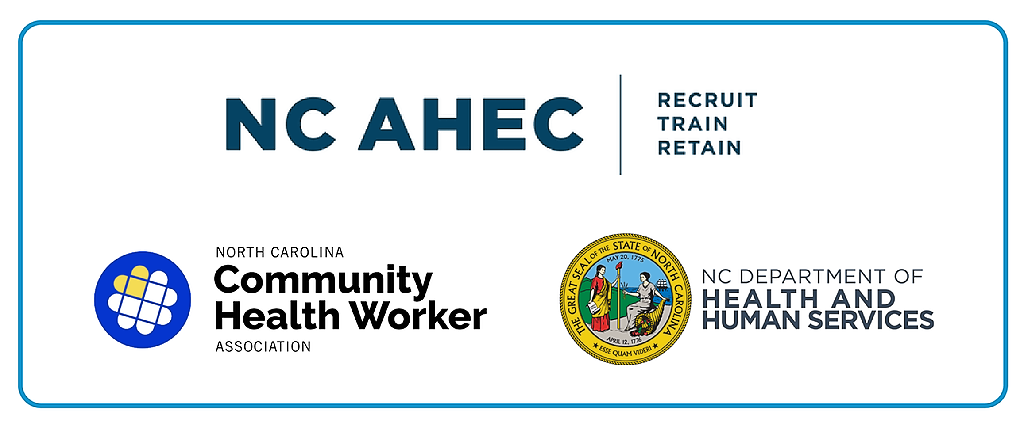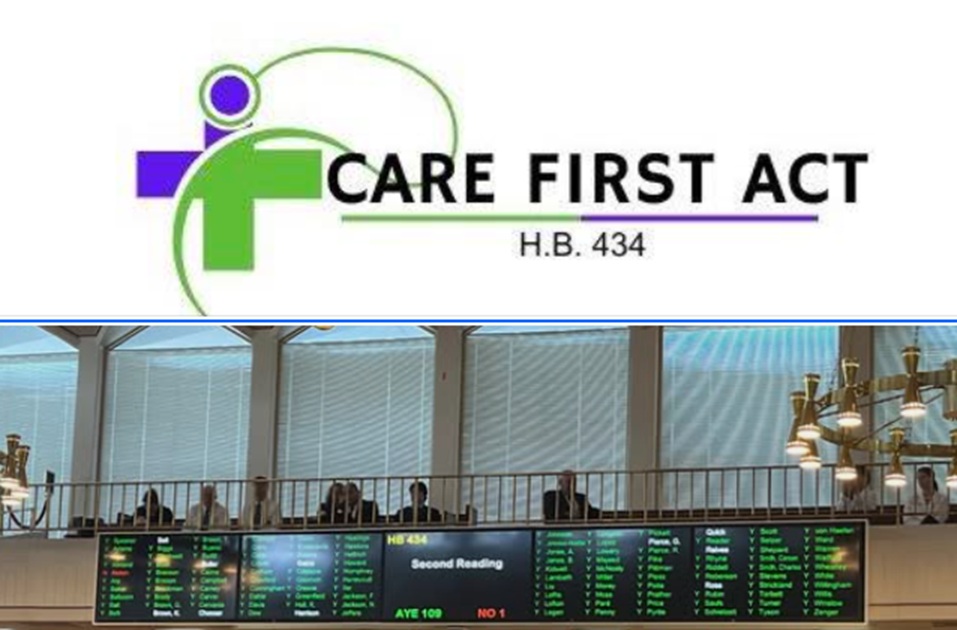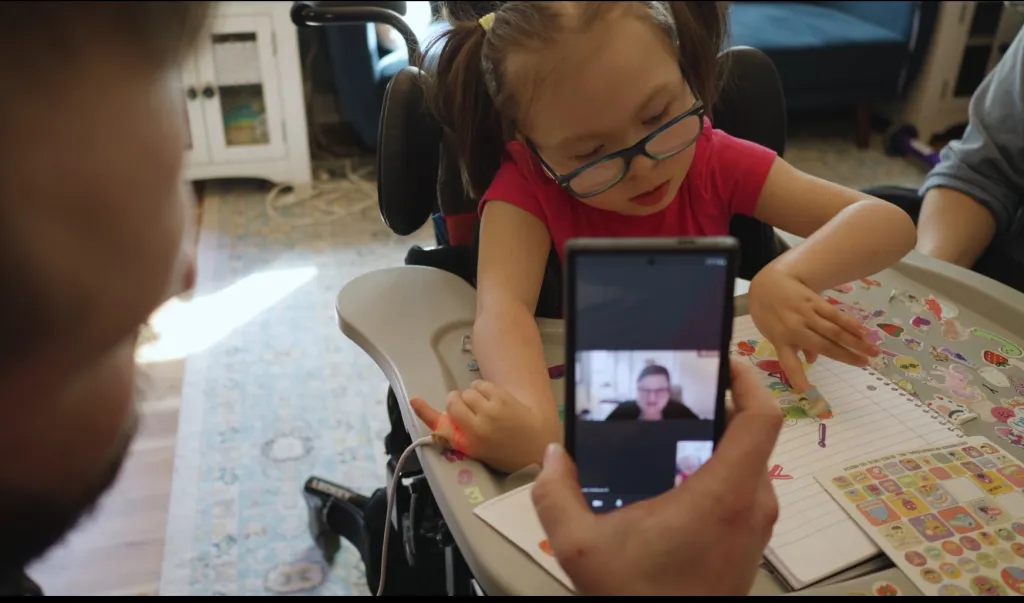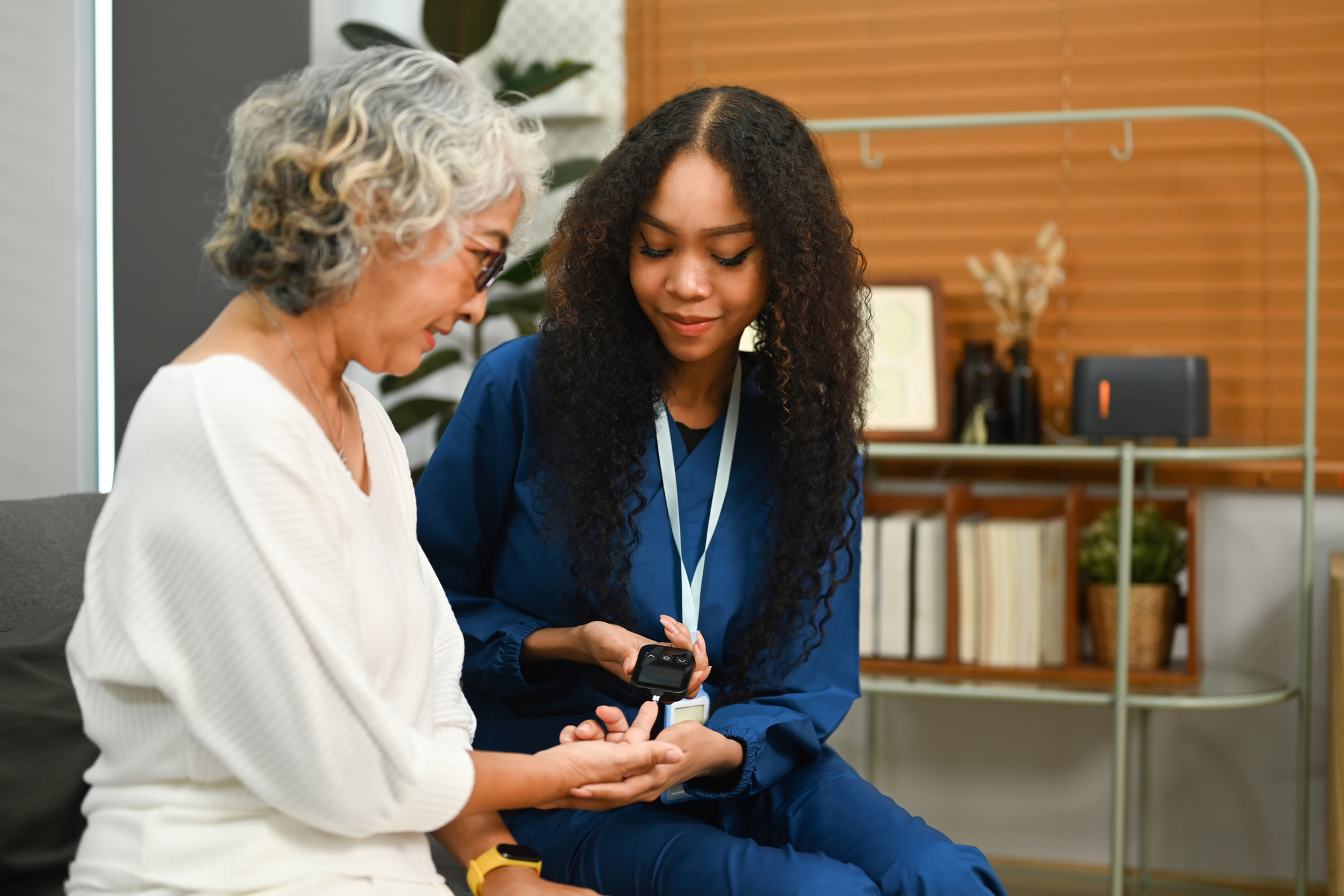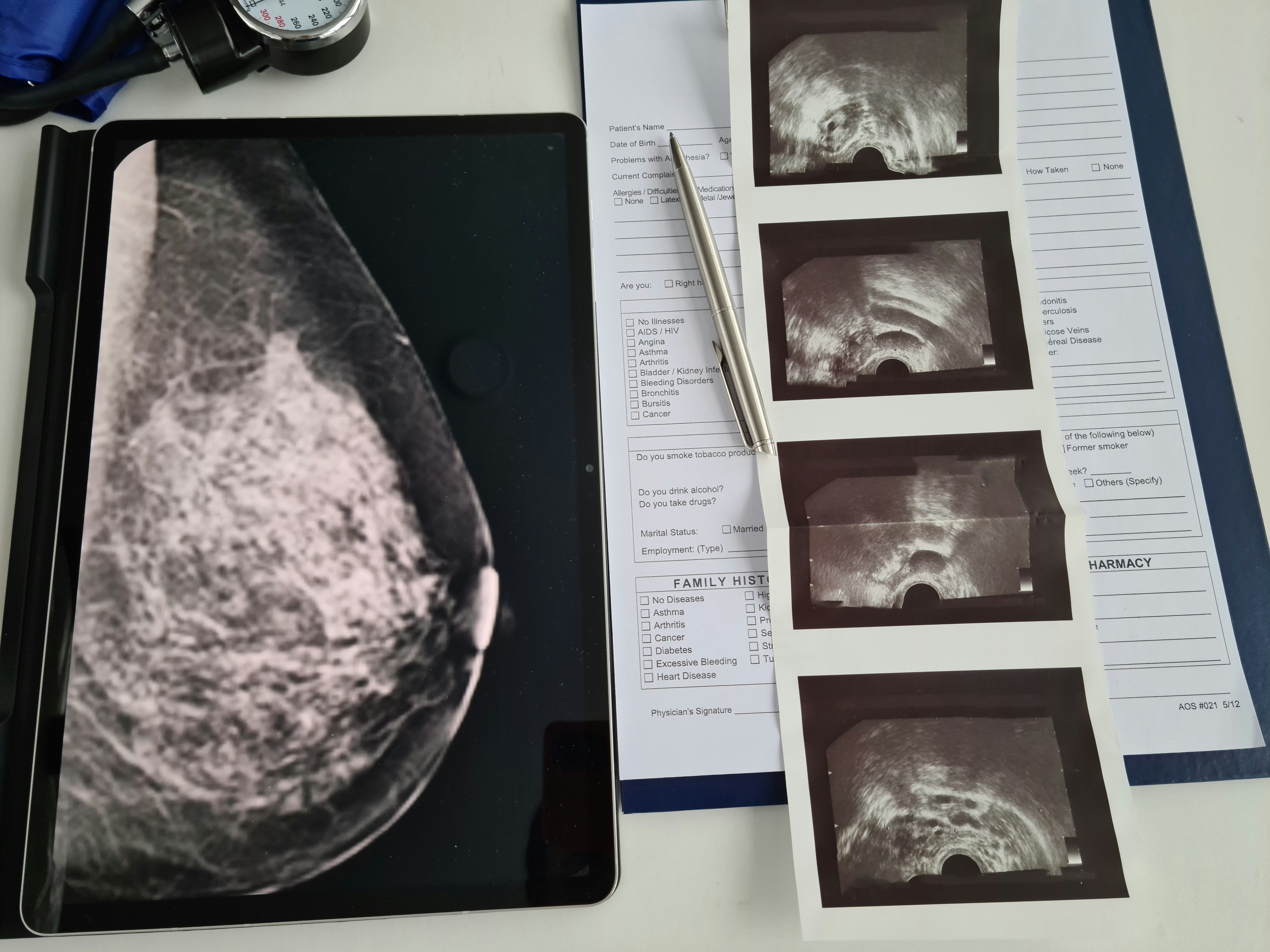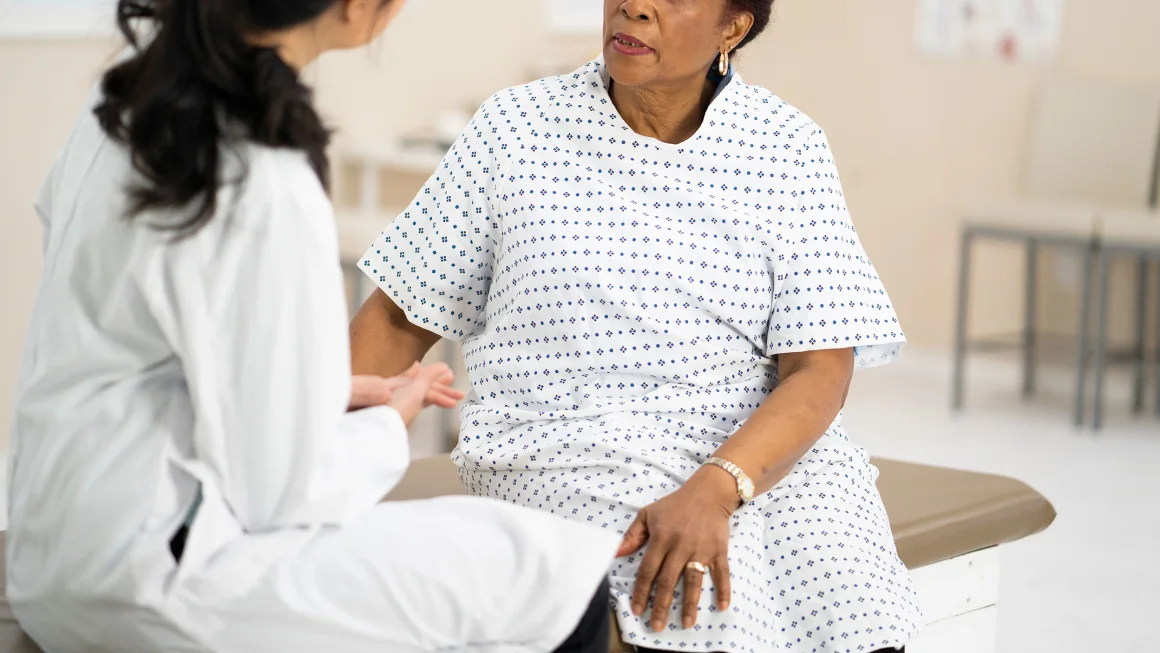How A Minimally Invasive Procedure Helped This Heart Failure Patient Get Her Life Back.

How A Minimally Invasive Procedure Helped This Heart Failure Patient Get Her Life Back.
(Novant Health, Patrick Flanary) — For most of 2024, Karen Powell struggled to get out of bed.
Regular tasks like taking a shower and vacuuming the house sapped her strength and often left her breathless. The worst part was that Powell, a Wilmington grandmother of five, had experienced this before.
Back in 2013, when Powell was diagnosed with congestive heart failure — a progressive disease that affects about 7 million Americans — she spent a week in the hospital following a cardiac catheterization. With a pacemaker and heart medication, Powell’s symptoms eased for several years. But the familiar fatigue eventually returned.
“I was continuing to go downhill, and we had already tried adjusting medications and nothing was helping,” said Powell, 72. “I just felt terrible all the time. All I wanted to do was sleep.”
There is no cure for heart disease. But a heart device implant known as a Barostim has given candidates like Powell hope for immediate improvement. The minimally invasive procedure, approved by the Food and Drug Administration in 2019, is designed to target the patient’s neurohormonal pathway to significantly improve heart function, exercise capacity and quality of life.
While Barostim is not for everyone, candidates include patients whose medications fail to control Class II or III heart failure symptoms, like fatigue from climbing a flight of stairs.
A long-awaited solution
Barostim Baroreflex Activation Therapy works by electrically stimulating carotid baroreceptors, which increases baroreflex sensitivity and rebalances the autonomic nervous system. Combined with guideline-directed medical therapy, the Barostim implant – about the size of a standard pacemaker – improves the patient’s heart rate and blood flow.

“By stimulating the carotid baroreceptors, we are able to recalibrate the autonomic nervous system,” said cardiothoracic surgeon Dr. Jeko Madjarov of Novant Health Heart & Vascular Institute, one of the few surgeons in North Carolina who performs the surgery. “This widens the blood vessels to make it easier for the heart to work, and can improve the patient’s quality of life.”
Most Barostim patients have an existing defibrillator or pacemaker, which the implant complements. While Powell has no family history of heart problems, her condition was caused by viral myocarditis, which inflames the heart muscle and disrupts blood flow.

When Powell’s medications grew ineffective, her cardiologist, Dr. John Rommel of Novant Health Heart & Vascular Institute, recommended a heart transplant. But an evaluation in April 2024 ruled one out. Powell was not a candidate due to her age, Type 2 diabetes and single kidney. (She had one removed 20 years ago after developing a cyst.)
But while Powell was not fit for a heart transplant, she was eligible for Barostim implant surgery, which became available at Novant Health New Hanover Regional Medical Center in October 2024.
“I’m ready as soon as you can get me in,” Powell told Rommel. “I was willing to investigate every avenue I could for help.”
That November, Powell became one of the first Barostim patients at New Hanover Regional Medical Center. The procedure took less than an hour, and while patients often go home the same day, Powell spent the night at the hospital.
“Compared to when I walked in, I would say it’s almost like a miracle,” Powell said. “I just feel 100% better than I did before the procedure.”
Recovery and follow-up
After the implant is performed and the patient has had time to recover, they typically follow up within a couple of weeks to begin increasing Barostim therapy. This is done under medical supervision in the referring physician’s clinic.
One of the care team members present during these appointments is Donovan Harper, a representative for CVRx, which developed the Barostim technology.
“We want to give the patient adequate time to recover from surgery before making adjustments to increase their therapy,” Harper said. “We partner with the (health care) team to ensure that we’re making the appropriate adjustments to complement their standard of care.”
With Rommel present, Harper initially adjusts a patient’s electrical impulse dosage every couple of weeks to ensure that their activity levels and quality of life begin to improve. He checks the device’s battery twice a year.
Surgery and recovery require close coordination between the patient’s cardiologist, cardiothoracic surgeon and primary care physician, as well as nurse practitioners, physician assistants, pharmacists and more. The Novant Health Heart & Vascular Institute’s multidisciplinary approach makes this level of care possible.
“By building that trust with the patient over time, we can figure out the steps toward managing this complex disease,” Rommel said. “That’s what I think makes this job exciting, and to see Karen feeling so much better is incredibly rewarding.”

Recent blood work has shown improvement in Powell’s creatinine levels and kidney function. She says her strength is renewed and she now has the energy to do the little things many take for granted, like cooking a meal or taking a walk.
But most of all, she’s excited to travel again with her husband, Morris. In September, they plan to board a Disney cruise ship to Alaska, a vacation they had to put off last year.
“I am so appreciative of the Novant Health team helping people like me live a fuller life,” Powell said. “I just continue to feel better and better. It’s like a miracle has happened to me.”
Loneliness Is Epidemic, Even Among Older-Adult Physicians

Loneliness Is Epidemic, Even Among Older-Adult Physicians
(AMA, Timothy M. Smith) — Loneliness is a worldwide phenomenon. It has become so pervasive that some national governments have elevated the issue to the policy level. For example, the U.K. now has a minister for loneliness; Australia formed the Ending Loneliness Together organization; and Canada established the Canadian Institute for Social Prescribing and the Canadian Coalition for Seniors’ Mental Health.
And in 2023, U.S. Surgeon General Vivek Murthy, MD, issued “Our Epidemic of Loneliness and Isolation,” an advisory on the healing effects of social connection and community.
Still, for all the attention loneliness has attracted, there is precious little research on how it affects physicians in the U.S.
The authors of a study, “Loneliness and Associated Factors Among Senior Physicians in the U.S.,” published in the American Journal of Lifestyle Medicine in April, sought to close this gap by investigating the proportion of physicians 65 or older who experience loneliness. They also looked to identify associations between high loneliness and other personal and social factors.
One of their key findings: Nearly one in five senior physicians—18%—reported high loneliness.
In honor of Older Americans Month, May is marked each year as AMA Senior Physicians Recognition Month. Learn about the AMA Senior Physicians Section (AMA-SPS), which gives voice to and advocates on issues that affect senior physicians, who may be working full time or part time or be retired.
The report’s study team includes Samuel Lin, MD, PhD, MBA, MPA, MS, and Ved Gossain, MD, the immediate past chair and former chair, respectively, of the AMA-SPS Governing Council, as well as staff in the AMA Professional Satisfaction and Practice Sustainability group. Watch this “AMA Update” interview with Dr. Gossain to learn more about loneliness in older adults and physicians.
Who’s affected most
The study’s results were based on survey responses collected between February and March 2024 from more than 10,000 physicians, independent of AMA membership status. Nearly half of the participants, 49.8%, were still practicing. More than four in five, 81%, were married or partnered, and of those who were not, 70.7% reported living alone.
The average loneliness score was 38.04 on the University of California, Los Angeles, Loneliness Scale, a 20-item survey instrument with scores ranging from 20 to 80.
Physicians 65–72 years old had a higher average score, 39.09, than those 73–80, 81–88, and over 89, who scored 37.22, 36.14 and 37.27, respectively.
“I didn't expect this, because certainly you would think more people at those older ages would be living alone,” said Nancy H. Nielsen, MD, PhD, an older-adult physician who served as AMA president in 2008–2009.

“That makes me wonder if there's an adjustment period—if those first few years in retirement are when it's most difficult for physicians to figure out how to manage without being lonely,” said Dr. Nielsen, who is senior associate dean for health policy and clinical professor of medicine at the Jacobs School of Medicine and Biomedical Sciences at University at Buffalo. She is still in practice as an internist and infectious disease physician.
Consider cultural changes
While the study is not longitudinal and does not address causation, Dr. Nielsen suspects the incidence of loneliness may be on the rise, and she points to one cultural change that might account for some of it: the shift toward hospitalists.
“The thing I miss most is a place where doctors routinely get together—there’s no doctors’ lounge anymore,” she said. “We in private practice used to go to the hospital—everybody went to the hospital—and that doesn't happen anymore. We had coffee together in the morning, and that's when we got to know each other and really supported one another. You will hear many older physicians tell you that was a high point for them. Now physicians are more isolated in their settings.”
Dive deeper:
- Loneliness is a public health crisis. Learn how to screen for it.
- What doctors wish patients knew about loneliness and health
- “No better role in medicine” than to serve as a physician mentor
- How joy in practice drives Dr. Harmon in his senior years
Ageism may play a role too
A related report from the AMA, “Experiences of Ageism Among Senior Physicians: A Qualitative Study,” shows that many older-adult physicians experience ageist treatment. The report details the frequency and types of ageism they experience recommends ways to combat the phenomenon.
Notably, among U.S. physicians who have reported experiencing some type of differential treatment in any part of their lives due to their age, 18.8% said they had been treated as irrelevant or they had been dismissed, disrespected or made to feel invisible.
An episode of the AMA “Prioritizing Equity” video series delves into the critical issue of ageism in medicine, examining how age-related biases affect physicians and the quality of care they provide.
What can be done
“Although there were no significant differences in mean scores among retired physicians and physicians practicing full or part time, it is notable that nearly half of participants still practiced medicine at the time of the survey, and that more than half of the high-loneliness cohort still practiced medicine,” the study’s authors wrote. “Considering this, it is evident that loneliness is not just a ‘retired physician’ concern.”
The authors also found higher loneliness scores among older-adult physicians who:
- Were not heterosexual, compared with those who were.
- Were not married or partnered, compared with those who were.
- Lived alone, compared with those who did not.
- Had no children or grandchildren, compared with those who did.
- Lived in rural areas, compared with those who lived in urban areas.
More research is needed “to observe potential causes of loneliness among senior physicians and potential associations with sense of purpose or loss of meaning-making activities,” the study says.
In the meantime, they wrote, there are steps stakeholders can take to reduce experiences of loneliness and improve well-being for older-adult physicians. For health care employers, these include establishing employee-resource groups that “provide opportunities for physicians to meet others who may be facing similar situations or life events.”
The AMA has numerous policies on aging, including those addressing:
- Dignity and self respect.
- Retirement and hiring practices.
- Assessing the competency of physicians across the professional continuum.
- Confronting ageism in medicine.
Dr. Nielsen noted that, in the end, senior physicians are not much different from other people 65 or older. Many older adults’ needs are universal.
“One common concern I hear from older physicians who live alone is this: What if something happens to me? Who’s there to help me? Who's there to know?” she said. “This is a human phenomenon, not just an American phenomenon.”
Physicians Reluctantly Pack The EHR In Their Carry-On Luggage

Physicians Reluctantly Pack The EHR In Their Carry-On Luggage
(AMA, Georgia Garvey) — A physician’s most intrusive, unwelcome and demanding travel companion just may be the EHR—the coworker they can’t leave behind, according to a recent study published in JAMA Network Open.
The study on EHR use during paid time off (PTO) showed that, too often, physicians must continue to work during what is intended to be vacation time. This is something that contributes to physician burnout, poor job satisfaction and turnover.
In fact, primary care physicians often toil in the EHR during what was supposed to be time off, “particularly at the start and end of longer vacations, reflecting challenges in fully disconnecting from work,” the study says.
A previous study, using a national survey of 3,024 physicians in different specialties, found that 70.4% reported having worked during their vacation and 59.6% took 15 or fewer vacation days in the previous year. Meanwhile, physicians named finding clinical coverage, absorbing the financial impact and managing the EHR inbox volume as barriers to PTO.
To expand on that, this latest study looked to build on the previous findings using EHR data to determine the amount of physicians’ work during PTO.
Among the physicians included in this study, the median amount of time spent working in the EHR per PTO day was 16.1 minutes. Meanwhile, the study found a median of 39% of days in which physicians spent at least some time in the EHR while 19% of physicians spent more than 30 minutes per day of time in the EHR. The study also found that longer blocks of PTO were associated with less time spent in the EHR, “suggesting that extended vacations enable better disengagement.”
“Organizations should implement strategies to minimize clinical tasks during PTO,” the study says, adding that “future research should explore interventions that help physicians fully disconnect from work.”
The problem of lack of paid time off is endemic among physicians and has clear links to burnout. An exclusive AMA survey found that nearly half of physicians—48.9%—said they took three weeks or less of vacation, with 5% saying they took no vacation days in the previous year.
Research shows that taking more—and more restorative—vacation time, is associated with less likelihood of burnout. In 2023, the physician burnout rate dropped to 48.2%, the first time in four years that the rate was below 50%. But many physicians continue to suffer the ill effects of burnout—and their loved ones, patients and health systems suffer along with them.
As the leader in physician well-being, the AMA is reducing physician burnout by removing administrative burdens and providing real-world solutions to help doctors rediscover the Joy in Medicine™
Health systems are making a change
Many health systems are trying to turn the tide on burnout, making changes to help ensure physicians can truly unwind and relax on their vacations.
These examples from health care organizations that are members of the AMA Health System Program—which provides enterprise solutions to equip leadership, physicians and care teams with resources to help drive the future of medicine—show commitment to reducing EHR use while on vacation and improving well-being.
Ensure physicians come back to an empty inbox
As part of its efforts to reduce the burden on physicians to manage their inboxes while they’re on paid time off, Baptist Health Medical Group has created a pilot program to tackle EHR use on vacation. As part of the program, a team—which consists of a physician, nurse practitioner or nonphysician provider—helps to offload some of the messages received by physicians who are out of the office.
To help physicians enjoy their vacations and time away from the office, Baptist Health also established a group—which includes project managers from different departments, an IT member, an operations manager and three physicians—that meets every two weeks to address issues related to inbox burden.
Provide help while away, keep time off flexible
At Confluence Health in Wenatchee, Washington, about half of their physicians take four weeks or more of vacation per year and the health system also boasts high job satisfaction rates. It’s not just about the vacation time itself, though.
In a primary care department effort at Confluence Health that is looking to be scaled more broadly, messages are pooled when a physician is out of office or on vacation. Other physician partners in the department either rotate responsibility for or get assigned to the messages. Ideally, physicians return to an empty inbox, with no messages.
They also try to keep time off flexible, requiring a minimum number of days worked per year. The remaining days can be used for holidays, vacations, CME, personal days or other time off as needed.
Help physicians feel supported
At Hattiesburg Clinic in Mississippi, as part of exploring the link between feeling valued and reducing burnout, leaders are looking for system-wide strategies to show physicians how vital they are to the group’s success.
And a key part of helping physicians feel supported is allowing them the ability to unwind and unplug with clinical coverage—particularly EHR inbox coverage—while they are out of the office without burdening their colleagues.
Change the culture to encourage PTO
At Marshfield Clinic Health System, leaders are looking to change the culture to lead to positive changes in physician well-being. An organizational biopsy showed that Marshfield Clinic physicians are better at using four weeks of vacation time compared to national statistics, and administrative tasks for physicians are less onerous than those seen nationally, but burnout was high.
As a result, Marshfield has looked to supporting individual physicians. The clinic formed a peer group called the Physician and Allied Professionals Health Committee to provide resources to physicians and advocate for system-level changes intended to promote physician well-being among them on the PTO front.
Learn more from an AMA STEPS Forward® toolkit about reducing barriers to taking time off. AMA STEPS Forward open-access toolkits and playbooks offer innovative strategies that allow physicians and their staff to thrive in the new health care environment. These resources can help you prevent burnout, create the organizational foundation for joy in medicine and improve practice efficiency.
Also, discover the cost of physician turnover attributable to doctors not having full inbox coverage while on vacation. Meanwhile, this calculator will help determine the cost of physician turnover due to doctors taking less than three weeks of vacation per year.
Medicaid Managed Care Back Porch Chat
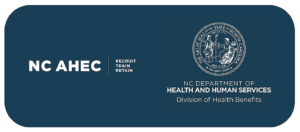
Medicaid Managed Care Back Porch Chat
Key NC Medicaid Updates
Thursday, May 15 | noon-1 p.m.
Please join this month's Back Porch Chat on Thursday, May 15 from 12-1 p.m. This webinar will be hosted by Dr. Janelle White, Chief Medical Officer of NC Medicaid, and will cover important federal updates and NC Medicaid budget priorities.
Additional topics include:
- Clinical Coverage Request Process and Policy Revision Request Process
- 2024 Consumer Assessment of Healthcare Providers and Systems (CAHPS) Survey Results
- Credentialing Committee Updates
- Justice-Involved Reentry Work
Register for Medicaid Managed Care Chats
These Are The Safest Hospitals In NC, Report Says. See If Yours Made The List

These Are The Safest Hospitals In NC, Report Says. See If Yours Made The List
(The Charlotte Observer, Evan Moore) — How safe are North Carolina hospitals? A national health care watchdog group determined the state had dropped outside the top 10 in its latest hospital rankings.
The Leapfrog Group released its spring 2024 Hospital Safety Grades on Thursday, May 1, scoring local hospitals with A through F letter grades. In its report, North Carolina hospitals were rated the 12th safest in the United States — the lowest ranking since 2022. In total, 92 hospitals in North Carolina received safety grades in Leapfrog’s spring 2025 report. Utah was ranked No. 1, with the highest percentage of hospitals that received A grades. Rhode Island, New Jersey, Connecticut and South Carolina followed, respectively. Here’s how Charlotte and Raleigh-area hospitals stacked up in the new rankings, how the grades are calculated, and how the data should be interpreted.
What makes a hospital safe? The Hospital Safety Grade list assigns a letter grade to general hospitals in the U.S. based on how well they prevent medical errors, accidents, injuries and infections that kill or harm patients. About 30 measures are used to determine these safety grades. The Leapfrog Group also utilized these five patient experience measures that have a direct relationship with safety outcomes to come up with grades:
Nurse communication
Doctor communication
Staff responsiveness
Communication about medicines
Discharge communication
Grades are assigned using publicly available data, and measures’ scores are calculated using patient responses to a national and standardized survey following a hospital visit, Leapfrog said.
Here are North Carolina’s Leapfrog safety rankings in recent years:
No. 1 in spring 2022
No. 7 in fall 2022
No. 6 in spring 2023
No. 3 in fall 2023
No. 8 in spring 2024
No. 4 in fall 2024
No. 12 in spring 2025
Report highlights ‘Straight A’ NC hospitals
For the first time, Leapfrog recognized hospitals that received A grades for five or more grading rounds, designating them as “Straight A” hospitals. There are 18 “Straight A” hospitals in North Carolina, including five in the Charlotte and Raleigh regions: Atrium Health Union (Monroe) CaroMont Regional Medical Center (Gastonia) Duke Raleigh Hospital (Raleigh) Duke Regional Hospital (Durham) Duke University Hospital (Durham) Novant Health Huntersville Medical Center (Huntersville) Novant Health Mint Hill Medical Center (Charlotte) Novant Health Presbyterian Medical Center (Charlotte) WakeMed Cary Hospital (Cary) WakeMed Raleigh Campus (Raleigh)
How safe are Charlotte-area hospitals? The following Charlotte-area hospitals received A grades in Leapfrog’s Spring 2025 Hospital Safety Grades report:
Atrium Health Union (Monroe) CaroMont Regional Medical Center (Gastonia) Novant Health Huntersville Medical Center (Huntersville) Novant Health Mint Hill Medical Center (Charlotte) Novant Health Presbyterian Medical Center (Charlotte)
These Charlotte hospitals received B grades: Atrium Health Pineville (Charlotte) Atrium Health Cabarrus (Concord) Atrium Health Mercy (Charlotte) Atrium Health Union West (Matthews) Carolinas Medical Center (Charlotte) Novant Health Matthews Medical Center (Matthews) Atrium Health University City was the only Charlotte-area hospital with a C grade.
To read how safe Raleigh-area hospitals are and how safety grades are calculated, read more here
UNC Hospitals Fight To Bring Life Into The World With Twin-To-Twin Transfusion Syndrome

UNC Hospitals Fight To Bring Life Into The World With Twin-To-Twin Transfusion Syndrome
(UNC Health, Brittany Phillips) — Excitement. Disbelief. Panic.
It’s a mixed bag of emotions when finding out you are pregnant with twins. Many thoughts can overwhelm the mind, especially handling the logistics of twin parenthood and possibly a high-risk pregnancy.
Many complications can occur with a twin pregnancy like premature birth, low birth weight, preeclampsia or gestational diabetes. There are also rare cases of Twin-to-Twin Transfusion Syndrome or (TTTS).

TTTS is a prenatal condition in which twins share unequal amounts of the placenta’s blood supply. This results in the two fetuses growing at different rates, a high-risk condition that comes with serious complications and even death if left untreated. Identical twins count for a third of all twin pregnancies. About two-thirds of identical twins share one placenta, also known as, monochorionic twin pregnancy. Of those, 10-15% will go on to develop TTTS. There are also different stages of the disease depending on severity ranging from a decline in amniotic fluid between both babies, small bladder imaging, kidney failure, progressive heart failure to the fetus passing.
With its advanced diagnostics and surgical and medical treatments, the Maternal Fetal Medicine unit in the UNC Department of Obstetrics and Gynecology at the UNC School of Medicine is the only institution in the state and in the Southeast to offer procedures to treat TTTS. William Goodnight, MD, associate professor of Maternal Fetal Medicine, says his team completes about 20 TTTS cases a year.
These are the narratives of four families who received care at UNC Hospitals for TTTS. They share their heartfelt testimonies of challenges, perseverance, and gratitude on extraordinary healthcare to bring their babies home.
Facing Uncertainty. The VanFleet Family.
Fayetteville resident Laura VanFleet and her husband were overjoyed when they found out she was pregnant with twins in May 2023. She was six weeks pregnant. A sneak peek test revealed that she was expecting identical boys. They were also “mono-di” twins, also known as monochorionic diamniotic twins, meaning they share a placenta but have separate amniotic sacs. As the days progressed, Laura and her husband took steps to prepare for welcoming two babies into their home along with their toddler daughter. But, at 16 weeks, Laura’s pregnancy journey took a different turn. The twins were diagnosed with Twin-to-Twin Transfusion Syndrome – Stage 2. Living in Cameron, N.C., at the time, Laura was referred to UNC Maternal Fetal Medicine by her OB for highly specialized fetal care.
“I had zero symptoms that could have alluded to TTTS,” said Laura. “It was at a regular routine check-up when my doctor at Southern Pines Women’s Health was concerned about the amount of fluid discrepancies between the boys, and that’s when they referred me to UNC Maternal Fetal Medicine. At 17 weeks, I met with Dr. Goodnight and his team, who also confirmed the diagnosis. We were told of all the options and risks. I was recommended to have laser ablation surgery to save my boys.”
Fetoscopic laser photocoagulation is the gold standard treatment for TTTS. It’s a medical procedure to stop the uneven blood flow and separate the circulation between the two babies. The goal of the procedure is to use laser energy to block or seal off only the communicating vessels connecting the two babies so that they no longer share blood. Fetal loss, premature rupture of membranes, and preterm labor are just some of the risks associated with the surgery. However, research shows that this surgery is now considered as the first choice of treatment in TTTS with stage 2–4 before 26 weeks due to its better outcomes.

“For stage two or more of TTTS with no treatment is about a 30% survival,” said Goodnight. “The survival with the laser procedure is 75-80%. Every pregnancy is different. It’s important for providers to understand the complications of TTTS; early screening gives us better chances of success.”
“My husband and I had doubts that we were going to lose our babies,” said Laura. We were aware of the risks involved and we had to make a decision quickly. There were discussions about going out of state to receive care, but I knew I wanted to stay and face this surgery with the UNC provider team at my side,” she said.
“Delivery is an option if the patient is later in pregnancy or amnio-reduction by removing the extra amniotic fluid,” said Goodnight. “It’s a temporary treatment that is not as successful as the laser procedure and is most preferred in the third trimester. Other treatment options can be considered depending on the patient’s condition and health of the babies.”
A multidisciplinary team is required for a comprehensive fetal center, and it is composed of reproductive geneticists, dedicated fetal care nurses, specialty neonatologists, the maternal fetal medicine research team, and NICU care. For TTTS, pediatric surgeons, genetics, fetal therapy nurses, and maternal fetal medicine are typically involved in laser cases. Laura knew she was in good hands.
“UNC is the best,” she said. “From food deliveries to cleaning services, every single person at UNC is exceptional. You can tell that the team puts 110% into everything that they do. I knew that getting top quality care at UNC was going to be the best way for a positive outcome after receiving this harrowing diagnosis.”
The laser procedure takes 30-45 minutes, and the patient might be able to return home the same day depending on their aftercare. Laura was monitored week by week after the success of her surgery. At 33 weeks, after being in pre-term labor, she delivered her boys on January 31, 2024. Logan was 4 pounds 6 ounces and Rowan was 5 pounds 14 ounces.
A Mother’s Intuition. The Howell Family.
It was an exciting yet overwhelming feeling for Irene in early March 2024 when she discovered she was pregnant with twins.

“I was teasing with the ultrasound tech and jokingly asked, “you only see one baby in there, right,” said Irene Howell, a Lumberton resident. “Two seconds later, I was made aware that I was actually pregnant with twins. I was so shocked. I could have fallen off the table,” she laughed.
It took a couple hours for Irene to digest her reality before she went home to tell her husband, Kevin. When she returned home, she got her camera ready and told him the news. She handed Kevin the picture of baby A and baby B. Twins weren’t on his radar of possibilities, but he was immediately shocked with excitement.
Being high-risk, Irene was referred to Cape Fear Valley Maternal Fetal Medicine and Fayetteville Woman’s Care. She was referred to MFM due to being high risk with her age, pregnancy with twins, and having gestational diabetes in her previous pregnancy. The following month she found out she was having identical boys who were also “mono-di” twins. All scans and ultrasounds were going well, but in the month of July, things started to change. Irene started to feel less movement with her babies.
“I felt super swollen and uncomfortable,” said Irene. “I also wasn’t feeling my babies move as much. I thought I was being paranoid, but I started to question if everything was OK.”
During a routine ultrasound appointment in July, Irene’s OB noticed one of the twins had a smaller bladder and he wanted to check with her maternal fetal medicine doctor for further examinations at her next appointment, which was in three days. The early stages of TTTS are when a donor twin’s blood volume is lessened, causing the bladder to become small and amniotic fluid to reduce. That night, Irene started to research the red flags she was experiencing and more details about TTTS.
“I kept battling in my mind whether or not I should trust my gut feeling that something was wrong,” said Irene. “I made the decision to call my MFM doctor the next day to get another ultrasound done. I needed that peace of mind.”
She was scheduled to get an echocardiogram done on the boys the following day, but she wanted to be seen by her maternal fetal medicine doctor first just to make sure the boys were OK.
Irene was right. After another ultrasound was done, her twin boys did, in fact, have TTTS.
“I remember the ultrasound tech went to speak to my doctor and he returned to tell me the news. I burst into tears once it was official,” she said. “Literally 12 days ago I got their anatomy scan done and had great readings and then, at 22-weeks pregnant, I was looking at Stage 4 – Twin-Twin Transfusion Syndrome. My doctor debated if I needed to be transferred to UNC-Chapel Hill by ambulance or if it was safe enough to have my husband drive me up. At this point I knew when I got to UNC it wouldn’t be just a night stay, so we drove ourselves.”
Stage4 of the diagnosis includes advanced disease, growth restriction, and heart failure, which one of the twins was already showing. Irene’s doctor knew UNC was the experienced center in the state to perform TTTS laser surgery.
“I went home and packed a bag, my husband and I had to make preparations for a friend to take care of our daughter as we traveled to Chapel Hill,” said Irene. “It was an agonizing ride as I thought about the lives of my boys.”
Dr. Goodnight confirmed the stage 4 diagnosis and shared all the possible options for Irene and her husband to consider.
“When we were informed the perinatal survival rates were reported to be 45-68% following the laser procedure with at least one fetus surviving in 75-80%, it seemed that the laser procedure was our best option to try and save both boys,” said Irene.

The procedure was scheduled for the following morning. After an intense operation, Irene had a week-long stay at the hospital. Positive results slowly started to show fluid levels resolving to normal range.
“After being discharged, I continued my care in Chapel Hill weekly,” said Irene. “I began to feel better, and I actually lost weight due to the fluid being reduced. Had I not listened to my intuition and scheduled another appointment to be seen that Tuesday instead of waiting for my scheduled appointment for that Thursday back in July, I might would have lost both babies. It still gives me chills to think how different our lives could have been had I just waited two more days,” she said tearfully.
In August, Irene’s water broke. At 27 weeks and 6 days on August 19, 2024, Dawson and Phoenix were born weighing 2 pounds 6 ounces each. Phoenix spent 96 days in the NICU and Dawson spent 103 days. They both continued to gain strength and weight.
“I think about Dr. Goodnight and his team every day,” said Irene. “I am so thankful. I truly know our journey with the boys and TTTS would not have turned out to be what it is now without the hands of God, Dr. Goodnight and his team. These babies are miracle babies because of that phenomenal team!”
Twin Soldiers in the Womb. The Mendez Family.
Tatiana Mendez and her husband Christian were stationed at Fort Bragg U.S. Army base in Fayetteville, N. C., when she found out she was pregnant in June 2024. While Christian was on active duty at the time, her maternity care began at Womack Army Medical Center. During her first ultrasound at 10 weeks, she saw not one but two little heartbeats on the ultrasound.
“I was telling my sister-in-law that I was going to prank my husband and tell him we were having twins,” Tatiana giggled. “Little did I know, that was going to be true! God had other plans,” she laughed.
The couple has a 3 ½ year old daughter, and more pink was on the way after she was told she was expecting twin girls. It was an exciting moment for the entire family, but Tatiana didn’t know a long and arduous journey was ahead. She was considered high-risk for carrying “mono-di” twins, so her ultrasound appointments were every two weeks. As time progressed, her symptoms worsened, especially tightness in her stomach and her mobility was compromised.
“The tightness in my belly made it really hard to walk,” said Tatiana. “I couldn’t do any activities,”
At her 24-week ultrasound appointment in the month of October, Tatiana was told that her babies were diagnosed with Twin-Twin Transfusion Syndrome – Stage 2. She was warned that this type of condition could cause her to lose one or both of her babies. UNC Maternal Fetal Medicine was immediately contacted for Tatiana and Christian to schedule an appointment. Promptly the next day Tatiana and Christian were in Chapel Hill to discuss next steps. Dr. Goodnight and his team stressed the critical nature of the TTTS diagnosis and affirmed their decision to act fast.
“We are a military family, so we move a lot,” said Tatiana. “I am so thankful that we were in a location where we had this accessibility at UNC. My husband was supposed to have been deployed during this time, but his command allowed him to be by my side throughout this tough process.”
The following day, Tatiana’s surgery was scheduled. A normal healthy twin pregnancy has about 500-750 milliliters of amniotic fluid, but for Tatiana it was double that amount.
“1,760 milliliters of amniotic fluid was retrieved during my surgery,” she said. “A huge amount of fluid twin A was giving to twin B.”
Thankfully, the surgery was a success and amniotic fluids for both babies returned to normal range overtime. Tatiana was in recovery for three days and continued her care through UNC with routine ultrasounds.
“Honestly, I had instant relief,” Tatiana said. “There was less pressure in my belly, which made me feel so much better.”
In late December on Christmas Eve, Tatiana delivered her girls at 33 weeks. Isabella weighed 4 pounds 7.3 ounces and Gabriella weighed 4 pounds 12.2 ounces.
“Dr. Goodnight was phenomenal and so was his staff,” said Tatiana. “This was a life-saving intervention and I’m thankful that my girls are alive today. It’s super important for families to know that they are in good hands with Dr. Goodnight and his team at UNC.”
Access to Expert Care in Home State. The Gerber Family.

In June 2024, Brooklyn Gerber and her husband, Bryan, discovered they were expecting. While living in Greenville, North Carolina, the couple was excited at the thought of having another child; however, Brooklyn knew the symptoms for this pregnancy were different.
“This was my third pregnancy. We have two older kids: a 4-year-old girl and a 6-year-old boy. I felt more fatigued, and the nausea was terrible compared to my other two pregnancies.” At seven weeks pregnant, the Gerber family found out they were expecting “mono-di” twins. At this time, Brooklyn and her husband began to learn about the possible risks with a “mono-di” twin pregnancy, including Twin-to-Twin Transfusion Syndrome.
“I went to my primary OB for ultrasounds every two weeks for twin-twin surveillance,” said Brooklyn. “Everything looked great between the amniotic fluid in their sacs as well as their growth until I went in September at 17 weeks for my anatomy ultrasound. That’s when the first sign appeared of Twin-Twin Transfusion Syndrome – Stage 2. There was a big discrepancy in the amniotic fluid levels in the two sacs as well as a size discrepancy between the babies,” she said.
Concern instantly crept into their minds once the diagnosis was confirmed. Time was of the essence. ECU Maternal Fetal Medicine quickly contacted UNC to schedule a consultation with Dr. Goodnight. Following a thorough prenatal ultrasound, reviewing imaging, and discussions of treatment options and their inherent risks, the Gerber’s moved forward with scheduling fetoscopic laser surgery at UNC Hospitals.
“It was truly a stressful time,” said Bryan. “There are only a handful of centers in the country who perform this type of procedure, and UNC was one of them.”
“It was huge for us to be able to travel only two hours away from home and be gone only a couple of days for the surgery,” said Brooklyn. “Also, to be able to travel back for follow-up care for a couple of weeks without having to go too far from home was incredible. We were thrilled to receive this kind of care in our home state.”
After laser surgery, Brooklyn’s pregnancy began to return back to normal. Thoughts of risks and complications were still unsettling in her mind; however, neither she nor her husband gave up hope for their boys. Brooklyn’s original due date was February 21, 2025, but on January 16, 2025, at almost 35 weeks, she delivered her boys at ECU Health. Bennett was 6 pounds 5 ounces and Banks was 6 pounds. After an almost two-week NICU stay, both boys are now at home and thriving with their big brother and sister.
“I would definitely recommend UNC Maternal Fetal Medicine to anyone else in the area going through the same circumstance,” said Brooklyn. “I think it’s fabulous that people can have access to this procedure locally and not have to travel across the country if they need this done. We are very thankful and so fortunate!”
Can Your Diet Affect Fertility? Gut-Linked Dietary Score Reveals Surprising Risk Pattern

Can Your Diet Affect Fertility? Gut-Linked Dietary Score Reveals Surprising Risk Pattern
(News Medical, Hugo Francisco de Souza) — In a recent study in the journal Frontiers in Nutrition, researchers investigated the association between the novel Dietary Index for Gut Microbiota (DI-GM) and female infertility. The study aims to inform future dietary interventions against the condition. It used questionnaire-based approaches to evaluate 3,053 adult women (age = 18–45), 12.12% of whom were revealed to be infertile.
Study findings demonstrated a complex non-linear association between DI-GM scores and infertility. While lower scores generally correlated with higher infertility risk, the analysis revealed an inflection point: above a certain DI-GM score (specifically, a score of 8), the risk of infertility paradoxically increased. These findings suggest that future gut microbiota research and dietary interventions may help address infertility’s silent pandemic, emphasizing the need for a balanced approach rather than simply maximizing DI-GM.
Background
Infertility, the medical condition characterized by an individual’s inability to achieve a clinical pregnancy even following 12 months of frequent unprotected sex, is a growing global public health concern. Current estimates report that 12.5% of all couples of childbearing age suffer from the condition, with genetic, lifestyle, and environmental factors implicated in its incidence. Alarmingly, several health agencies classify infertility as the third most important threat to public health, following cardiovascular diseases (CVDs) and cancers.
“Common etiologies include ovulatory dysfunction, endometriosis, polycystic ovary syndrome (PCOS), fallopian tube abnormalities, and immunological disorders.”
Recent research on female infertility has highlighted diet as a potentially modifiable healthy behavior with modulatory impacts. Parallel studies on the gut microbiome suggest a link between gut health and female reproductive diseases. The strong influence of dietary patterns over gut microbiota composition and performance suggests dietary interventions as a non-pharmaceutical weapon in clinicians’ arsenals against infertility.
While studies have explored links between general diet/gut microbiota and female reproductive health, the specific relationship between the DI-GM index and female infertility remained unexplored prior to this study.
About the study
The present cross-sectional study investigates the association between DI-GM, a newly introduced gut microbiota index developed by Kase et al., and female infertility. Study data were obtained from the National Health and Nutrition Examination Survey (NHANES) database (2013–2018) and focused on non-pregnant adult American females (age = 18–45).
Kase et al.’s scoring system was used to compute GI-GM scores using all 14 of the index’s food and nutritional components. Participant data were obtained via 24-hour dietary recall questionnaires with DI-GM scores ranging from 0 to 13.
“The DI-GM includes 10 beneficial components (avocado, broccoli, chickpeas, coffee, cranberries, fermented dairy, fiber, green tea, soy, and whole grains) and four unfavorable components (red meat, processed meat, refined grains, and high-fat diets). We averaged the results from two 24-h dietary recall interviews for each participant to calculate the DI-GM scores.”
Female infertility was assessed using questions (n = 2) from the Reproductive Health Questionnaire (RHQ074 and RHQ076). Additional participant data included demographic, lifestyle, health, and reproductive health details alongside records on infections and inflammatory disease. Statistical analyses leveraged weighted linear regression models, chi-square tests, and weighted multivariate logistic regression models.
Study findings
Of the 29,400 NHANES participants, 14,452 were excluded for being male, 10,625 were excluded for being outside the inclusion age, and 614 were excluded for incomplete information, leaving a final study dataset of 3,053 eligible individuals. Of these, 370 (12.12%) were revealed to be infertile, with infertile participants found to be, on average, older, having a higher body mass index (BMI), married, current smokers, and were more likely to suffer from (or be under treatment for) pelvic diseases or metabolic conditions.
DI-GM investigations revealed that infertile participants demonstrated significantly lower DI-GM scores than their fertile counterparts on average. Logistic regression analyses initially suggested a negative association between DI-GM scores and infertility outcomes when treated as a continuous variable or in quartiles. However, RCS analysis further revealed this association to be non-linear. Crucially, a threshold effect analysis identified an inflection point at a DI-GM score of 8. Below this threshold, higher DI-GM scores were associated with a reduced risk of infertility. Conversely, for scores above 8, higher DI-GM scores were unexpectedly associated with an increased risk of infertility.
“Participants with lower DI-GM scores also exhibited higher triglyceride levels and fasting plasma glucose (FPG) and lower high-density lipoprotein cholesterol (HDL-C) levels (p < 0.05). Additionally, the prevalence of infertility among participants significantly decreased from Q1 to Q4 (p = 0.041), with notably lower rates observed in Q3 and Q4 (11.18 and 11.17%, respectively) than in Q1 and Q2 (16.32 and 16.16%, respectively). These observed variations suggest that the potential association between DI-GM and infertility requires further investigation.”
Subgroup analysis did not alter these findings, with observed relationships remaining robust demonstrated across a spectrum of subgroups.
Conclusions
The present study demonstrates a complex, non-linear relationship between gut microbiota indices (herein DI-GM) and female infertility. While higher DI-GM scores up to a certain point appear protective, very high scores (above 8) were linked to increased risk. This highlights the potential for dietary interventions and future gut microbiota interventions against the rising global concern, emphasizing that achieving a balanced dietary pattern reflected by an optimal DI-GM range, rather than simply maximizing the score, may be key.
“As a new dietary quality index that reflects gut microbiota diversity, further research and interventions using DI-GM could help develop strategies to prevent and reduce the risk of female infertility.”
- Zhang, X., Wu, L., Li, H., Zhang, S., & Hua, W. (2025). Association between the dietary index for gut microbiota and female infertility: a cross-sectional study of NHANES 2013–2018. In Frontiers in Nutrition (Vol. 12). Frontiers Media SA, DOI – 10.3389/fnut.2025.1583805, https://www.frontiersin.org/journals/nutrition/articles/10.3389/fnut.2025.1583805/full
Stomach Cancer Is Increasingly Being Detected Earlier, Raising Hopes For Survival

Stomach Cancer Is Increasingly Being Detected Earlier, Raising Hopes For Survival
(NBC, Linda Carroll) — Doctors are increasingly detecting stomach tumors at an early stage, raising hopes for lifesaving treatment for one of the deadliest types of cancer.
Stomach cancer, the disease that killed country music star Toby Keith last year, is typically difficult to catch early and tends to be discovered at an advanced stage when cancer cells have spread, researchers reported Saturday at Digestive Disease Week, a major international conference for doctors and researchers in gastroenterology, liver diseases and endoscopy.
Advances in the tools used to scrutinize the upper gastrointestinal tract have made it possible to get a clearer view of the stomach, allowing doctors to see small tumors that previously wouldn’t have been detected, according to the study’s lead author, Dr. Mohamed Tausif Siddiqui, a gastroenterology, hepatology and nutrition fellow at the Cleveland Clinic.
“They used to be detected after they metastasized, which is why there were very poor outcomes,” Siddiqui said in an interview. “The whole paradigm is changing, with more and more local cancers and fewer metastatic cancers being detected.”
Newer endoscopes, thin tubes used to look inside the body, provide higher-definition views of the upper gastrointestinal tract, Siddiqui said. The cameras that are guided into the patient’s stomach have the capacity to zoom in on suspect areas.
Siddiqui and his colleagues analyzed data from the National Cancer Institute’s SEER-22 database and found that diagnoses of early-stage stomach cancer rose steadily from 2004 to 2021.
In contrast, more advanced cases — when the cancer had already spread to nearby lymph nodes and/or distant organs — had dropped significantly.
In 2004, early-stage stomach cancer, also called gastric cancer. was detected at a rate of 1.94 per 100,000. By 2021, that number had risen to 2.97 per 100,000. That’s compared to 2.55 per 100,000 for late-stage cancers detected in 2004 and 2.35 per 100,000 detected in 2021.
The American Cancer Society predicts that in the U.S. in 2025, there will be around 26,500 new cases of stomach cancer diagnosed and more than 10,800 deaths.
More cases of stomach cancer are being diagnosed in people ages 50 and younger, a separate study being presented at the meeting by Cleveland Clinic researchers found.
What are causes and symptoms of stomach cancer?
There are many factors that can raise a person’s risk of developing stomach cancer, including infection with Helicobacter pylori bacteria, genetic predisposition and a history of smoking, Siddiqui said.
H. pylori infections lead to inflammation in the stomach and have been shown to cause ulcers.
Early signs of stomach cancer include:
- Acid reflux that can’t be controlled with acid suppressing medications.
- Abdominal discomfort and excessive burping after eating.
- Stomach cramping.
- Unexplained abdominal pain.
- Anemia.
- Weight loss, with no explanation.
The researchers hope that the new findings will lead to guidelines for stomach cancer screening, similar to recommendations for colon cancer.
Currently in the U.S. people get checked for the disease only if they have symptoms or family histories of the disease. Many people don’t have noticeable symptoms until the cancer has spread.
Dr. Ji Yoon Yoon, a gastroenterologist and an assistant professor of medicine at the Icahn School of Medicine at Mount Sinai in New York, said the new research could be a “turning point” for early detection.
“What’s very exciting about these findings is, for the first time, localized stomach cancers are the most common diagnoses in the U.S.,” said Yoon, who was not affiliated with the new study.
Japan and South Korea, which have higher rates of stomach cancer, have screening programs, Yoon said. “Anybody older than 50 gets screened in Japan, and in South Korea, people aged 40 to 74 get an upper endoscopy every two years.”
Early-stage gastric cancers, when confined to the stomach lining, can often be treated with minimally invasive procedures. In more advanced cases, more extensive surgery is usually required to remove part of the stomach.
The overall five-year survival rate for stomach cancer is around 36%, Yoon said. For people with earlier-stage or localized cancer, the five-year survival rate is 77%.
Dr. Michael Gibson, an associate professor of medicine and the director of translational research for esophagogastric cancer at the Vanderbilt University Medical Center in Nashville, Tennessee, said it’s good that it's increasingly being caught early, especially since “the incidence of gastric cancer is rising in the adolescent and young adult population.”
The new study’s data shows that the stage of diagnosis is getting lower within adolescent and young adult groups. While it’s not clear why the patients in the study got checked for gastric cancer, it’s possible some of the patients were being scanned for other reasons and the stomach cancer was picked up incidentally, he said.
The new findings suggest that more patients may survive stomach cancer because it’s being caught early, said Dr. Ryan Moy, a medical oncologist specializing in gastrointestinal cancers at the Columbia University Vagelos College of Physicians and Surgeons in New York.
“However, we will likely need to have longer follow-up to know whether this translates into improvement in survival outcomes,” Gibson said.
Make Your Plans Now to Join DOCMS & WCMS For A Virtual Event!

Make Your Plans Now to Join DOCMS & WCMS For A Virtual Event!
Wednesday, May 14, 2025 | 6:30pm - 7:30pm Via Zoom
"The Changing Climate Affects YOUR Patients"
Speakers:
Kathleen Shapley - Quinn, MD | Executive Director/Board Chair, Carolina Advocates for Climate, Health and Equity
Howard Maunus, MD, AGAF | Gastroenterologist and Healthcare Sustainability Advocate
About the Speakers:
Kathleen Shapley - Quinn, MD: Dr. Shapley-Quinn is a family physician and a graduate of UNC’s medical school and family medicine residency. She has worked in primary care for a number of years and served as Medical Director of
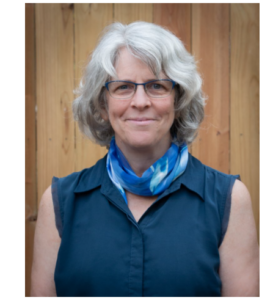
Alamance County Health Department for many years. Kathleen has been active in advocacy around food security for decades and served as board member for an agency providing advocacy and education for children of incarcerated parents. Her commitment to climate work grows out of both a sense of justice (cultivated early in her Detroit upbringing) as well as a passion for the beauty of our planet and the people who inhabit it. She currently serves as Executive Director for CACHE.
Howard Maunus, MD, AGAF: Dr. Howard Maunus is a physician with over three decades of specialized experience in gastroenterology. He earned a BS in Biology from Temple University (1983) and

an MD from Jefferson Medical College (1987), followed by an Internal Medicine residency (1990) and Gastroenterology fellowship (1993) at the Medical College of Pennsylvania.
Dr. Maunus maintained a successful private gastroenterology practice from 1993-2022 and renewed his Board Certification in Gastroenterology in 2024.
Beyond clinical practice, Dr. Maunus focuses on the intersection of healthcare and climate change. He serves on the Climate Smart Healthcare and Education subcommittees of Carolina Advocates for Climate, Health, and Equity and on the Education subcommittee of the Columbia University's Global Consortium on Climate and Health Education. He is also a Fellow of the prestigious Climate Health Organizing Fellowship at Harvard Medical School and the Cambridge Alliance.
Dr. Maunus's career exemplifies the evolution of medical practice toward approaches that recognize the connection between planetary health and human wellbeing.
Don't miss out on this virtual event! Register now!
Questions? Contact Ashley Newton, [email protected].
Alzheimer’s Cases Surpass 7 Million Nationally; North Carolina Sees Growing Impact, Urgent Call for Early Detection and Treatment

Alzheimer’s Cases Surpass 7 Million Nationally; North Carolina Sees Growing Impact, Urgent Call for Early Detection and Treatment
(Goldsboro Daily News, Deonna Starks) — For the first time, the number of Americans living with Alzheimer’s disease has exceeded 7 million, according to the 2025 Alzheimer’s Disease Facts and Figures report released today by the Alzheimer’s Association. With the disease continuing to rise in prevalence, a strong majority of Americans say they want to know their status early and are willing to take treatment—even if it comes with risks—to slow the disease’s progression.
The comprehensive annual report provides a detailed look at national and state-level data on Alzheimer’s prevalence, mortality, care costs, caregiver burden, and workforce needs. In North Carolina, the statistics paint a sobering picture.
Alzheimer’s in North Carolina: A Growing Public Health Challenge
- 210,500 North Carolinians aged 65 and older are living with Alzheimer’s—11.6% of the state’s senior population.
- The disease claimed 4,272 lives statewide, with a mortality rate of 39.9 per 100,000 people.
- 381,000 North Carolinians serve as unpaid caregivers, providing 739 million hours of care valued at $13 billion.
“This year’s report finds that the impact of Alzheimer’s on individuals and families continues to be significant,” said Christine John-Fuller, executive director of the Alzheimer’s Association – Eastern North Carolina Chapter. “Now more than ever, we need to work to advance disease research and treatments that can slow the current trajectory and help all North Carolina families affected by Alzheimer’s and other dementia.”
Alarming National Trends and Soaring Costs
Nationally, Alzheimer’s continues to escalate:
- 7.2 million Americans aged 65+ are living with Alzheimer’s, up more than 4% from last year.
- An estimated 200,000 individuals under 65 are affected by younger-onset Alzheimer’s.
- Annual care costs (excluding unpaid caregiving) are projected to reach $384 billion in 2025.
- 12 million family caregivers are providing 19.2 billion hours of unpaid care, valued at $413 billion.
- Alzheimer’s-related deaths more than doubled between 2000 and 2022.
Americans Demand Early Detection and Access to Treatment
A special report accompanying the study, American Perspectives on Early Detection of Alzheimer’s Disease in the Era of Treatment, surveyed over 1,700 adults aged 45 and older and found a strong public appetite for early detection:
- 79% of respondents want to know if they have Alzheimer’s before symptoms interfere with daily life.
- Over 90% would take a simple test, like a blood-based biomarker test, if it were available.
- The main reason? To access treatment and prepare early.
The report also found that 92% of Americans would take a medication that slows the disease’s progression, even with some risk. In fact, nearly 1 in 4 (22%) said they would accept a high level of risk.
Concerns remain, however. Many worry about insurance coverage, test accuracy, and cost. Others fear losing autonomy, such as driving privileges.
Despite these concerns, optimism is high. 81% believe new treatments to halt Alzheimer’s progression are on the horizon within the next decade, and 66% expect preventive therapies to emerge.
Early Diagnosis Is Key
John-Fuller emphasized the value of early detection: “The survey underscores the need for advancing new treatments and making early diagnosis easier and more accessible. Early diagnosis offers the best opportunity for care, management, and treatment of the disease.”
The full 2025 Alzheimer’s Disease Facts and Figures report and the accompanying special report can be accessed at alz.org/facts.
About the Alzheimer’s Association – Eastern North Carolina Chapter:
Serving 51 counties, the Eastern North Carolina Chapter offers support groups, educational programs, a 24/7 helpline, and care consultations. Visit alz.org/nc or call 800-272-3900 for more information.
‘Natural’ Moves That Induce Labor? Novant Health Fact-Checks 9 Claims

‘Natural’ Moves That Induce Labor? Novant Health Fact-Checks 9 Claims
(Novant Health, Katie Toussaint)— The last weeks of pregnancy can be rough. It was December 2024 and I was sooooo ready to move past the restless side-sleeping, the aching hips and the acid reflux that was so bad I’d wake up in the middle of the night trying not to puke. I was also eager to enjoy certain off-limits foods and beverages.
Before I ended up getting labor induced at more than 41 weeks pregnant, I tried almost every safe suggestion for natural labor induction I could find on the internet. I ate a buffalo chicken “inducer” pizza off a restaurant menu. I ate a lot of dates and dumped sriracha on takeout food. I aggressively massaged certain trigger points on my feet that Google tells you to avoid when preterm labor is a concern.
I curb-walked (see below) up and down my neighborhood streets. I got a membrane sweep (see below) at my OB-GYN’s office. I bounced around on an exercise ball (this is the only activity that made me feel significantly more pelvic pressure).
Nothing worked and I STILL got an induction.
The qu estion is: Do any of these natural suggestions on the internet actually induce labor? Are there certain ones to try or avoid? I talked with Dr. Kaitlin Warta, OB-GYN at Novant Health Coastal OB/GYN - Shipyard in Wilmington, who walked me through the methods and the myths.
estion is: Do any of these natural suggestions on the internet actually induce labor? Are there certain ones to try or avoid? I talked with Dr. Kaitlin Warta, OB-GYN at Novant Health Coastal OB/GYN - Shipyard in Wilmington, who walked me through the methods and the myths.
Membrane sweep
What it is: When a doctor uses a finger to separate the amniotic sac from the uterine wall to release hormone-like compounds called prostaglandins that can help with cervical dilation and uterine contractions. This is offered in-office when an expectant mother is at least 39 weeks pregnant, and it’s kind of like an aggressive cervical exam.
Can it work?
Yes. The data shows that this is one of the few things that can actually work, with about a 50% chance. The cervix does have to be dilated and the baby needs to be head-down. You would know typically in 24 hours if it works.
Spicy foods
Suggestions include: Sriracha, hot peppers and buffalo sauce.
Can it work?
There is no solid evidence that spicy foods work to induce labor, but if that’s what you’re craving, you are always welcome to try it. It just wouldn’t be recommended for people with reflux, which can definitely worsen in the third trimester.
Curb walking
What it is: Curb walking involves walking with one foot on the curb and the other on the street. It’s thought to shift the pelvis and help get the baby engaged in a good position for labor.
Can it work?
Maybe. Some people swear by this as part of the 90-minute Miles Circuit, which is a series of positions and movements meant to induce labor. Instructions include stretching in an “open knee chest” position, stretching in an “exaggerated side-lying” position and then moving via lunges or other upright positions that open the pelvis asymmetrically. While there’s no hard evidence that this circuit induces labor, it could realistically help during labor to get the baby better engaged in the pelvis and into a more optimal birthing position while also relieving low-back pressure.
Massaging trigger points on the feet
What it is: When massaged, specific spots on the feet are believed to release hormones that support labor. For example, the spot below the ball of the foot and on the big toe could release oxytocin, which causes contractions. This method is part of reflexology, a therapy that applies pressure to certain points on the feet, hands or ears, based on the idea that they connect to different body parts.
Can it work?
There's no hard evidence that this induces labor. But reflexology massage in general can actually help with labor pain. Also, some people are concerned that massage during pregnancy can cause preterm labor. But unless a patient has medical reasons to avoid it, massage at any point during pregnancy should be OK. It is important that a pregnant person is not flat on their back after 20 weeks, and it’s recommended that they schedule an appointment with a massage therapist with a prenatal certification. Also: there’s no evidence that a pedicure can play a role in inducing labor.
Eating dates daily
What it is: Internet recommendations instruct women to eat six to eight whole, pitted dates every day. In theory, their natural compounds could help soften the cervix, increase dilation and start contractions.
Can it work?
There’s no evidence that eating dates can induce labor. Some research shows that eating dates can make the first stage of labor shorter, but it won’t start the labor process. Dates also contain a lot of sugar, so it’s not a good option for women with diabetes or gestational diabetes.
Exercise ball
What it is: Gently bouncing, rocking and rotating the hips in circles on an exercise ball to relax and contract the pelvic floor while encouraging the baby to move down.
Can it work?
There’s no evidence this can work. You’ll find an exercise ball in just about every labor and delivery room at Novant Health hospitals. Using this can help get the baby better engaged in a more optimal position and it can help the labor process feel more comfortable, but it won’t start labor.
Castor oil
What it is: Castor oil is a vegetable oil made from the seeds of the castor plant and it’s actually an FDA-approved laxative. This ingredient is often included in induction “cocktail” recipes on the internet and is considered an old household remedy for labor induction.
Can it work?
Maybe. But while a study has shown that quality-controlled castor oil can be safely used in a hospital setting for inducing labor in women who have already birthed a child, other studies have had inconsistent results. Using it at home isn’t recommended. Castor oil can cause uterine contractions, but largely because it causes diarrhea and dehydration, which could create an imbalance in electrolytes and potentially fetal distress.
Intercourse
What it does: Semen can contribute prostaglandins, which can help with cervical dilation and uterine contractions.
Can it work?
Maybe. Because semen contains prostaglandins, this theoretically has science behind it for why it could work. But there are no actual studies to prove its effectiveness.
Nipple stimulation
What it is: Some resources suggest using a breast pump or rubbing or rolling motions to stimulate the nipples and trigger the release of the oxytocin hormone in order to get the uterus to start contracting. There are also ample warnings online that this can ramp up labor fast and could be risky.
Can it work?
Yes. Nipple stimulation can definitely cause uterine contractions, but if your cervix isn’t ripened, or prepared for labor and delivery by softening, thinning and dilating, the likelihood of actually going into full-blown labor is low. It’s still not something that is recommended for a person to do at home or before 39 weeks – it does reliably cause uterine contractions, and it can stress the baby.
The safer approach would be trying this in the hospital with a breast pump or a wet towel on the breast, where the patient can be on a fetal monitor. Some people do prefer trying this first, before moving on to using Pitocin to stimulate contractions.
No matter what you decide to try to naturally induce labor, it’s important to understand that several things need to happen in order for the body to effectively go into labor:
- The prostaglandins need to release first in order to ripen the cervix.
- The cervix needs to be soft enough to respond to uterine contractions.
- The uterus needs to contract frequently and strongly enough to cause the cervix to dilate.
- The baby needs to be in the right position for contractions to be effective and to push the baby out through the cervix.
While you can safely try a lot of these natural suggestions, there’s also something to be said for being patient during this final stretch of pregnancy. Relax when you can and take time for yourself – the sweet, sleep-deprivation phase of having a newborn at home is coming soon enough.
UNC Oncologist William Kim Highlights Immunotherapy's Role In Cancer Conquest

UNC Oncologist William Kim Highlights Immunotherapy's Role In Cancer Conquest
(ChosunBiz, Lee Yong-Seong) — The results of various types of "immune anticancer drug" treatments on patients with melanoma (a skin cancer caused by the malignant transformation of melanocytes) and kidney cancer, along with follow-up observations on patients with blood cancers such as lymphoma after receiving "chimeric antigen receptor T (CAR-T)" cell therapy, show that many have survived for a long time. Personally, I view these individuals as having "conquered" cancer.
William Y. Kim, a Korean American oncologist and professor at the University of North Carolina at Chapel Hill (UNC) School of Medicine, noted in a written interview, "The emergence of 'immunotherapy' that uses patients' own immune systems to fight cancer has made the goal of conquering cancer more realistic. As immunotherapy is applied at earlier stages with less treatment burden, I expect that we will be able to conquer even more cancers in the future."
Professor Kim studied economics and biology at Wesleyan University in the U.S. and received his medical degree from the Ivy League institution Brown University. He then completed both residency and oncology fellowship at Beth Israel Hospital affiliated with Harvard Medical School and Dana-Farber Cancer Institute, respectively. He currently co-leads the 'GU Cancer Research Program' at the UNC Lineberger Comprehensive Cancer Center, specializing in treating bladder and kidney cancer patients. Here is a Q&A with Professor Kim.
I am curious if there is anything in the anticancer drug market that could be called a 'game changer.'
Having worked as an oncology specialist and cancer researcher for just over 20 years, I want to include several drugs in the 'game changer' category, such as (protein) kinase inhibitors, CAR-T cell therapies, immune checkpoint inhibitors, and antibody-drug conjugates (ADCs). Although they have been around for a bit longer, vaccines that prevent infections related to human papillomavirus (HPV) closely associated with cervical cancer also seem to have the potential to be called game changers.
Protein kinases are essential enzymes that regulate cell growth, division, and survival. When they become abnormally activated, they induce the proliferation of cancer cells. Therefore, by inhibiting them, we can stop cancer cell growth and enhance treatment efficacy. CAR-T cell therapy is a technology that extracts T cells, a type of immune cell from the patient’s body, modifies their genes to attack specific cancer cells, and then reinjects them into the patient. It is highly effective for treating certain leukemias and other blood cancers, but has limitations for solid tumors such as lung cancer.
How close do you think we are to 'conquering cancer'?
The emergence of immune anticancer drugs that utilize patients' own immune systems to fight cancer has made the goal of conquering cancer a more realistic one. The results of various types of immune anticancer drug treatments on patients with melanoma and kidney cancer, along with follow-up observations on blood cancer patients after receiving CAR-T therapy, show that many have survived for a long time. Personally, I view these individuals as having "conquered" cancer.
This sounds like you're saying we are not far from conquering cancer.
I expect that as immunotherapy is applied at earlier stages with less treatment burden, we will be able to conquer more cancers in the future. Additionally, with auxiliary technologies developed to detect minimal residual disease (MRD) that is a very small number of cancer cells remaining after treatment, we will be able to prevent overtreatment of patients who can be cured with only surgery or radiation therapy. However, we must not forget that cancer is not a single entity (monolith) and that there is considerable heterogeneity within each cancer type. Providing personalized treatment that optimally delivers the most effective drugs to all cancer patients while minimizing side effects is the most important thing.
Will advancements in artificial intelligence (AI) technology also help in conquering cancer?
As in many other fields, the expectations for AI's role in new drug development have greatly increased. I believe one of the areas where AI will have a significant impact is in predicting treatment responses and discovering biomarkers for prognosis. The capacity to build massive data with "multi-modal AI" has become possible, and as machine learning technology rapidly advances, it is expected that biomarker-based therapies will soon be commonplace.
Multi-modal AI refers to AI that comprehensively utilizes various types of data modalities such as text, image, audio, and video. Its learning and processing targets are not limited to text, as it can handle visual and auditory information, allowing for human-like thinking. Biomarkers are indicators that can detect changes occurring in the body using proteins, DNA, RNA, and metabolites. Utilizing biomarkers allows for objective measurement of the normal or pathological state of organisms, as well as their responses to drugs.
What technology seems most promising in the anticancer drug market?
In the near future, I believe immune anticancer drugs will be the most promising. The logic of using one’s own immune cells to seek out and attack cancer cells is indisputable. The remarkable effects and durability following the administration of immune anticancer drugs have been proven through the patients I treated. I was also impressed that the patients coped well with treatment, provided there were no immune-related side effects. As protein science advances rapidly, I trust that innovations will continue and the risks of side effects will further decrease.
What about ADC and gene editing therapies?
It has been proven that ADC treatments that target PD-1 (a protein known to interfere with cancer treatment) or HER2 proteins that induce cancer cell growth are highly effective in cancers with a high tumor mutation burden (TMB). While it is not yet established, combining immune anticancer drugs with ADCs could potentially enhance treatment efficacy. Although interest in cancer treatment using gene editing technology has grown, it has not yet resulted in clinical success. Still, I believe it is too early to make judgments at this time.
What other technologies will lead the anticancer drug market?
Personally, I am very interested in the field of protein science, as I believe it will lead the next generation of anticancer drug research. The decision to award the 2024 Nobel Prize in Chemistry to David Baker, Demis Hassabis, and John M. Jumper for their innovative contributions through AI in protein research is not unrelated to this. Early evidence already shows that protein science can bring advancements to cancer treatment. Technologies related to bispecific T-cell engagers (BiTE) that target two antigens and enable new mechanisms of action demonstrate that protein science can enhance the efficacy of immunotherapy and antibody targeting.
How to Support Your Mental Health During Uncertain Times
 How to Support Your Mental Health During Uncertain Times
How to Support Your Mental Health During Uncertain Times
(Duke Today, Stephen Schramm and Jodie Valade) — In the span of a year, Karen Fernando’s world turned upside down.
She was newly separated, starting a job in the Duke Cancer Center’s Brain Tumor Clinic and settling into a state where she knew no one. A Florida native fresh from two years in California, Karen arrived in North Carolina searching for stability and a way to feel grounded amid change.
“I was going through a whole lot mentally with the move,” Karen said. “It felt like everything was hitting me at once and I just wanted to feel like it was under control.”
Karen enlisted the help of Duke’s Personal Assistance Service (PAS), which provides short-term, no-charge counseling for Duke staff, faculty and family members. Over six sessions with Senior Counselor Laurie Kovens, Karen found ways to navigate the unease of her transitions and began to see the paths and other wellness resources available at Duke to connect with her new home.
This May, in recognition of Mental Health Awareness Month, explore how Duke’s resources can support your mental and emotional well-being especially during uncertain times. From no-charge counseling sessions available through the Personal Assistance Service to wellness offerings by LIVE FOR LIFE, Duke’s employee wellness program, staff and faculty have access to a range of resources that support connection, physical health and overall well-being.
“People are continuing to look toward their employers for emotional support resources, but not everybody needs the same type of support or would be ready to access the same type of resource,” said Nichole Capitanio, Director of Duke’s Personal Assistance Service. “So I really think it’s important for us to have various entry points that appeal to a variety of people.”
Here are some Duke resources can help you in your journey toward enhanced well-being.

Duke’s Personal Assistance Service: A Partner in Mental Well-Being
As the Director of Duke’s Personal Assistance Service since 2018, Capitanio said people often ask her when they should seek help from mental health resources such as PAS.
“My answer is, if you’re thinking about reaching out, you should,” she said. “One does not have to be in crisis or deep distress to utilize PAS.”
PAS provides staff, faculty and immediate family members up to eight short-term, no-charge counseling sessions per concern. Counseling sessions are available virtually or in person at locations at Duke Raleigh Hospital, Duke Regional Hospital, Duke Clinics and PAS offices at Erwin Square.
In the past fiscal year, PAS conducted 6,847 total counseling sessions serving 2,137 clients. Both figures are roughly 12% higher than the previous fiscal year. Emotional concerns were the most common concern, followed by marital, family and relationship issues.
After their sessions, 85% of clients reported that their problem improved while 78% reported improvement in their coping ability.
“You may not feel like you need therapy, but you may want to tweak your personal skill set in managing conflict or dealing with uncertainty,” Capitanio said. “The best time to work on improving these things is when you are not in a state of distress, but when you are recognizing that something is on your mind.”
PAS will be hosting "Let Your Mind Breathe: Strategies for Managing Anxiety," a no charge four-session webinar series from noon to 1 p.m. on Fridays in May.
To schedule an appointment with a PAS counselor, contact the PAS office at 919-416-1727.
Take a Break for Puppy Snuggles
James Stroud was walking down the hallway between Duke Hospital North and Duke Medicine Pavilion when he was stopped by a simple question: “Do you want to pet Lizzie?”
“Absolutely,” Stroud immediately replied, grinning as he beelined toward the fuzzy yellow Labrador retriever sitting nearby. Lizzie rolled over on her back, paws dangling in the air as she pra

ctically begged for a belly rub as part of her job with the Pets at Duke program, Duke's pet therapy organization.
“This is everything I need right now,” said Stroud, a Clinical Pharmacist, as he knelt next to Lizzie and stroked her fur. “Thank you for bringing her.”
One week earlier, Stroud had lost his golden retriever, Ares, to old age. Spending time with Lizzie made his day “a million times better,” he said.
“Petting her has helped to heal the wound a little bit more,” Stroud said. “While she reminds me of mine that I lost, seeing her and petting her has given me a little more hope.”
The expansion of Pets at Duke in 2024 to include visits for Duke staff and faculty has been exceedingly popular, according to Kevlin Swepston, Pets at Duke coordinator. Two dogs – a golden retriever named Jerry and a yellow Lab named Rocky – are in regular rotation for monthly visits, and substitutes like Lizzie fill in when needed. Each visit averages 60 to 90 people per two-hour session, Swepston said.
Interacting with animals has been shown to decrease levels of cortisol (a stress-related hormone) and lower blood pressure. Pets can also reduce loneliness, increase feelings of social support and boost your mood.
“Just being able to pet a dog and feel the softness of the fur and see the tail wagging, the eyes looking at you – you can’t beat that,” Swepston said.
University and Health System staff and faculty can sign up for a timeslot, though drop-in visits for open opportunities are encouraged.
Tackle Stress at Your Pace
Years ago, when Duke staff or faculty would sign up for the “Success Over Stress” program through LIVE FOR LIFE, the employee wellness program, they received a single email with a long list of all the stress-management tools and resources available at Duke.
The overwhelming array of options sometimes increased stress among participants, according to Jessica Bailey, LIVE FOR LIFE Nurse Manager.
If you sign up for Success Over Stress now, the self-paced stress management program supplies tips and advice in bite-sized, regular emails tailored to staff or faculty based on work location.
“There’s no list to check off or anything that you have to do in person if you don’t want to,” Bailey said. “You just do it whenever it’s convenient for you.”
There are suggested relaxation techniques, such as deep breathing, stretching and mindfulness. There is advice on balancing work and family demands, and how to make the most out of your time to manage responsibilities. And there are recommendations for Duke-specific opportunities for wellness, such as a collection of meditations from Sarah P. Duke Gardens, meditation sessions from Duke Health and Well-being and more.
Before 2020, about one or two Duke staff or faculty members signed up for the program per month, Bailey said. Lately, the program averages 50 to 70 new sign-ups per month. That increase mirrors a national trend: A 2024 Gallup study found 49% of Americans report frequently experiencing stress.
Success Over Stress participants receive check-in emails every 30 days, and Bailey said all who engage report a decrease in stress by 90 days.
“The biggest overall benefit is that they have access to all the resources when it’s most convenient to them,” Bailey said.
Request Success Over Stress resources.
Building a Mindfulness Practice
Bridgette Un Cha Song blocks off 15 minutes on her calendar each Tuesday and Thursday, a commitment she tries not to miss.

As a Staff Assistant at the Duke Human Vaccine Institute, Song makes time for the Mindful Moment webinar on Tuesdays and Mindful Movement on Thursdays. When she skips a session, she feels it. She’s less calm, less centered and her body feels off in a way that’s difficult to describe.
“The weeks that I miss it, I really miss it,” Song said. “Some days it’s a total lifesaver.”
The 15-minute group mindfulness practice on Zoom through LIVE FOR LIFE is led by Health Education Specialist Anna Batsakes. Tuesday’s 2 p.m. Mindful Moment session focuses on breath awareness, gratitude meditation and body scans to help center participants. Thursday’s 10 a.m. Mindful Movement session includes simple Tai Chi-related movements and gestures that help attendees find awareness and presence through meditation.
About 40 to 65 people attend each session, Batsakes said. Many keep their cameras off during the Zoom session, but the option to keep video on is available to build community.
“What we’re trying to do at LIVE FOR LIFE is offer a way for people to build a practice,” Batsakes said. “And the second thing is to really help people understand that a meaningful practice doesn’t have to be an hour of doing yoga, then meditating and drinking a green juice – that 10 to 15 minutes is plenty.”
A mindfulness practice has been shown to regulate the nervous system, reduce anxiety and depression and improve sleep, according to the National Institutes of Health. And even just a few minutes can be valuable – as Song has learned firsthand.
“I have this free class every week and I don’t have to leave my office. I don’t have to drive anywhere,” Song said. “It’s right there.”
Sign up for the LIVE FOR LIFE Mindfulness Webinars mailing list here.
NC Hospitals In State Of Standby, Preparing As Measles Threat Grows

NC Hospitals In State Of Standby, Preparing As Measles Threat Grows
(WRAL, Grace Hayba) — As measles cases rise nationwide, local hospitals are on high alert for possible cases. Health officials statewide and at local levels warn communities with low vaccination rates are most at-risk for a measles outbreak.
Measles is a highly contagious virus that can cause severe complications, especially for children younger than five years old.
The North Carolina Department of Health and Human Services (NCDHHS) tells WRAL the State Laboratory of Public Health in Raleigh has tested one specimen for suspected measles in the past two weeks, the results of which were negative.
North Carolina State Epidemiologist Zack Moore told WRAL in an interview last month, “We’ve dodged a bullet so far when it comes to measles. But as the numbers of cases continue to grow across the country and globally, the odds are against us.”
>> Q&A: What to know about the measles outbreak, and how to protect yourself in NC
The CDC began updating a weekly measles dashboard to track cases in February, due to a large increase in infections nationwide. As of April 25, 2025, 884 cases had been confirmed across thirty states.
The data reports 93% of the nationwide cases have been linked to outbreaks, heightening concerns over what could happen in North Carolina.
The Triangle’s three major hospital systems all say they’ve taken steps to prepare staff for a potential increase in measles cases.
UNC Health, Duke Health and WakeMed say they’ve reviewed isolation protocols with staff on the frontlines in the health systems.
Dr. Anne Nolan, director of Infection Prevention at WakeMed, shared the first step is isolation.
“If a patient arrives with measles-like symptoms, we would ask them to wear a mask and place the patient on airborne isolation precautions as recommended by the CDC,” said Nolan.
Duke Health Pediatric Disease Specialist Dr. Tony Moody added patients would be taken to rooms where ventilation pulls air into a room, rather than out. He shared the ultimate goal is to keep patients out of high-congestion areas, such as emergency rooms, altogether.
“First and foremost, we want to keep them out of the ER if we can,” said Moody. “We even have suggestions for how doctors’ offices should handle this to try and reduce the risk in their own population."
Urgent isolation with highly contagious viruses with measles is essential to reduce spread.
“I can’t really think of another virus more contagious than measles,” warned Moody. “If you have a room of 30 kids and there are five of them that are susceptible, if a case comes in and they’re in there for any substantial length of time, those kids are going to get it. It’s not 100%, but it’s really high.”
Dr. David Wohl, an Infectious Disease Specialist with UNC Health, shared the state’s high number of communities with low vaccination rates is cause for concern.
“The biggest threat is that we still have people who are not vaccinated,” said Wohl. “If we were all vaccinated or at least 95% of us, this wouldn’t be an issue. It’s people who are unvaccinated, largely children, who really are susceptible and then can spread it to others who are not vaccinated.”
Two doses of the MMR vaccine are 97% effective against measles infection, according to the CDC.
The NCDHHS Kindergarten Immunization Data Dashboard reports 92.3% vaccination compliance statewide. The MMR (measles, mumps, and rubella) vaccine is required for public and private schools.
Wake County’s vaccination compliance was 92.5%, Durham County reported 91.5% compliance and Orange County reported 96.9% compliance.
A 95% vaccination rate is considered the threshold for herd immunity – the level of vaccination or immunity needed to prevent the spread of infectious diseases within a community.
“This is different than COVID where we are all susceptible in the beginning,” explained Wohl. “This is something where most of us are immune, but some of us are not. Increasingly over time, we’ve seen people more immune to measles because they’re not getting vaccinated.”
Navigating vaccine hesitancy starts with direct communication between medical personnel and families, doctors say.
Moody shared his own approach to speaking to his pediatric patients and their parents has shifted.
“I think what has changed for me personally is that I need to make sure I am approaching all of this with a sense of sensitivity and recognize parents really do want to do the right thing,” reflected Moody. “There is no parent coming in saying, ‘I want to do wrong by my child,’ so how can I give them the information they need to really make an informed decision – and, if they choose not to, that they really understand the risks.”
Wohl added ‘consistent and clear messaging’ are crucial for North Carolina physicians as cases climb in other states.
“We do see as the threat level increases, people are more likely to pick up on some of that messaging,” said Wohl. “I think the best we can do is be very clear, very sincere, and transparent. We know there are a lot of different messages out there, some of which are not correct. We have a very long history with measles and with the vaccine.”
He continued, “We also know a lot about what measles does to people, and it’s not good. We really do encourage people to think hard about this given some of the devastating outcomes we’ve seen in Texas.”
Doctors warn that increasing awareness of signs and symptoms among staff and the public is vital as cases climb nationwide.
“It is really difficult to diagnose something if you don’t think about it,” said Moody. “It’s reminding people: What does measles look like, what are the symptoms, and what are the things to look for.”
Wohl further added UNC Health Systems have hosted a series of webinars with internal staff to increase awareness about measles symptoms.
Discussions and training within UNC’s health system involved personnel at all levels of the health system including frontline clinicians, nurses, emergency room staff, ambulatory staff and hospital administrators.
Wohl shared that the goal is to host public webinars soon to further engage with and inform the public.
“It’s really a balance of if you do it too soon, or too late, and finding that sweet spot,” said Wohl. “Right now, we haven’t had cases in North Carolina recently so we can kind of prepare but really be at the ready.”
Nolan added WakeMed is continuing to share health alert network memos and is actively reviewing policies with staff.
“We work closely with Environmental Health and Safety and Infectious Diseases,” Nolan added. “We communicate with the local health department as needed as well.”
In addition to having lower vaccination rates, Moody cautioned that North Carolinians – particularly those in the Triangle – may face a heightened risk of measles due to a larger number of patients receiving treatments that weaken the immune system.
“People may be getting treatment for things that would reduce their ability to fight it off. We’ve got people who are getting treatment for cancer or autoimmunity, and they are at risk as well,” he explained. “Having it jump into this area, puts us at risk not just for people who have chosen not to be immunized for whatever reason, but also people who were immunized and still are susceptible because of that. It’s a double-edged risk.”
All three hospital systems say lessons learned from COVID-19 place them in a better position to respond to another threat, like measles.
Wohl shared the focus is on staying ahead of the next outbreak.
“I think all the time about what we could have done had we known what was going to happen with COVID-19, back in early 2020. We don’t want to be in that situation again,” the UNC physician said. “Everything we’re doing is: how can we do better, given the knowledge we have now that we wish we had for COVID-19 – but we do for measles, or bird flu, or any other threat coming along?”
WRAL asked if UNC, Duke and WakeMed hospitals have considered setting up dedicated measles wards. While none currently anticipate the need for separate units, they say protocols are in place to create them if case counts warrant it.
🎉It's New Member Monday!🎉

The NCMS is excited to welcome these new members!
We are thrilled to have you!
Lindsey N. Ahearn, PA
Ramona P. Albrecht, PA-C
Emily C. Ashe, DO
Ibtisam S. Atamna, DO
Elizabeth S. Bogan, DO
Lydia H. Chang, MD
Anton J. Crepinsek, III, MD
Alexis W. Damish-Kemp, DO
Alyssa M. DeMutis, DO
Elliott T. Draughn, DO
Thomas T. German, MD
Samuel R. Gordon, MD
Paige A. Harrison, DO
Andrea Hodapp, MD
Jonathan Y. Y. Hong, MD
Eric A. Hudspeth, PA
Mariana F. Llanos, MD, MPH
Carielys M. Lopez Luna, MD
Praveena Mylvaganaam, MD
Benjamin A. Obando, MD
Mindy Pham, DO
Sarah B. Purdy, MD
Eduardo Reyes Bruno, MD
Timothy J. Seneker, MD
Michael J. Sundborg, MD
Sarah E. Taws, DO
Patton W. Thompson, MD
Robert M. Tuosto, DO
Jas Virk, MD
Not a member?
Want to be?
Joining is simple.
Visit our membership center here.
What do you get for your NCMS dues dollars?
From advocacy to practice solutions, your membership has its advantages.
The NCMS employs a team of legislative, regulatory, and payer experts who closely monitor and respond to the latest developments that impact the profession of medicine and the care of patients. LEARN MORE…
Take advantage of leadership development opportunities through our award-winning Kanof Institute for Physician Leadership (KIPL) programs such as the NCMS Academy for FUTURE Healthcare Leaders, the NCMS Academy of ADVANCED Healthcare Leaders, and the NCMS Academy of EXECUTIVE Healthcare Leaders. LEARN MORE…
From special rates to specialized insurance options for yourself or your practice, take a look at your options. LEARN MORE…
Plan for your future with these retirement solutions. LEARN MORE…
The Community Practitioner Program (CPP) and CPP 2.0 offer loan repayment for practicing in rural or under-served areas. LEARN MORE…
Gain access to resources designed to improve the health and well-being of healthcare professionals. LEARN MORE…
Receive our daily Morning Rounds e-newsletter to stay up-to-date on all the issues impacting medicine.
Get the latest legislative developments happening at the state and national level delivered to your inbox with our Political Pulse video series, as well as breaking Advocacy Alerts.
Events and Networking Opportunities
Throughout the year we host a number of NCMS Socials, Town Halls, and Regional Meetings across the state to get members together for fun and to learn how to make North Carolina the healthiest state in the country!
Plastic in Our Minds: Microplastics Discovered in the Human Brain

Plastic in Our Minds: Microplastics Discovered in the Human Brain
(Novant Health, Camille Prairie) — The world is awash in tiny plastic particles. And scientists found an ingenious way to drive home the point earlier this year when they announced we all have the equivalent of a plastic spoon sitting in our brain.
It sounds terrible, to be sure. But what does it mean to our health? And what should we do next?

Dr. Elizabeth Kuhn, a neurosurgeon at Novant Health Brain & Spine Surgery, said it’s too early to know for sure.
Microplastics, plastic particles that are five millimeters or smaller, are all around us. They’re considered potentially harmful because they carry chemicals that can leach into our air, water and food. Remember, plastics are made from petrochemicals. And they don’t break down quickly, which is why they’re so prevalent.
Still, going completely plastic-free isn’t realistic, Kuhn said. So, what can we do to limit our exposure in daily life? Kuhn shares her perspective and practical ways to protect our health.
How worried should people be about microplastic exposure?
It’s not ideal to have microplastics entering our bodies, so I’m not going to tell people how worried they should be or not. What I will say is that we don’t fully understand what it means for microplastics to be in our bodies. We don’t have a clear picture of how it’s impacting our health.
I advise anyone worried to focus on small ways to reduce the amount of plastic in their life. I’d also advise specific populations to take extra care to minimize plastic exposure – specifically, parents of young children, pregnant women, and women planning to have children.
While we don’t know the effects of microplastics at this point, today’s children will continue to be exposed to their impacts the longest. Their brains are also still developing and are particularly susceptible to any potential harm from microplastics. If anyone can benefit from reduced exposure to plastics, it’s them. The people who can take responsibility for lowering that exposure are their parents. That includes people who are preparing to become parents.
What are some examples of specific, accessible ways to reduce plastic exposure?
One of the most significant ways to reduce plastic exposure is by not microwaving food in plastic containers. Research shows that heat combined with plastic can significantly impact our exposure to microplastics in daily life. So even if you’re storing food in plastic containers, take the extra step to put it on a plate to warm it up.
Other recommendations I make are to avoid using plastic utensils and cookware. A simple example is replacing a plastic spatula with a stainless steel one.
You can also consider:
- Replacing a plastic water bottle with a stainless steel or glass bottle
- Replacing plastic food storage containers with glass food storage containers
- Buying clothes that are made with natural fibers (because synthetics like polyester are made from plastic)
Don’t feel like you need to completely clean out your plastic Tupperware or throw everything made with polyester out, though. This can be a gradual process.
As research on microplastics continues to be published, how can we make sure we’re getting our information from trusted sources?
We all get our information from social media. I’m no exception to that. I’d advise anyone to remember to take what we see on social media with a grain of salt. Could it be true? Absolutely. But when we make decisions about our health, we shouldn’t rely solely on social media for information.
If you're making decisions about your health, consult a trusted primary care physician. You can also fact-check something you see on social media on a .gov or .org website, or on the website of a reliable healthcare organization, like the Centers for Disease Control and Prevention.
On the flip side, I love social media for helping me consider new angles on known health problems. For example, if you hadn’t considered plastic water bottles as a source of microplastics, you’re probably going to find a TikTok on why you should get a stainless steel water bottle instead.
We don’t know if microplastics cause cognitive decline, but that doesn’t mean it’s not essential to watch for. What are some signs of cognitive decline?
Regardless of the cause of cognitive decline, there are some telltale signs you can watch out for in yourself or family members.
These include:
- Forgetting how to do everyday tasks.
- Getting lost on your way to or from a familiar place.
- Forgetfulness or memory challenges.
We often write these things off as signs of old age, but that’s not always the case. With any of these symptoms, particularly if they’re happening at a younger age, significantly impacting your quality of life, or happening very quickly, it’s always a good idea to see a neurologist.
The concern about microplastics in our brains highlights what we can do to keep our minds healthy: Socializing regularly, engaging our brains, exercising and leading a healthy lifestyle.
How important is it for us to focus on microplastic exposure and prevention in the context of our overall health?
While microplastics are a concern, the most significant factors that determine our overall health are socioeconomic status, a healthy diet and regular physical activity.
That’s not to say a conversation about microplastics in the brain isn’t worth having. Still, if it’s a choice between enrolling your child in an exercise program and switching your Tupperware from plastic to glass, the exercise program will have a greater impact.
If you’re worried about the impact of microplastic exposure on you or a family member, you can always address your worries with your doctor or primary care physician.
NC Hospital Safety Grades Show Wide Range From A To D
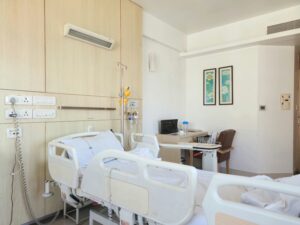
NC Hospital Safety Grades Range From A To D
(WRAL)— A newly released report on hospital safety grades shows a wide variance for hospitals in central North Carolina. A non-profit group once again give a local hospital the worst mark in the state.
Granville Medical Center in Oxford was given a D by the Leapfrog Group in its spring report card that came out on Thursday morning. The facility has received D on each report card since Fall 2023.
All hospitals in the Triangle received A or B grades.
Those receiving A’s included:
- Duke Raleigh Hospital
- Duke Regional Hospital
- Duke University Hospital
- WakeMed Raleigh Campus
- WakeMed Cary Hospital
- WakeMed North Hospital
- UNC Hospitals, Chapel Hill
- UNC Health Johnston, Clayton
- UNC Health Pardee, Hendersonville
The grades are based on overall hospital safety with a focus on preventing medical errors. You can see the complete list for North Carolina and other states here.
“We are proud of our teammates and physicians, who are dedicated to providing excellent care for all of our patients,” said Dr. Wesley Burks, CEO of UNC Health. “These rankings and other recognitions are a testament to their commitment and important tools as we examine ways to continuously improve our hospitals and clinics across North Carolina.”
WakeMed Raleigh and WakeMed Cary were also among the 346 U.S. hospitals designated as “Straight A” hospitals for achieving an “A” for spring 2025 and sustaining the grade for five or more grading rounds. This is a designation is earned by about 12% of all eligible hospitals.
WakeMed Raleigh Campus and WakeMed Cary Hospital have earned an "A" grade for five or more grading rounds, giving them a “Straight A” designation. This is the eighth time in a row those hospitals have earned the honor. The "Straight A" designation represents about 12% of all eligible hospitals.
Perinatal Addiction Clinic Opens in Eastern North Carolina
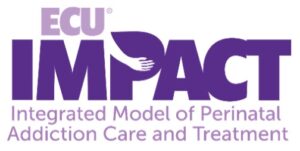
Perinatal Addiction Clinic Opens in Eastern North Carolina
The ECU Health IMPACT Clinic –the first integrated perinatal addiction clinic in eastern North Carolina– will begin accepting patients on May 7, 2025. Led by Dr. David H. Ryan and located at the Brody Outpatient Center-Ob/Gyn in Greenville, the clinic will provide integrated perinatal and addiction care. This includes opioid and alcohol addiction treatment and access to additional resources including social work, lactation support, and mental health care. The clinic will serve patients experiencing substance use disorders and will provide evidence-based, stigma-free, patient-centered care that has been demonstrated to improve prenatal, peripartum, and postpartum experiences and outcomes for moms, babies, families, and communities.
Patient referrals can be directed to ECU ob/gyn services. For guidance about whether a referral is appropriate, contact NC MATTERS at (919) 681-2909.
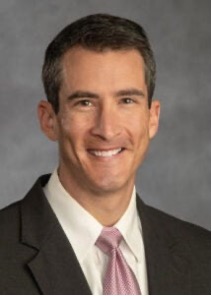
Division of Mental Health, Developmental Disabilities and Substance Use Services Webinars in May

Division of Mental Health, Developmental Disabilities, and Substance Use Services Webinars in May
(NCDHHS)— NCDHHS' Division of Mental Health, Developmental Disabilities and Substance Use Services is hosting two webinars in May. Closed-captioning and American Sign Language (ASL) interpreters will be provided.
- The division will host the Inclusion Works Strategic Plan webinar on May 2 from 2 to 3 p.m. Inclusion Works is rolling out the five-year plan to promote competitive integrated employment for individuals with Intellectual and Developmental Disabilities (I/DD). Join the webinar for a review of the new plan. Register for the Inclusion Works Strategic Plan webinar.
- The division will host its monthly Side-by-Side webinar on May 5 from 2 to 3 p.m. Join us to learn about policies and programs that affect the MH/IDD/SU/TBI community. Side by side, we will work together to better understand and improve our system. We will listen closely to one another and share ideas for public policy that will improve lives in NC. Register for the Side-by-Side webinar and see a flyer for more information.
HOPE Technique Shows Promise For Long-Term Donor Lung Preservation

HOPE Technique Shows Promise For Long-Term Donor Lung Preservation
(International Society for Heart and Lung Transplantation)— A study on donor lungs preserved outside the body before transplantation demonstrated that the hypothermic oxygenated machine perfusion (HOPE) technique is a safe and effective lung preservation method, even with total out-of-body times approaching 20 hours.
Jitte Jennekens, MSc, organ perfusionist/transplant coordinator at the UMC Utrecht in the Netherlands, presented the study results at today's Annual Meeting and Scientific Sessions of the International Society of Heart and Lung Transplantation (ISHLT) in Boston.
"This technique is being used to preserve donor livers and kidneys and is being studied in clinical trials for hearts, but it hasn't gotten that much attention for lung preservation yet," said Jennekens.
Ex vivo lung perfusion (EVLP) is a technique that allows for donor lungs to be maintained, assessed, and potentially reconditioned outside of the body before transplantation. The lungs are connected to a pump and a ventilator and perfused with a solution that functions as a physiological fluid.
The UMC Utrecht developed its HOPE protocol to safely extend perfusion times, to maintain the viability of the lungs overnight until the transplantation can be performed during the day.
Donor lungs selected for EVLP are typically transported on ice and then warmed to 37 degrees Celsius using a normothermic EVLP (called nEVLP) protocol for functional assessment. Following nEVLP, the lungs are then returned to ice until the transplant begins.
The HOPE protocol eliminates the second period on ice by assessing the lungs during one hour of nEVLP and then preserving the lungs at 12 degrees C until the procedure.
Jennekens presented data comparing the outcomes of 12 cases conducted using the nEVLP-HOPE protocol with a historical cohort of donor lungs transplanted directly into patients without ex vivo lung perfusion.
The control cohort included 118 cases of lungs transplanted directly without perfusion between 2017 and 2022. The cases were performed between 2022 and 2024 using the HOPE protocol for logistical reasons.
No lungs in the nEVLP-HOPE group were rejected for transplantation, and short-term outcomes were similar between the study and control groups.
"Our findings indicate that HOPE is a safe and effective lung preservation method after a period of normothermic EVLP," Jennekens said.
Jennekens said the next step is to determine the preservation strategy that will be most beneficial to a specific type of donor lung.
"Extending perfusion times for donor lungs outside of the body will allow for a future in which donor lungs can be optimized with different therapies," she said.
CHW Integration: Strategies For Impact And Sustainability
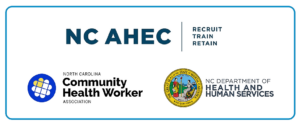
Webinar Series
CHW Integration: Strategies for Impact and Sustainability
You're invited to a two-part webinar series, CHW Integration: Strategies for Impact and Sustainability, focused on advancing and sustaining Community Health Worker (CHW) integration across North Carolina’s healthcare system.
Hosted by NC AHEC, the North Carolina Community Health Worker Association (NCCHWA), and Freedmen’s Consulting, this series will explore strategies to strengthen CHW programs, align them with value-based care models, and support long-term sustainability through practical financing approaches.
These sessions are designed for CHWs, community-based organizations, healthcare practices, care management agencies, health system population health teams, and health plans.
This event is sponsored by NC Division of Health Benefits (Medicaid) at no cost to participants.
Part 1: May 19, 2025 | noon - 1 p.m. | REGISTER
Explore how CHWs are driving improvements in population health, enhancing care experiences, and helping to reduce costs. As healthcare moves from fee-for-service to value-based care, CHWs are becoming essential partners in delivering whole-person, community-centered care.
Tim P. McNeill, RN, MPH, will lead this session, highlighting the evolving role of CHWs and sharing promising models of integration from Alabama, New York, and Texas.
Part 2: June 4, 2025 | noon - 1 p.m. | REGISTER
Learn how financing strategies can support and sustain CHW integration across healthcare settings. As value-based care continues to expand, understanding how to fund and grow CHW programs is critical.
Tim P. McNeill, RN, MPH, will review current payment models and discuss their effectiveness in supporting CHW roles. This session includes a care transitions case study and tools to help develop a sustainable CHW integration strategy.
We hope you'll join us for one or both sessions! For questions about NC AHEC CHW Program, please visit our webpage .
Duke Neurologist Shares 3 Ways to Keep Your Brain Young At Any Age

Duke Neurologist Shares 3 Ways to Keep Your Brain Young At Any Age
(Duke Today, Stephen Schramm) — Several times a week, Ginger Newbold rises at 5:30 a.m. to lift weights and walk the treadmills at Planet Fitness. Now in her early 60s, she also sticks to a brain-healthy diet, loading up on blueberries and salmon. Her routine keeps her body strong, but it’s her mind she’s really protecting.
Both of her parents faced dementia before they died, and witnessing their decline left a lasting impact. Determined to chart a different path, Newbold now makes brain health a top priority.
“I just want to lead the kind of lifestyle that could ward off some of the cognitive decline I saw in my parents,” said Newbold, the Administrative Manager for the Gross Anatomy Lab and Human Fresh Tissue Lab at Duke University Hospital.
While unavoidable factors such as age and a family history of dementia can increase your risk of cognitive issues, experts point out that there are brain-healthy habits you can adopt to potentially keep your mind sharper longer.
“Our brain age doesn’t always correlate with our chronological age,” said Duke Neurologist Dr. Andy Liu, an Associate Professor in Neurology and Pathology and Associate Biomarker Core Lead in the Duke/UNC Alzheimer’s Disease Research Center. “I might see someone who’s in their 90s, but they act more like they’re in their 70s. That all speaks to what they do on a day-to-day basis.”
Inspired by Newbold’s mission, here are a few of the ways you can keep your brain healthy at any age.
Move your body
After the death of her mother, Betty, in 2019, Newbold committed herself to maintaining the health of her brain. To do that, she knew she’d have to make sure her entire body was healthy as well.
She went to the gym many mornings and tried to fit as many walks as she could into her daily routine. She reshaped her diet, eschewing red meat and adding more fiber-rich vegetables such as broccoli and healthy protein-packed snacks such as nuts and Greek yogurt.
“I feel a whole lot better,” Newbold said. “I have more energy. I don’t feel as drained at the end of the day. I’m able to stay sharp.”
Liu, who often consults with patients who are at risk of – or experiencing – cognitive decline, said that there’s a direct connection between behaviors that improve cardiovascular health and brain function.
Regular exercise – a good goal is 30 minutes of activity per day, five days per week – and diets rich in antioxidants, fiber and fatty acids, and low in saturated fats and added sugars help keep the cardiovascular system healthy and able maintain blood flow and oxygen delivery to the brain.
“We like to say, ‘What’s healthy for the heart is healthy for the brain, too,’” Liu said. “There’s a lot of overlap there. So controlling blood pressure, cholesterol and high blood glucose are great for the brain long-term.”
Stay social
During the pandemic lockdown, Liu saw firsthand how reduced personal interaction—especially among older adults—took a toll on mental health and cognitive function.
“When people were isolated, I saw a lot of people significantly decline very quickly,” Liu said.
Activities associated with social connections require significant brain function. Without activating the parts of the brain associated with listening and responding to conversations, picking up non-verbal cues, or putting your thoughts into spoken words, they can grow weak.
Liu said its similar to how muscles that aren’t used begin to lose their power.
That’s why it’s important to maintain social connections and put yourself in situations where personal interactions occur.
Whether it’s talking with friends and family or being an active member of your wider community, the more social connections you can make, the healthier your brain will be.
“Having conversation with family members or just going out and hanging out with friends has a lot of good brain health in it,” Liu said. “You have a lot of conversations and use a lot of executive function.”
Test your mind
One of the joys of Newbold’s position at Duke is that she’s constantly learning. She cherishes opportunities to hear about how her lab helps surgeons enhance their skills. She enjoys digging deeper into the digital tools – such as OnCore and SAP – that make her job as an administrator easier.
“Since I joined Duke, I feel younger because every single day I have the opportunity to learn something new and keep my brain engaged,” Newbold said.
Liu said learning a new language, cooking new types of food or picking up a new musical instrument are effective ways to engage different sections of your brain. The important thing, Liu said, is to find a new hobby or interest that you enjoy and are more likely to stick to.
Duke staff and faculty can activate their minds with free access to more than 21,000 video lessons on a range of topics with LinkedIn Learning. Older, or retired, Duke community members can connect with others while exploring topics such as art, music and history with Duke’s chapter of the Osher Lifelong Learning Institute.
One brain-healthy habit Newbold has adopted is starting each day with some of the New York Times’ daily puzzles, such as Wordle and the mini crossword. Duke community members can get free access to the New York Times through Duke University Libraries.
Liu said weaving fun brain exercises into your day is a helpful habit. To make it even better, he recommends solving a variety of puzzles – perhaps adding number-based games such as Sudoku – to give your brain a more-comprehensive workout.
Test your knowledge of Duke places by clicking the image above to solve Working@Duke's custom crossword puzzle. You can download a printable PDF version here. You can find the answers to the puzzle by clicking here.

Test your knowledge of Duke places by clicking the image above to solve Working@Duke's custom crossword puzzle. You can download a printable PDF version here. You can find the answers to the puzzle by clicking here.
NCMS Celebrates Passage Of Prior Authorization Reform, Annual White Coat Day, And Legislative Reception

NCMS Celebrates Passage Of Prior Authorization Reform, Annual White Coat Day, And Legislative Reception
RALEIGH, NORTH CAROLINA — The North Carolina Medical Society (NCMS) hosted its annual White Coat Day and Legislative Reception on Wednesday, April 30, 2025. It was a day of celebrations, as the NCMS also cheered the passage of the CARE FIRST Act.
NCMS Interim CEO Steve Keene says, “Yesterday was a great day to be a member of the North Carolina Medical Society. Our members advocated for patients across the state when they met with legislators to discuss ways to keep North Carolinians healthy and safe. NCMS has been urging members of the General Assembly to pass the CARE FIRST Act (HB 434)—a piece of legislation that reforms the prior authorization process—and we were pleased to see the House pass it during White Coat Day.”
NCMS has prioritized the CARE FIRST Act this legislative session.
This common-sense reform will require health insurers to:
- Set minimum clinical standards for provision of care.
Consult with the patient’s physician before refusing to cover medical care. - Set time frames and make timely decisions based on treatment urgency.
- Promote continuity of care for patients.
- Set limits on retrospective denials.
- Hold health insurance companies responsible for the outcome of denied care.
“The physicians and medical professionals NCMS represent have told us prior authorization reform will make healthcare more efficient and effective,” said
NCMS VP of Advocacy John Thompson.
“We are thrilled to see yesterday’s success and will continue to advocate for NC’s patients and medical professionals at the General Assembly.”
About the North Carolina Medical Society
The North Carolina Medical Society is the oldest professional member organization in North Carolina, representing physicians and physician assistants who practice in the state. Founded in 1849, the Society seeks to provide leadership in medicine by uniting, serving and representing physicians and their health care teams to enhance the health of North Carolinians.
Second Opinions Are A Good Idea—But There Are Caveats

Second Opinions Are A Good Idea—But There Are Caveats
(AMA, Adam D. Bitterman, DO) — No two diagnoses or injuries are identical, and physician opinions often differ. Medicine blends data, experience and judgment. This inherent nuance often leads patients to seek a second opinion—a crucial aspect of health care management and patient empowerment. When diagnoses are complex and treatments multifaceted, another physician’s perspective can be invaluable.
Patients seek second opinions for various reasons: confirming a diagnosis, exploring alternative treatments, or clarifying a recommendation that seems aggressive or unclear. This process allows access to a broader range of expertise, empowering patients to make informed decisions. A second opinion might validate the initial diagnosis or offer a different viewpoint, potentially altering the treatment plan. Sometimes, it can even uncover a misdiagnosis or reveal less invasive options.
Still, second opinions can have drawbacks.
Additional consultations mean more appointments, tests and time, leading to increased costs and potential emotional strain. Furthermore, differing opinions can create tension between physicians and within the patient-physician relationship. Patients might feel caught between conflicting recommendations, while physicians might feel their judgment is questioned. This situation can sometimes necessitate a third opinion.
Ultimately, the decision rests with the patient, and we understand and appreciate this. Patient autonomy is paramount, and seeking additional input is a crucial part of that right. At its best, medicine is collaborative, and second opinions can enhance the quality and safety of care.
There are many benefits
Second opinions can also reduce medical errors. Despite rigorous training, diagnostic errors occur. A fresh perspective can catch something missed due to cognitive bias, time constraints or human error. Studies show second opinions lead to significant changes in diagnosis or treatment in a substantial percentage of cases, especially in oncology, orthopaedics and neurology.
Furthermore, when approached transparently, second opinions can build trust between patients and physicians. A physician encouraging a second opinion demonstrates confidence and prioritizes the patient's understanding. This fosters trust and respect, strengthening the therapeutic alliance and improving adherence to the treatment plan.
The AMA Code of Medical Ethics, for example, says that “physicians’ fiduciary obligation to promote patients’ best interests and welfare can include consulting other physicians for advice in the care of the patient or referring patients to other professionals to provide care.”
It’s different than “doctor shopping”
However, there's a distinction between legitimate second opinions and "doctor shopping."
Doctor shopping involves visiting multiple providers to obtain a desired diagnosis or treatment, regardless of previous medical advice. This behavior, driven by distrust, dissatisfaction or manipulation, can fragment care, leading to duplicated tests, conflicting treatments, and potential drug interactions. It also undermines the physician-patient relationship.
The difference between a genuine second opinion and doctor shopping lies in the intent.
One represents a proactive, informed approach, while the other signals distrust or manipulation. Recognizing this difference is crucial for both patients and physicians and requires open communication and mutual respect.
Create a healthy relationship
Physicians should never view second opinion requests as personal affronts. Instead, they represent a patient's desire for understanding, which physicians should respect and encourage. Handling these requests professionally maintains a healthy doctor-patient relationship.
When asked for a second opinion, physicians should guide patients toward qualified specialists. A collaborative approach prioritizes patient well-being and reflects confidence in the physician’s own judgment while acknowledging the value of diverse perspectives.
The second-opinion physician must offer an objective perspective without appearing to "steal" the patient. While some patients may switch providers, the second-opinion physician should focus on clinical facts, avoid criticizing prior care, and present recommendations professionally. The goal is to contribute to the patient's decision-making, not to compete for their loyalty.
Finally, patients must choose their path forward. Upholding patient autonomy means respecting their choice, whether they return to the original physician, switch to the second, or seek a third opinion. Physicians should foster trust, ensure clarity, and support the patient's decision. Second opinions can also be learning opportunities for physicians, providing insights into alternative approaches and enhancing their practice.
Second opinions are a vital tool for patient empowerment, safety and informed decision-making. They can lead to better outcomes and foster trust but also present challenges that require careful navigation. Doctor shopping, conversely, threatens the integrity of care.
When both patients and physicians approach the process in good faith, second opinions elevate the standard of care and reinforce medicine's collaborative spirit.
Life Expectancy For Women In Some Southern States Has Barely Budged In More Than 100 Years
 Life Expectancy For Women In Some Southern States Has Barely Budged In More Than 100 Years
Life Expectancy For Women In Some Southern States Has Barely Budged In More Than 100 Years
(NBC News, Lindsey Leake) —
How long you live depends on where you live, new research suggests.
Americans’ life expectancy increased throughout the 20th century, although in some states, particularly in the South, people aren’t living much longer than they were 100 years ago. It’s worse among women.
Researchers at the Yale School of Public Health analyzed the death data of 77 million women and 102 million men born from 1900 through 2000. The findings, published Monday in the journal JAMA Network Open, showed that nationwide life expectancy for women increased from 73.8 to 84.1 in that time frame, while it jumped from 62.8 to 80.3 for men.
Scientists and health officials calculate life expectancy at birth as a way of understanding a country’s health over time. How long people in the United States lived since the last century varied drastically by state.
“What was surprising to me was that for some states, especially for women, there’s basically no change,” said study co-author Theodore Holford, a senior research scientist in biostatistics at Yale University. “Over 100 years, in some of these Southern states, they improved less than two years in the framework of all of the medical advances that we have seen during the 20th century.”
The bottom five states for life expectancy among women born in 2000, compared to women born in 1900, are:
- West Virginia, 75.3, up from 74.3.
- Oklahoma, 76, down from 76.7.
- Kentucky, 76.5, up from 74.9.
- Mississippi, 76.6, up from 73.2.
- Arkansas, 76.6, up from 75.7.
Southern men born in 2000 also tended to have lower life expectancies, though they showed greater improvements than women since 1900:
- Mississippi, 71.8, up from 62.3.
- West Virginia, 72.6, up from 63.7.
- Alabama, 72.6, up from 62.5.
- Louisiana, 72.9, up from 61.5.
- Tennessee 73.4, up from 63.6.
Not all Southern states show lower or stalled life expectancies for people born in 2000.
Florida, Texas and Virginia are among the Southern states featured in the top 20 of life expectancy for both men and women born in 2000.
States outside the South that ranked in the bottom 10 for both sexes include Ohio and Indiana.
The study also highlights life expectancy by state and sex at the midway point of 1950.
Men in particular showed greater improvement during the first half of the century. In North Dakota, for example, male life expectancy jumped 10 years from 66.4 in 1900 to 76.5 in 1950, but only one year, 77.8, from 1950 to 2000.
Data reflects the state in which a person died, not where they were born.
It’s well-established that women live longer than men, but this latest research unveils geographic disparities in life expectancy at a turning point in federal public health administration. Health and Human Services Secretary Robert F. Kennedy Jr. lamented the state of the nation’s health care system in an April 10 statement that was also published in the New York Post.
“Our country’s health is declining. America has the highest rates of chronic disease in the world,” Kennedy said. “We rank last in terms of health among developed nations. And life expectancy is declining for many groups of Americans.”

Why is life expectancy lower in the South?
The Yale study claims to be the first to analyze historic state mortality trends by birth cohort, meaning entire generations are tracked.
Population health research more commonly involves a metric called period life expectancy, which estimates influences on mortality over a select year, such as during a pandemic.
“The idea here is to try to pick up on generational factors,” Holford said. “There are lots of factors related to health that are more closely tied to generations than a calendar year.”
Meeting Patients Where They Are: Mobile Medicine In Rural NC

Meeting Patients Where They Are: Mobile Medicine In Rural NC
(NC Health News, Will Atwater) — Rural residents often face significant barriers to accessing health care. Power outages, challenging travel and extreme weather events — such as hurricanes, heat waves and floods — only worsen the challenges posed by limited access to clinics and medical specialists.
This scenario recently played out in western North Carolina, where Hurricane Helene left many rural health care facilities inoperable. In response, the state deployed some mobile medical units to deliver care directly to affected communities.
But ahead of future disasters, more help may be on the way.
Mission Mobile Medical Group, based in Greensboro, announced in February that it was awarded up to $26 million in federal dollars “to develop the next-generation mobile clinic under the Platform Accelerating Rural Access to Distributed and Integrated Medical Care (PARADIGM) program,” according to a news release.
The mobile health care company will use the funding to design and build mobile “medical suites” — self-contained clinical units tailored for rural health systems. The goal: deliver hospital-level care and advanced diagnostics to communities across the country, according to the release.
“Only 12 percent of physicians practice in rural communities,” said Travis LeFever, chief executive officer of Mission Mobile Group. “With such limited access to medical care and emergency services, rural families — especially children — face barriers to care that should make us all question our priorities, political policies, and our public and personal principles.”
Mobile clinics could help eliminate the need for long-distance travel, particularly for residents of remote areas where building a permanent facility isn’t feasible. They also offer vital access for hard-to-reach populations, such as migrant workers or fishing communities.
The $26 million initiative is funded through the Biden-era Advanced Research Projects Agency for Health (ARPA-H). Although the Trump administration has canceled or frozen billions of dollars in other federal programs, the funding awarded to Mission Mobile has not, so far, been affected, according to LeFever.
Delivering assistance
While mobile clinics aren’t new, they’re becoming an increasingly vital part of the health care system — especially in rural “health care deserts” and in the wake of natural disasters, when traditional brick-and-mortar facilities may be inaccessible.
But even in calmer times, staffing rural clinics can pose a major challenge.
“In rural settings, typically, you don’t have as many providers [and] specialist positions,” said Lyn Jenkins, the executive director of the Community Care Clinic of Dare in Nags Head on North Carolina’s Outer Banks. “Three of the counties in eastern North Carolina don’t even have a practicing dentist.”
Happy Birthday to Our Members Celebrating This Month!
 Grab your party hats and noisemakers and let’s celebrate!
Grab your party hats and noisemakers and let’s celebrate!
NCMS Member Birthdays May 2025
Ole S. Aassar, MD
William B. Abernethy, Jr., MD
Surafeal G. Abraha, MD
Peter K. Acheampong, MD
Maureen N. Achuko, MD
Douglas H. Adams, MD, MPH
Van L. Adams, MD
Henry T. Adkins, Jr., MD
Kerry E. Agnello, DO
Lindsey N. Ahearn
Julian S. Albergotti, Jr., MD
Dustin B. Alderson, MD
Fuad Y. Aleskerov, MD
Chelley K. Alexander, MD
Sridevi Allu, MD
Terrence P. Almengual, MD
Nimia J. Alston, MD
Harry T. Ameredes, MD
Ugonna A. Anyanwu, MD
Carly Applebaum
Ginette A. Archinal, MD
Victoria A. Arendt Kosec, MD
Brooktiete Asseres, MD
Emily L. Averbook, MD
Ramesh Avva, MD
P. William Aycock, Jr., MD
Gopal H. Badlani, MD
Adam R. Ballance, PA-C
William A. Ballance, Jr., MD
Hasan A. Baloch, MD
John A. Bardini, MD
Victor R. Barnes, MD
James D. Barnwell, MD
Katherine E. Barrett, MD
Scott J. Bartkoski, MD
Dwight D. Bates, MD
Teresa M. Bau, MD
Mckenzie A. Bauman, PA-C
John N. Beard, MD
Cordell R. Beaton, DO
George H. Beckwith, MD
Matthew T. Bennett, MD
Brendan C. Berry, MD
Michelle M. Bertsch, MD
Gideon Besson, MD
Bhavna Bhat, MD
Pouru P. Bhiwandiwalla, MD
Andrew T. Billingsley, MD
Mott P. Blair, IV, MD
Robert A. Blake, MD
Kelly T. Blount, PA-C
Elizabeth R. Blyth, MD
Ann L. Bogard, MD
Michael A. Bohl, II, MD
Brenn A. Bolding, PA-C
Debra A. Bolick, MD
E. Arthur Bolz, MD
W. Kent Bonney, MD, FAAP
David W. Boone, MD
Bryon J. Boulton, MD
Benjamin C. Bowen, MD
James R. Bowers, MD
Umar Bowers, MD
Jonathan Bowling
Brian P. Bowman, MD, PhD
Douglas R. Boyette, MD, FACC
Thomas A. Brackbill, MD J.
Lawrence Brady, Jr., MD
Amy E. Brantley, PA-C
David S. Brantley, MD
Charles C. Bremer, MD
Mathijs H. Brentjens, MD
Sarah L. Brewington, MD, FAAP
Dewey H. Bridger, III, MD
James W. Britt, MD, FAAP
Robert C. Brock, MD
Seth C. Brody, MD
Per G. Brolinson, DO
Rebecca M. Brooks, MD
Robert A. Buchanan, Jr., MD
Robert T. Buchanan, MD
Barry D. Bunn, MD
James O. Burke, Jr., MD
Pamela A. M. Burleson, PA-C
Scott J. Burner, MD
Henry W. Burnett, MD
John W. Burnett, Jr., MD
Robert H. Butler, MD
Christopher S. Byrd, MD
Gregory J. Cannon, MD, FACEP
Jeffrey P. Carley, DO
Nicole S. Carroll, MD
Mark V. Cavaliere, PA-C S.
Nicole Chadha, MD
T. Brent Chafin, MD
Peter G. Chan, MD
Audrey O. Chang, MD
Alexander C. Chavez, MD
Julie S. W. Childers, MD, PhD
Krishnamani Chinnasamy, MD
Ann Y. Chung, MD
Ian T. Churnin, MD
Justin E. Cimring, MD, FAAP
Kenneth J. Clark, Jr., MD
Noellee T. Clarke, MD
Tara N. Coady, DO
John R. Collier, Jr., MD
Michelle S. Collins, MD
Christopher D. Connolley,
MD Scott E. Cordell, PA
Dana L. Cornwell, DO
Christopher D. Corso, MD
Daniel E. Couture, MD
Michael R. Cram, MD
Steven T. Crawford, MD
Jessica B. Crouch, PA-C
Peter P. Cullen, MD
Lawrence M. Cutchin, MD
Charles L. Czermak, Jr., MD
Seema N. Daigle, MD
Alexis W. Damish-Kemp, DO
Danielle M. D'Angelo, PA-C
Drew E. Davis, MD
Matthew S. Davis, PA-C
Philip C. Deaton, MD
Timothy B. Deering, MD
Martin C. DeGraw, MD
Maria V. Delbono, DO
David T. Dellaero, MD
Priyank K. Desai, MD
Sunil J. DeSai, MD, FACC
Tapan Desai, DO
Gary J. DeSalvo, MD, DMD
Gautam Dev, MD
Sanjeev K. Deveshwar, MD
Tejpal S. Dhillon, MD
Janice F. Dickerson, MD
F. Keels Dickson, MD
Milan M. DiGiulio, MD
Jennifer M. Dimovski, MD
Christopher A. Dixon, DO
Leah Doane, PA-C
Michael L. Dockery, MD
Robert P. Doolittle, MD
Almond J. Drake, III, MD
Nirali M. Dubal, MD, MPH, FAAP
Eric D. Duberman, MD
Andrew C. Dukowicz, MD
Erin E. Dunneback, MD
Jennifer A. Durand-Smith, MD
Edward B. Eadie, Jr., MD
Colston A. Edgerton, MD
Dave S. Eichman, MD
Erik A. Eklund, MD
Maxlyn L. Ellison, MD
John J. Engemann, MD
Kelly A. Erola, MD
George K. Escaravage, Jr., MD
James M. Essenberg, MD
E. Harvey Estes, Jr., MD
Grayson C. Eubanks, MD
Bradley H. Evans, MD
E. David Evans, MD
Joanna L. P. Evans, MD
Susan L. Evans, MD
Randall K. Falls, Jr., DO
Nicholas Farina, MD
Sarah L. Fernandez, PA-C
Robert J. Ferrall, MD
James V. Ferris, MD
Karen E. Fieselman Stroud, MD, FAAP
Mario G. Fiorilli, MD, MPH, FACPM, FACP
Michael J. Fisher, MD
Otis N. Fisher, MD
James P. Flanagan, MD
Anna M. Fleischman, MD
Catherine P. Fleming, PA-C
D. Francis Fleming, Jr., MD, FAAN
Christopher D. Flood, MD
Robert A. Flores, MD
Theresa M. Flynn, MD
Toinette H. Fontrier, MD
Samuel E. Ford, MD
Garett R. Franklin, MD, FAAFP
Jonathan P. Fritz, MD
Michael M. Fujimagari, MD
Mary Susan K. Fulghum, MD
Dina R. Gabaeff, MD
Jeffrey G. Gaca, MD
Vikram Gahlot, MD
Denise M. Gallagher-Sanchez, DO
Robert T. Gallaher, MD, FACP
Dionne P. Galloway, MD
Kenneth R. Gallup, Jr., MD
Jacques P. Ganem, MD
Christopher A. Gardner, MD, FACEP
Donald N. Gardner, MD
John B. Garrett, Jr., MD
Sheli R. Garrett-Albaugh, DO
Herbert G. Garrison, MD, MPH, FACEP
Robert W. Garrison, MD
W. Blake Garside, MD
Michael S. Gart, MD
Ellen M. Gaudlip, MD
Steven M. Genkins, MD
Michael B. Gentry, MD
Boyan A. Georgiev, MD
P. Pressly Gilbert, MD
Russell V. Gilchrist, DO
C. Lee Gilliatt, Jr., MD
Ronald A. Gioffre, MD
Nathan C. Givens, MD
Brian M. Go, MD
Rolf P. Gobien, MD
Ismael R. Goco, MD
Ronald L. Godbold, MD
David A. Goff, MD
John P. Goldfield, MHS, PA-C
Thomas E. Goodin, III, MD
James O. Goodwin, MD
Maje D. Goodwin, MD
G. Michael Gould, DO
Paige M. Gower, PA-C
Hannah E. Grabow, PA
Mark L. Graham, II, MD
Emory D. Gray, MD
Arthur G. Green, III, MD
Lawrence H. Greenblatt, MD, FACP
Jerry H. Greenhoot, MD
Ashton T. Griffin, III, MD
Christopher P. Griffin, MD
Todd F. Griffith, MD, MHS
Robert L. Groat, MD
Jeremy G. Gue, MD
Melinda S. Guglielmetti, PA-C
Robert C. Gunther, MD
Paul P. Gwyn, Jr., MD
Robert D. Hagan, Jr., DO
Paul D. Hain, MD
Colin D. Hall, MD
Harold L. Hall, III, MD
John C. Hamrick, Jr., MD
Kyler A. Harden, MD
Padma B. Hari, MD, FACC, FASE
Steve D. Harlan, MD
John S. Harman, MD
Kirsti L. Harris, PA-C
Mark D. Harris, MD
Zachary P. Harris, MD
Oliver J. Hart, Jr., MD
D. Daniel Hassell, III, MD
Barry R. Hastings, MD
Amber G. Hatch, MD
Samuel P. Hawes, III, MD
Timothy R. Heacock, MD
Benjamin L. Hechler, MD
John H. Heinzerling, II, MD
Masoud S. Hejazi, MD
Sydney E. Hendry, MD
Stacey S. Heppert, PA-C
Kevin O. Herman, MD
Ruthann A. Heron-Davis, MD
Juan G. Herrera, MD
Benjamin W. Herrick, MD
Robert A. Highland, MD
Patricia K. Hill, MD
Jeremy T. Hines, MD
John C. Hisley, MD
Beverly M. Hockenberger, PA-C
Matthew L. Hoimes, MD
Noah Holcomb
Edward M. Hollander, MD
Robert O. Holmes, Jr., DO J.
Warren Holshouser, MD
John B. Holt, MD
Tamara S. Housman, MD
Thaddeus D. Houston, MD
Catherine M. Hren, MD F.
Alan Hubbard, MD
Anthony G. Hucks-Folliss, MD
Sarah P. Hughes, MD
Matthew W. Hunt, MD
Charles D. Hunter, PA-C
C. Blake Hutchinson, MD
Kimberly F. Ingersoll, MD
Thomas G. Irons, III
Karen M. Isaacs, MD, MPH
Rodger D. Israel, MD,
MPH Mia Jabara
Kimberly M. M. Jamison, MD
Thomas E. Jarrett, MD
Casey D. Jenkins, MD
Megan E. Jenkins, PA-C
Thomas W. Jenkins, PA-C
Jennifer B. Jessup, PA-C
Robert L. Jobe, MD
John A. Johnson, DMD, MD
Lorin E. Johnson, MD
P. Byron Johnson, MD
Gregory L. Jones, MD
Robyn R. Jordan, MD, PhD
Rayan N. Kaakati, MD
Elizabeth P. Kanof, MD
James C. Karegeannes, MD
Raghu R. Katuru, MD
Samuel L. Katz, MD
Barry J. Keane, MD
Michael P. Kehoe, PA-C
Eric J. Keller, MD, MA
Tracy L. Kendrick, MD
Amantia Kennedy, MD
Scott R. Kennedy, MD
Danielle D. R. Keyton, DO
Neelam S. Khan, MD
Stanley G. Kinkaid, MD
Adam J. Kinzel, MD
Alan N. Kirollos, MD
Mark Kirsch, MD
Valerie D. Knight, PA-C
Harvey D. Kohn, MD, FACOG
Courtney C. Kohne, MD
Alonzo D. Kornegay, MD
Vinay Kumar Kotturi, MD
Janelle L. Krasovich, MD
Arthur F. Kriner, MD
Sachin S. Kunde, MD
Alyson R. Kuroski-Mazzei, DO
Juliann E. Kury, MD
Cherie M. Kuzmiak, DO
Mark S. LaFave, MD
Melissa J. Lamrissi, MD
Steven E. Landau, MD
Patrick E. Lantz, MD
Clark A. LaPrelle, II, PA-C
Scott M. Latulip, MD
E. Joseph LeBauer, MD
James D. LeClair, MD
Esther J. Lee, MD
Jay U. Lee, MD
William J. Leland, MD
Dante N. Lewis, MD
Geoffrey F. Lewis
Jody P. Lewis, MD
Lori B. Lilley, MD
Clinton R. Lincoln, MD
Christopher P. Lindsay,
MD William C. Lippert,
MD Andrew L. Lizek, MD
L. Phillip Lloyd, PA-C
Christine T. Lomboy, MD
Christopher M. Long, MD
Christopher E. Lord, MD
Jason B. Lowe, MD
Christian C. H. Lowrie, DO
Scott N. Lurie, MD
Matthew D. Lyons, MD
Frederick H. Mabry, III, MD
Andrea J. Machnitz, MD
Homa Magsi, MD
Danielle L. Mahaffey, MD, MMM
Donald C. Maharty, DO, FACOFP
Mitchell A. Mah'Moud, MD
Jimmy J. C. Mali, MD
Benison P. Mangel, DO
Craig A. Mangum, MD
Jennie C. Mangun, MD
Christopher H. Mann, MD
Sami W. Mardam-Bey, MD
Allison B. Marengo, DO
Jordan A. Margo, MD
Andrew H. Marky, MD
Marie-Claire Marroum-Kardous, MD
Melanie K. Marshall, MD, DDS
Willis E. Martin, MD
Damien M. Marycz, MD
Marjorie E. Matthews, MD
Robert C. Matthews, MD
Michael A. McCall, MD
William McCall, Jr., MD
E. Lee McConnell, III, MD
Noel B. McDevitt, MD
James P. McDonald, MD
Wyman T. McGuirt, MD
Peter F. McIlveen, MD
James D. McLeod, MD
William J. Meggs, MD, PhD
Carson H. K. Merenbloom, MD
Michael K. Merz, MD
Melinda B. Michelson, MD
Marcia G. Miedema, PA-C
Aaron J. Miller, MD
Donald S. Miller, MD
Stacey H. Miller, MD
John K. Min, MD
Gregory J. Mincey, MD
Vikki M. Mollette, PA-C
Cheryl J. Monical, MD
Arl V. Moore, Jr., MD
David F. Moore, Jr., MD
Edgar C. Moore, Jr., DO
John H. Moore, III, MD
John R. Moore, IV, MD
Kenneth E. Moore, MD
Koreen Morgan, PA-C
Richard E. Morgan, MD
William G. Morrel, IV, MD
Luke L. Morrison, PA-C
Allison Mullin, PA-C
Colin B. Muncie, MD
Krista M. Murphy, MPAS, PA-C
John C. Murray, MD
Perry B. Myrick, MD
David A. Nachamie, MD
Madjimbaye C. Namde, MD
Sharad Nangia, MD
David C. Napoli, MD
Vandana Nayal, MD
Leonard D. Nelson, Jr., MD
Bryan R. Neuwirth, MD, DDS
George B. Newsome, MD
John C. Nicholls, MD
Karla N. Nieves Borrero, MD
Russell J. Norris, MD
Michael Norton, MD
Pedro J. Nunez, MD
Suzanne H. Nutt, MD
Okechukwu E. Nwoko, MD
Daniel M. Oberer, MD
Megan M. O'Brien, PA-C
Cormac A. O'Donovan, MD
Todd E. Ogrodowczyk, MD
Sarah J. Olenick, MD, PhD
James H. Oliver, III, MD
Kenneth L. Oliver, MD
Leonard T. Ong, MD
David E. Ormond, MD
Samuel L. Orr, MD
Albert J. Osbahr, MD, MSCM, FACOEM
Thomas A. Ostergard, MD
Gerald V. Otteni, MD
Dean P. Ouano, MD
Preeti P. Ozarkar, MD
Shyamal K. Palit, MD
Sravan Panuganti, DO
Sophia C. N. Paraschos, MD
Daniel A. Paredes, MD
Kishan S. Parikh, MD
Susan R. Parlow, MD
Justine M. Parmele, MD, FAAP
Thomas E. Parrish, PA-C
Joshua G. Paschall, MD
Pooja Sethi, MD
Sushma M. Patel, MD
Bhakti B. Paul, MD
Gerald Pelletier, Jr., MD
Brian A. Perry, II, MD
Rachel L. Perry, PA-C
Robert D. Peters, MD
Cobern V. Peterson, Jr., MD
J. Duncan Phillips, MD, FACS, FAAP
Mark L. Phillips, MD
John B. Pierson, MD
Stephanie J. Plummer, DO
Quiana D. Pollock, MD
James M. Polo, MD
Daniel T. Poole, MD
Carina A. M. Pringle, PA-C
Nicole Proscia, MD
Colin J. Przybylowski, MD
Annie C. Pugh, MD
Sankalp Puri, MD, FACEP
Nina G. Quicksell, DO
Aveline Quinlan, MD
Deogracia Quinones, MD, FACS
Mamatha Ramaswamy, MD
Romel O. Ramirez Garcia, PA-C J.
Laurence Ransom, MD
Tariq Rashid, MD
Candice M. Ray, MD
Justin J. Ray, MD
Whitman L. Reardon, MD
Michael P. Reddy-Miller, MD
Michael S. Rees, MD
Thomas E. Register, Jr., MD
Mark E. Reiber, MD
Gregory E. Reichert, DO
Nicholas D. Reid, MD
David P. Reilly, MD
Jared J. Rejeski, MD
John L. Remington, MD
Stefan A. Renaud, DO
Mary E. Renze, PA-C
Daniel C. Richard, MD
Brad A. Richter, MD
Erin L. Riley, PA-C
G. Don Roberson, MD
Virgil O. Roberson, III, MD W.
Earl Roberson, MD
Crystal Roberts, PA-C
William S. Roberts, MD, FACC
Laurie C. Robinson, MD
Taylor J. Robinson, PA-C
Christopher P. Rodgers, MD
Thomas J. Rojy, Jr., MD
Hal J. Rollins, Jr., MD
Ronald Ross J. Romanelli, PA-C
Jacqueline L. Rookwood, MD
Steven D. Roos, MD
Raymond T. Rosario, MD
Michael L. Ross, MD
Glen D. Rowe, DO
Kristina D. Rowe, MD
Samuel J. Roy, MD, DDS
Annemarie I. Russell, MD
John H. Russell, MD
Karel F. Rybnicek, MD
Maged H. Saad, MD
Steven M. Salisbury, II, MD
Bailey Sanders, MD
James B. Sanford, MD
David L. Sappenfield, MD
Julia M. M. Sargent, DO
Nakshatra Saxena, MD
Robert E. Schaaf, MD, FACR
Randie Schacter, DO
Debra Schardt-Sacco, DMD, MD
Herman E. Schmid, Jr., MD
Andrew M. Schneider, MD
G. Kenneth Scholl, Jr., MD
Kathleen R. Schurr, DO
Melissa S. Scott, PA-C
Craig J. Secosan, MD
Khaing Z. See, MD
William Lawrence Selby, Sr., MD
Phillip P. Shadduck, MD
Poorvi J. Shah, MD
Matthew G. Sharp, DO
Frank C. Sheldon, MD
Brian T. Sherrington, MD, FAAP
Marc T. Silver, MD
J. Dale Simmons, MD
Rebecca K. Simpkin, MD
Kelley B. Singer, MD
Kim R. Singletary, MD
Robert F. Sloop, Jr., MD
Thomas W. Smith, MD
Garrett W. Snyder, DO
Lewis C. Sommerville, MD
John P. Sorge, MD
Diana M. Spahlinger McCarthy, MD, MPH, MS
Jared E. Spector, MD
Sharon Y. Speed, MD
Lisa M. Spencer, MD
Clark L. Springs, MD
Richard S. Stack, MD
Mark J. Stallworth, MD
Sarah E. Starr, DO
Rebecca R. Steffens, MD
Jane L. Steiner, MD
G. Terry Stewart, MD
Volker W. Stieber, MD
Hunter G. Strader, Jr., MD
Ashley R. Strickland, MD
Bryan D. Stup, MD
Jennifer J. Styons, MD
Kavitha Subramanian, MD
Rohit Sukumar, MD
Raymond C. Sullivan, Jr., MD
Kevin M. Supple, MD
Jeremy P. E. Sylvanus, MD
Stephen A. Szabo, MD
Gamal Tadros, MD
Paul J. Talerico, MD
Amanda T. Taylor, PA-C
Jacob M. Taylor, PA-C
Jimmy L. Taylor, MD
Robert E. Taylor, MD
Hillary A. Tester, PA-C
Patrick W. Tester, MD
Christopher L. Tharrington, MD
Ann H. Thomas, PA-C
David S. Thomas, MD
Sandhya A. Thomas-Montilus, MD
James R. Thompson, MD
Jennifer A. Thompson, MD
W. Virgil Thrash, MD
Sheel Y. Tolia, DO
Gary M. Toppin, PA-C
Nancy L. Tove, MD
G. Reginald Tucker, Jr., MD
Scott W. Tunis, MD, FACS
Murray W. Turner, MD
Steven H. Turner, MD
Thurlow R. Underhill, MD
Ajay S. Unnithan, MD
Raja S. Vadlamudi, MD, MPH, FACP
Robert C. Vanderberry, Jr., MD
Kaylee A. VanDommelen, MD
Rupashree Varadarajan, MD
Ajay K. Veeragandham, MD
Anne M. Verlangieri, MD
H. Ryland Vest, Jr., MD
Sajeev P. Vettichira, MD
Scott W. Visser, MD
Anton Vlasov, DO
Vincent E. Voci, MD
S. Elizabeth von Biberstein, MD, FACS
Jaime S. Wagner, DO
John G. Wagnitz, MD
Constance E. Walker- McMullan, MD
Jack G. Wall, MD
Juliann S. Wallner, MD
Zane T. Walsh, Jr., MD
Alex J. Warren, MD
Toni Anne Washington, MD
Robert M. Wein, MD
Hamilton J. Wells, MD
Tyler J. Wenger, MD
Patricia W. Wesson, MD
James W. Wheatley, MD
John W. Whelan, Jr., MD
Winfry E. Whicker, MD
James Allen Whitaker, III, MD
Miles W. Whitaker, MD
Jeffrey J. White, MD
James D. Whitehouse, MD
Robert E. Wiggins, Jr.,
MD Christy B. Wild, PA
Caroline L. Wilds, MD
Lauren E. Wilkinson, PA-C
Jefferson G. Williams, MD
Sally M. Willoughby, MD
Sara J. Wilson, PA-C
Ted R. Winneberger, MD
Lynne S. Wirth, MD
Frances O. Wood, MD, FACC
James A. Wrzosek, MD
Wendell G. Yarbrough, MD
Joanna E. York, MD
Maghen K. York, PA-C
N. William Young, Jr., MD
Robert L. Young, DO
Amy V. Yu, PA
Adam S. Zivony, MD
Geriatricians Wanted: NC Medical Schools Work To Recruit Aging Health Specialists

Geriatricians Wanted: NC Medical Schools Work To Recruit Aging Health Specialists
(NC Health News, Grace Vitalione) — North Carolinians are getting older, but there aren't enough people getting trained to care for them.
The population of people ages 65 and older in North Carolina is expected to nearly double to 2.7 million in the next couple decades. Many of those older adults will require care from doctors specializing in geriatric medicine, or doctors who are trained to focus on older adults’ ability to function and their need to balance multiple diagnoses.
But there’s a national shortage of these geriatricians. As of 2021, there were more than 7,400 certified geriatricians in the country to care for more than 58 million people over the age of 65 who, on average, will live almost 19 more years. By 2030, the country will need 30,000 geriatricians — specialists who care for people 65 and over — according to the American Geriatrics Society.
Recruiting the next generation of geriatricians has been a challenge. In 2025, fewer than half of the spots for fellows in geriatric medicine were filled nationally. Of the programs at North Carolina’s medical schools that train young doctors to focus on the needs of older adults, two of the 15 open positions went unfilled for the current academic year.
That shortage is something geriatricians are taking seriously as they try to figure out how to expose more students to the field, said Dr. Mamata Yanamadala, who leads the Geriatrics Fellowship Program at the Duke University School of Medicine.
Lower compensation and persistently negative societal views of older people are some factors in that shortage, geriatricians said. Exposing more medical students to the field and the broad range of care for older people will help recruitment.
What is a geriatrician?
Most of the medical system is focused on diseases that affect different parts of the body — the heart, brain, lungs or kidneys — but geriatric medicine focuses on how the whole person is functioning in their environment, said Jeff Williamson, chief of gerontology and geriatric medicine at the Wake Forest University School of Medicine.
When he sees a new patient, Williamson said he wants to know about more than what medications they take or diseases they have.
“We are trained to think about physical and cognitive function in the context of the inevitable chronic diseases that occur as we age,” he said.
Geriatricians can be primary care doctors for older adults or can work in an inpatient geriatric service – such as the one at UNC Hospitals Hillsborough campus, said Maureen Dale, director of the UNC Chapel Hill Geriatric Medicine Fellowship Program. Some also serve as consultants, giving advice to patients and their primary care providers, or to the doctors taking care of them in the hospital.
Geriatricians balance the sometimes multiple health conditions that can adversely affect older adults’ ability to live their life, Dale said. Some older adults have “geriatric syndrome,” a multi-factor set of problems that can include problems with frailty, frequent falls and dementia.
Older adults may also have multiple medical problems that require taking a lot of medications, which can interact with one another and affect their function as they age, Dale said.
Some people may even need geriatric care before they get to 65, she said.
Recruiting medical students
East Carolina University’s Geriatrics Fellowship program filled one of two fellowship spots for the current academic year. The Duke program filled all five of their spots, UNC’s program filled all four of their spots and Wake Forest University School of Medicine filled three out of four. Campbell University School of Osteopathic Medicine does not have a geriatric fellowship program.
For the upcoming academic year, UNC was only able to fill two of their four spots. ECU has no geriatrics fellows for the upcoming year and Duke is still in the recruitment process.
UNC saw fewer applications this year, Dale said. Generally, geriatric fellowships have lower numbers of applicants compared to other specialities, she said.
Williamson said Wake Forest’s medical school infrequently fills all four of the spots.
While Duke fills its fellowship spots pretty consistently, it’s “not a cake walk” to do so, said Yanamadala.
Outreach efforts help recruitment, she said. Medical schools also have interest groups, including one for geriatric medicine, where interested students can organize activities and hear from faculty in that specialty, she said.
In medical school training, students are exposed to very ill older people in the hospital, Williamson said. But they should be able to see the full spectrum of care for older people — “which is often filled with joy.”.
Yanamadala said fellows in geriatrics at Duke rotate between the Duke University Hospital, Durham Veterans Affairs Medical Center, continuing care retirement communities and local Programs of All-Inclusive Care for the Elderly, which provide comprehensive medical and social services to people living in the community.
Because there aren’t many geriatricians nationwide, it can be hard for medical students to get the opportunity to work alongside one, Williamson said. That compounds the problem, as fewer students are exposed to the field.
Williamson said that was true for him — he had been planning to specialize in gastroenterology until he got to see a geriatrician in action while he was a resident.
Barriers to expanding workforce
Geriatrics is also not as well-paid as other specialties, which can play a role in people’s decision-making, Dale said. Like primary care, geriatrics is also a lot of work. Taking care of these patients may take more time: the time to listen, the time to puzzle through how to balance many medications and the time to work through the social issues that can affect care. All this time spent isn’t always reimbursed in the same way as procedures are, she said.
Williamson said the health system tends to reimburse procedures better — but for geriatricians, their “procedure” is the conversation they have with the older patient, he said. That doesn’t garner as much payment.
Medicare, the federal health insurance program for people over 65 years and many folks with disabilities, also doesn’t reimburse providers as well as some other forms of insurance, he said.
Another influence is how “youth-oriented” our society is, Williamson said. For those who do go into geriatrics, it’s often because they were close with an older person in their life, he said. For him, that was his grandfather. But families tend to be spread further apart than they used to be.
“So many young people don't really know the joy of being around an older person,” he said.
Meeting the demand
Reframing what aging looks like and exposing people early on in their medical training to geriatric medicine will help recruit more geriatricians to meet the demand of an aging population, Dale argued.
Also, because there are so few geriatricians out there, training future geriatricians to be teachers and leaders to others in geriatric care principles is important, she said. The UNC Center for Aging and Health educates providers statewide on better geriatric-focused care.
It can also be difficult for older adults in rural areas to access a geriatrician, Williamson said, but telehealth is emerging as one avenue to rectify that issue.
Yanamadala said she hopes future geriatricians can be trained to disseminate the principles of geriatrics beyond caring for a single patient. That could mean figuring out how to train individuals in supporting larger health care systems to be successful at caring for older adults to address the growing need for geriatricians.
Geriatrics is a long-term relationship with the patient, Williamson said. That can be rewarding, and it shows in the numbers: surveys of medical professionals each year show geriatricians as some of the happiest and most satisfied, he said.
He said many people he started taking care of in their sixties are now in their nineties.
“They've been like a family member,” he said.
This article first appeared on North Carolina Health News and is republished here under a Creative Commons Attribution-NoDerivatives 4.0 International License.
New Bilingual Resources on the NC Innovations Waiver
 New Bilingual Resources on the NC Innovations Waiver
New Bilingual Resources on the NC Innovations Waiver
(NCDHHS) — A toolkit in English and Spanish is now available to help share information about NC Innovations waiver services.
The NC Innovations waiver is for people with intellectual or developmental disabilities (I/DD) or a related condition, including autism, cerebral palsy, Down syndrome, traumatic brain injury and more. This program is for people who need a lot of support, now and in the future. People in this program have needs similar to people in an intermediate care facility.
Anyone can apply for the NC Innovations waiver, regardless of age, insurance, or income. These bilingual and accessible resources will help answer questions about the application process and more.
Enhancing Support for Patients with Hearing Loss Through Medicaid Communication Access

Enhancing Support for Patients with Hearing Loss Through Medicaid Communication Access
South Piedmont AHEC is hosting a virtual lunch and learn event on Wednesday, May 21st from 12:00pm to 1:00 pm at no cost.
Join us for an upcoming virtual Lunch and Learn with the Division of Services for the Deaf and Hard of Hearing. Meet with the NC Medicaid Communication Access team to learn how you can support your patients with hearing loss and how to register and use the free resources available through the organization. This reimbursement program may help your medical practice with various incentives. There is no registration fee for this webinar! Please note the registration will close two hours prior to the start of the event.
We look forward to connecting with you to share more about this value-add program!
Objectives
- Understand the Division of Services for the Deaf and Hard of Hearing and how they support and advocate for North Carolinians experiencing hearing loss.
- Summarize Legal Responsibilities under the American Disabilities Act emphasizing effective communication with Deaf, Hard of Hearing, and Deaf Blind patients
- Learn various communication methods through clear access to support diverse patient populations with hearing loss
- Navigate how to register for and use Medicaid resources including reimbursement, training, and free amplification devices to facilitate communication with all patients
Register Here
Hospital Care At Home, For Kids
 Hospital Care At Home, For Kids
Hospital Care At Home, For Kids
(Charlotte Ledger, Michelle Crouch) — When 6-year-old Mackenzie Conlon was hospitalized with the flu at Atrium Health Levine Children’s Hospital in February, all she wanted was to go home, her mother, Stephanie Conlon, said.
Mackenzie, who has complex medical needs due to cerebral palsy, had been fighting high fevers, dehydration and pain so intense her constant crying left her nearly voiceless. Conlon, 46, said she would watch helplessly when her daughter pointed at the hospital door in a plea to leave.
But after five days of round-the-clock hospital treatment, Atrium’s providers offered the family an unexpected alternative: continue Mackenzie’s hospital care at her Charlotte home.
Thanks to Atrium’s new pediatric hospital-at-home program, Mackenzie could recover in her own bed, with access to her favorite TV shows, foods and toys, while still receiving hospital-level care.
The family jumped at the chance.
“As a parent, watching your kid be in a hospital is just the most heartbreaking thing,” Conlon said. “So finding out that we were able to go home just completely switched the mood. … This is where all of her favorite things are. For me as a parent, knowing I could sleep in my own bed, knowing I could take a shower, those little comforts made all the difference.”
More comfort for patients, less hospital crowding
Atrium’s is the first hospital-at-home initiative in the nation designed specifically for children, the hospital system said. Modeled after similar programs for adults, it combines home visits from paramedics, remote monitoring and virtual check-ins from doctors and nurses to deliver hospital-like care while patients heal at home.
Hospital-at-home programs have taken off in recent years, spurred by the loosening of hospital regulations during the COVID-19 pandemic. (The programs operate under a special waiver that has been extended multiple times and is now scheduled to expire on Sept. 30.)
Today, 142 health systems in 39 states have federal approval to provide home hospital care, including seven in North Carolina: Novant Health, Duke Health, UNC Health, WakeMed, Cone Health and Scotland Memorial Hospital, in addition to Atrium.
For patients, the appeal is obvious. You get to recover in the comfort of your own home without constant interruptions, omnipresent fluorescent lights and beeping machines, or the risk of hospital-acquired infections. That’s especially important for kids, who may not understand why they’re in the hospital and may feel more anxious in an unfamiliar environment.
For hospitals that are struggling with capacity, it gives them a way to open up more beds for the sickest patients.
Early research on the adult programs has been promising. A 2024 report to Congress found that most patients were happy with the care they received and that their health outcomes were better than those of similar patients treated in the hospital.
The researchers cautioned that the data was limited and may be skewed by statistical bias. They found that the patients in these programs tended to live in urban areas, tended not to be low-income or on Medicaid, and were more likely to be white. More than a third of hospital-at-home patients nationally had respiratory problems, like Mackenzie.
They also noted that the patients who were able to be sent home tended to be “less clinically complex overall.”
In a separate study last year, Harvard Medical School researchers analyzed the cases of more than 5,000 Medicare patients who received hospital home care in 2022 and 2023 and found low rates of mortality and hospital readmissions within 30 days.
Concerns about safety and cost
Critics say that shifting hospital care into the home, especially for kids, is a risky move.
They argue that family members aren’t equipped to handle emergencies, technology can fail or miss subtle signs of a patient’s decline, and that if something goes wrong, help might not arrive fast enough. (The federal government requires patients to be close enough that the hospital can respond to a change in their condition within 30 minutes.)
“In the hospital, we’re right there with the tools to save a child’s life,” said Michelle Mahon, director of nursing practice at National Nurses United, a California-based nurses group that opposes the programs. “At home, it could take 30 minutes for an ambulance to arrive — and that’s too late. It’s alarming that vulnerable infants and children would be placed in this type of precarious program.”
Mahon added that hospitals have a financial incentive to create the programs because they can charge the same rates as if the care was happening inside a hospital — including facility fees — even though they don’t face the usual overhead costs.
A spokesperson for the North Carolina Nurses Association said it isn’t affiliated with National Nurses United and that its board of directors hadn’t discussed the hospital-at-home model specifically or taken a position on it.
Some say more research is needed
Eileen Appelbaum, an economist and co-director of The Center for Economic and Policy Research, agrees there are risks — but she said it comes down to how the programs are designed and run.
“If the decisions are made carefully, if patients are selected carefully, if the parent is able to provide the support the patient needs, and if the family is computer-savvy so they can deal with telehealth connections, then I do think it can be positive,” said Appelbaum, who co-authored a 2023 report analyzing the model.
She’s concerned, though, about some of the choices hospitals are making, such as relying on paramedics instead of nurses for at-home visits. Paramedics are less expensive than nurses, Appelbaum said, but they have less training.
Appelbaum said more peer-reviewed research is needed to assess the quality and costs of the programs compared to hospital-based care and to set standards for which patients should receive treatment at home and how that care should be billed and administered.
In a statement, an Atrium Health spokeswoman said patient safety is its top priority.
“We carefully evaluate patients for hospital at home, including caregiver support availability and willingness, much like we do when we evaluate patients for full discharge,” the statement said. “The informal feedback we receive from our families is that this decreases burden on them because being home is easier.”
The paramedics who make the home visits receive additional training, the hospital said, including tips from child life specialists about how to make children comfortable during difficult procedures.
Goal: 10% of patients treated at home
Atrium’s adult hospital-at-home program, one of the largest in the country, serves about 90 adults a day. Hospital leaders started talking about offering a similar program to children about a year ago, said pediatrician Stefanie Reed, the program’s medical director.
“We were looking at ways to help make sure that children were able to receive great care with us despite our growing capacity constraints and the growing nature of our city,” she said, noting that some pediatric patients face long delays waiting for beds. “This is the right thing for our patients, and it’s the right thing to help our capacity and growth.”
As of mid-April, about 40 children and adolescents had been admitted to the program, she said, and the feedback has been overwhelmingly positive. Eventually, she said, Atrium hopes to expand the program to its other hospitals, with a goal of treating 10 percent of its pediatric patients at home.
To ensure safety, the hospital has specific criteria about which types of patients are eligible, Reed explained. Some are admitted directly from the emergency room. Others, like Mackenzie, transition after having had some inpatient care.
Families always have the choice to stay in the hospital, Reed said.
One recent patient was a teenager with pneumonia who couldn’t wait to get back to her video games, see her dog and finally have a little space from her parents, she said.
The teenager “had a type of pneumonia that required closer monitoring and IV therapies — not something she could do outside hospital care,” Reed said. Without the program, she probably would have had to spend another week in the hospital, Reed said.
A new kind of house call
After Mackenzie’s family made the decision to shift to home care, paramedics set up the necessary equipment and visited twice a day, connecting to Mackenzie’s doctors by video while performing a physical exam.
Billy Long, 32, the community paramedic who usually visited Mackenzie, used a digital device that allowed the doctor to listen to Mackenzie’s heart and lung sounds and to look into her ear canal and throat.
While he administered IV fluids, Long kept Mackenzie entertained with games and stickers.
A longtime ambulance paramedic, Long worked part time in an Atrium Health pediatric emergency room before switching to home hospital care. He said his new role is less stressful, and he especially likes working with kids.
“It’s just fun,” he said. “My last patient I saw was just happy as a clam, sitting in grandma’s lap while I was on the tablet with Dr. Reed. Then the other day, I had a 30-month-old pulling me around by my finger, showing me every single toy he owned.”
As home hospital programs expand, the demand for paramedics like Long — particularly ones with lots of experience — is increasing, creating more competition for a limited pool of workers.
More cozy and comfortable
Conlon said being at home, where she and McKenzie could eat their normal foods, go for walks outside and sleep in their own beds, made them both more comfortable.
“I could just curl up in bed with her or do a breathing treatment for her with just the night light and sound machine on — things that are very cozy to her,” she said.
It was also reassuring, she said, that her daughter’s health care team was just a click away.
“There were so many times where I was texting the nurse at four in the morning,” she said. “I always got responses immediately.”
Mackenzie was enrolled in the program for three days before she was discharged.
Conlon said knowing home-based care is available will make it easier the next time she has to take Mackenzie to the hospital.
“It really changes your perception because if you do need to go to the ER, you know you have the potential to be home sooner,” she said. “I would do this again in a heartbeat.”
Fixing Prior Auth: Nearly 40 Prior Authorizations A Week Is Way Too Many

Fixing Prior Auth: Nearly 40 Prior Authorizations A Week Is Way Too Many
(AMA, Tanya Albert Henry) — The time-wasting, care-delaying, insurance company cost-control process known as prior authorization has gone from a rarely employed tool to discourage use of extremely pricey interventions to a form of utilization management that comes as naturally to payers as breathing does to the rest of us.
Prior authorization is overused, and existing processes present significant administrative and clinical concerns. That is why the AMA is fixing prior authorization by challenging insurance companies to eliminate care delays, patient harms and practice hassles.
Prior authorization is a multifaceted problem that needs to be tackled from numerous angles. High on the hit list are the sluggish response times, an overwhelming and increasing volume of requirements, inadequate peer-to-peer reviews and more. As the physician’s powerful ally in health care, the AMA is tackling prior authorization with research, practice tools and reform resources.
In this second installment of an AMA series on fixing prior authorization, we take a look at the problem with the number of prior authorization requests physicians must make on a weekly basis, its impact on physicians and patients and how the system can be improved.
What’s the problem?
When it began decades ago, prior authorization was used sparingly as a way for insurers to determine if costly medical procedures or medications were needed.
Today, prior authorization has deteriorated into a system that requires physicians to get the OK to prescribe even the most routine medications and procedures. It’s often even required for medications that a patient has been on for years to manage an illness and for chemotherapies known to be the only effective treatments for a particular cancer—a circumstance when timely treatment is particularly important.
A KFF analysis of Centers for Medicare & Medicaid Services (CMS) data found that in 2023:
- Medicare Advantage insurers saw more than 50 million prior authorization requests submitted on enrollees’ behalf.
- Medicare Advantage insurers partially or fully denied 3.2 million of those requests.
- Among the denials, 11.7% were appealed.
- Among denials that were appealed, 81.7% saw the initial prior authorization denial fully or partially overturned.
- 99% of Medicare Advantage patients are enrolled in a plan with prior authorization on at least some services.
And that’s just a slice of what is going on with prior authorization in the U.S., considering that most patients are covered by other insurers such as Medicaid and commercial payers. The process is costing physicians time and resources that could be better dedicated to patient care.
An AMA survey of 1,000 physicians in late 2024 (PDF) found that:
- On average, practices complete 39 prior authorization requests per physician, per week.
- Physicians and their staff spend an average of 13 hours completing those requests each week.
- 40% of physicians have staff who work exclusively on prior authorizations.
- 89% of physicians said prior authorization somewhat or significantly increases physician burnout.
- 88% reported that prior authorization leads to higher overall utilization of health care resources.
“When I prescribe a medication, I would say 95% of the time, I have to obtain a prior authorization. We have four full-time employees who their sole focus is on obtaining prior authorization for medications to treat Crohn’s disease and ulcerative colitis. And that’s for just one disease state,” Bethesda, Maryland, gastroenterologist Jessica Korman, MD, told The New York Times in an opinion video that was posted last year: “‘What’s My Life Worth?’ The Big Business of Denying Medical Care.”
Former AMA President Jack Resneck, MD, a dermatologist, said in an AMA video that “for the amount of time it takes myself and my office staff to go through that process now for almost all the prescriptions we write has gotten to be an enormous problem both for us and for our patients.”
He added that “we’re spending something like 15 hours a week per physician just filling out these forms and waiting on hold for the insurance companies.”
But the prior authorization process is sucking up more than just time and money. In the worst-case scenarios, the volume of prior authorizations is harming patients’ health. More than one-quarter of the physicians the AMA surveyed reported that prior authorization has led to a serious adverse event for a patient in their care. These shares of surveyed physicians reported that prior authorization led to:
- A patient’s hospitalization—23%.
- A life-threatening event or one that required intervention to prevent permanent impairment or damage—18%.
- A patient’s disability or permanent bodily damage, congenital anomaly or birth defect, or death— 8%.
Explore this video collection of AMA member physicians’ prior authorization horror stories.
What are the fixes?
The bottom line is that the volume of prior authorizations that payers are requesting must be reduced. The AMA supports eliminating prior authorization requirements for regularly approved care, as well as gold-carding programs that allow physicians who routinely have their requests approved for certain medications and procedures to not be required to go through the prior authorization program for those treatments.
Gold carding is part of the “Prior Authorization and Utilization Reform Principles” (PDF) that came out of an AMA-convened workgroup with 16 state and specialty medical societies, national provider associations and patient representatives. It includes 21 principles covering five main areas, including three principles related to prior authorization alternatives and exemptions.
The principles further say that:
- “Health plans should restrict utilization management programs to ‘outlier’ providers whose prescribing or ordering patterns differ significantly from their peers after adjusting for patient mix and other relevant factors.”
- “Health plans should offer at least one physician-driven, clinically based alternative to prior authorization, such as but not limited to ‘gold-card’ or ‘preferred provider’ programs or attestation of use of appropriate use criteria, clinical decision support systems or clinical pathways.”
- “A provider that contracts with a health plan to participate in a financial risk-sharing payment plan should be exempt from prior authorization and step-therapy requirements for services covered under the plan’s benefits.” Those physicians are already incentivized to contain unnecessary costs because they are sharing in the financial risk.
What progress has been made?
The GOLD CARD Act of 2023, H.R. 4968, was introduced in the U.S. House of Representatives, earned bipartisan support, and the AMA is advocating that it be reintroduced.
The bill incorporated a number of solutions the AMA is pushing for. The GOLD CARD Act would exempt physicians from Medicare Advantage plan prior authorization requirements if 90% of the physicians’ prior authorization requests had been approved in the preceding 12 months. The Medicare Advantage plan-issued gold cards would apply only to items and services, not medications, and be in effect for at least one year.
The proposed federal legislation was modeled on a similar Texas law that went into effect in 2021. That law was the first of its kind in the United States, and it allows physicians who have a 90% prior authorization approval rate over a six-month period on certain services to be exempt from prior authorization requirements for those services.
Arkansas, Louisiana, Michigan and West Virginia are among the states that have since passed laws (PDF) that require a form of gold carding. Other jurisdictions have passed some exemptions. For example, Vermont has limited prior authorization requirements on primary care and prevents patients with chronic conditions from having to continuously seek repeat prior authorizations.
In 2023, UnitedHealthcare announced that several plans would start eliminating the prior authorization requirement for a number of procedure codes, which the insurer said accounted for nearly 20% of its overall prior authorization volume. UnitedHealthcare also announced it would implement a gold card program in 2024 to let those who qualify follow a “simple administrative notification process for most procedure codes” instead of prior authorization.
Meanwhile, Cigna announced in 2023 that it would remove nearly 25% of medical services form its prior authorization requirements.
These announcements have been a long time coming after the AMA issued a 2018 consensus statement (PDF) with the Blue Cross Blue Shield Association, Medical Group Management Association, AHIP and others that included an agreement to “encourage the use of programs that selectively implement prior authorization requirements based on stratification of health care providers’ performance and adherence to evidence-based medicine.”
Unfortunately, most physicians are not seeing a difference. Of those surveyed, only 16% working with UnitedHealthCare—and the same share of those working with Cigna—reported that these announced changes have actually reduced the volume of prior authorization requirements for their health plans.
What’s the AMA still pushing for?
The AMA continues to push for payers to reduce the volume of prior authorizations through gold carding, reducing repeat prior authorization requirements, or eliminating which services and medications even require it in the first place. The AMA also continues to push for laws that establish national and state gold carding programs.
AMA Executive Vice President and CEO James L. Madara, MD, wrote in a letter to the CMS administrator that “the AMA stands ready to work with CMS to develop meaningful guidelines for gold-carding programs that would reduce the volume of PAs to the benefit of all stakeholders.”
Patients, doctors and employers can learn more about reform efforts and share their personal experiences with prior authorization at FixPriorAuth.org.
Only 25.1% of North Carolina Small Businesses Offer Health Coverage, Down From 33.8% in 2009
 Only 25.1% of North Carolina Small Businesses Offer Health Coverage, Down From 33.8% in 2009
Only 25.1% of North Carolina Small Businesses Offer Health Coverage, Down From 33.8% in 2009
(Insurance NewsNet) — Rising healthcare costs have put increasing pressure on small businesses across the United States. For firms with fewer than 50 employees, offering health insurance has become significantly more expensive over the past decade, forcing many to reevaluate or eliminate this once-common benefit. While employer-sponsored insurance remains a key component of the U.S. healthcare system, small businesses—facing limited bargaining power and narrower profit margins—have struggled to keep up with premium growth. More than a quarter of the U.S. workforce is employed by firms with fewer than 50 employees, yet only 30% of these businesses offer health coverage.
A new analysis by Take Command—a SaaS company that helps businesses provide Health Reimbursement Arrangements (HRAs)—uses data from the Medical Expenditure Panel Survey (MEPS) to examine how rising costs and policy changes have reshaped the small group insurance landscape. The report tracks changes in insurance premiums and overall coverage rates since before the Affordable Care Act (ACA) was passed. It also highlights geographic disparities, identifying which states have seen the steepest declines in small business coverage and which continue to maintain higher levels of employer-sponsored insurance at small firms.
What Percentage of Small Businesses Offer Health Insurance?
Only 30% of small businesses offer health coverage, down from 47% in 2000
The share of small businesses offering health insurance has declined significantly over the past two decades, dropping from 47.2% in 2000 to just 30.1% in 2023. This long-term decline coincides with a sharp increase in the cost of employer-sponsored insurance. Between 2000 and 2023, the average annual premium for small businesses with fewer than 50 employees rose from $2,827 to $7,974—a cumulative increase of 182%. Over the same period, the Consumer Price Index (CPI) rose by only 77%, underscoring how health insurance costs have far outpaced general inflation.
Several factors have contributed to this shift. The Great Recession of 2008–2009 placed substantial financial strain on small firms, many of which responded by cutting back on benefits to stay afloat. During this period, the share of small businesses offering coverage fell from 43.2% in 2008 to 41.0% in 2009 and continued to decline thereafter.
The implementation of the ACA in 2010 further altered the insurance landscape. While the ACA expanded access to coverage through individual marketplaces and subsidies, it also led some small businesses to reconsider the value of offering group health insurance. Since businesses with fewer than 50 full-time employees were exempt from the employer mandate, some firms that had previously offered coverage opted to drop their plans, reasoning that employees could instead purchase subsidized insurance through the exchanges. This shift contributed to the continued decline in coverage among small businesses, with the share falling from 39.2% in 2010 to 29.4% by 2015.
Small employers have also increasingly turned to Health Reimbursement Arrangements (HRAs) as a more flexible alternative. Models like the Qualified Small Employer HRA (QSEHRA) and the Individual Coverage HRA (ICHRA) allow employers to reimburse workers for health insurance premiums or medical expenses up to a set amount, helping firms keep costs predictable while still supporting employee access to care. According to the HRA Council, adoption of HRAs nearly tripled between 2020 and 2024. More than 80% of employers are offering them to provide benefits for the first time—not because they're required to, but because it helps them attract and retain talent.
Declines in Small Business Health Insurance Coverage by Industry
The share of wholesale trade businesses offering coverage dropped by nearly 18 percentage points since 2009
While the magnitude has varied, every major sector of the U.S. economy has seen a decline in the share of small businesses offering health insurance since 2009—the year before the ACA was passed.
Some of the steepest declines occurred in industries that historically had higher rates of coverage. In wholesale trade, the share of small businesses offering health insurance fell by 17.6 percentage points—from 54.2% in 2009 to just 36.6% in 2023. Mining and manufacturing firms dropped from 56.9% to 43.6%, while professional services fell from 48.2% to 35.0%. Sectors such as construction, transportation, and financial services all saw double-digit declines as well.
These reductions have directly affected workers' access to employer health coverage, though the decline in employee access has been less severe than the drop in employer offer rates. In mining and manufacturing, the share of employees at small firms with coverage fell by 12.8 percentage points, while wholesale trade and professional services declined by 12.5 and 11.5 points, respectively. This smaller impact on employees likely reflects that the largest declines occurred among the very smallest firms, which employ fewer workers. Firms closer to the 50-employee threshold have been more likely to maintain coverage, softening the overall effect.
States With the Largest Drop in Small Business Health Coverage
States in the Northeast reported the largest decrease in health coverage among small businesses
States in the Northeast have experienced some of the steepest losses in small business health coverage. In Connecticut, the share of small businesses offering health insurance dropped by 24.6 percentage points between 2009 and 2023—the largest decline in the nation. New Jersey and Vermont followed closely behind, with decreases of 22.7 and 21.5 points, respectively. Other Northeastern states, including New York, Rhode Island, and Delaware, also ranked among the states with the largest declines.
This regional pattern reflects a combination of structural and policy factors. Northeastern states generally had higher small business coverage rates to begin with, leaving more room for declines. Employers in the region also face some of the nation's highest healthcare and business costs, which can make offering coverage more challenging to sustain. Meanwhile, many Northeastern states developed strong individual insurance markets, which gave small employers more confidence that workers could obtain affordable coverage outside of the workplace.
The Best & Worst States for Small Business Health Coverage
States in the Southeast and Mountain West have the lowest share of small businesses offering coverage
As of 2023, there remains wide variation in how likely small businesses are to offer health insurance across the United States. Hawaii leads the nation by a wide margin, with 71.8% of small businesses providing coverage—more than twice the national average. This outlier status is largely due to the Hawaii Prepaid Health Care Act, a 1974 state law that requires most employers to offer health insurance to employees working at least 20 hours per week. The District of Columbia follows at 57.0%, benefiting from a high concentration of white-collar industries that offer strong pay and benefits packages.
At the other end of the spectrum, small businesses in the Southeast and Mountain West are the least likely to offer health insurance. In Wyoming and Alaska, fewer than one in five small firms provide coverage—just 18.3% and 13.6%, respectively. Other states in these regions with low offer rates include Idaho (20.5%), South Carolina (20.5%), Utah (20.8%), and Florida (20.9%). Overall, many of the states with the lowest rates are concentrated in regions with fewer insurance mandates, lower average incomes, or more limited access to competitive small group insurance markets.
The long-term decline in small business health insurance coverage is often seen as a sign of strain—but it does not necessarily indicate reduced access to care. As long as workers can obtain affordable, comprehensive coverage elsewhere, the shift away from traditional employer-sponsored plans may reflect greater flexibility rather than outright loss. In fact, the national uninsured rate has reached historic lows, a sign that alternative pathways to coverage can be effective.
Rather than eliminating benefits entirely, many small businesses are adopting novel approaches like HRAs, which help control costs while still contributing to employee healthcare. Going forward, the sustainability of coverage for employees at small firms will likely depend on strengthening individual markets, expanding flexible benefits models, and ensuring affordability remains within reach—regardless of how coverage is delivered.
Here is a summary of the data for North Carolina:
Change in small businesses offering coverage (pp): -8.7Change in small business employees at firms with coverage (pp): -12.2Change in small businesses offering coverage (establishments): 3,193Change in small business employees at firms with coverage (employees): 15,449Small businesses offering coverage (2023): 25.1%Small businesses offering coverage (2009): 33.8%Small business employees at firms with coverage (2023): 41.1%Small business employees at firms with coverage (2009): 53.3%Average annual single-coverage premium: $7,446
For reference, here are the statistics for the entire United States:
Change in small businesses offering coverage (pp): -10.9Change in small business employees at firms with coverage (pp): -10.4Change in small businesses offering coverage (establishments): -210,645Change in small business employees at firms with coverage (employees): 110,570Small businesses offering coverage (2023): 30.1%Small businesses offering coverage (2009): 41.0%Small business employees at firms with coverage (2023): 49.2%Small business employees at firms with coverage (2009): 59.6%Average annual single-coverage premium: $7,974
Medicaid Managed Care | May 2025 Back Porch Chat
 Medicaid Managed Care | May 2025 Back Porch Chat
Medicaid Managed Care | May 2025 Back Porch Chat
Key NC Medicaid Updates
Thursday, May 15 | noon-1 p.m.
Please join this month's Back Porch Chat on Thursday, May 15 from 12-1 p.m. This webinar will be hosted by Dr. Janelle White, Chief Medical Officer of NC Medicaid, and will cover important federal updates and NC Medicaid budget priorities.
Additional topics include:
Clinical Coverage Request Process and Policy Revision Request Process
2024 Consumer Assessment of Healthcare Providers and Systems (CAHPS) Survey Results
Credentialing Committee Updates
Justice-Involved Reentry Work
Register here. We look forward to connecting with you!
What if Medicaid Were Run More Like Target?
 What if Medicaid Were Run More Like Target?
What if Medicaid Were Run More Like Target?
(The Carolina Journal, Craig Richardson and Erik Randolph) — What if state Medicaid programs were run more like an innovative, customer-friendly corporation such as Target, Inc?
Indiana’s Medicaid program is doing just that, using some novel practices that have vastly improved how people transition from Medicaid to private-sector health insurance. What’s more, it delivers better health-care outcomes at a lower cost, with some important takeaway lessons for the state of North Carolina.
Let’s put the federal Medicaid program into perspective first. It spent $872 billion in 2023 and is one of our largest federal government programs, with expenditures about eight-and-a-half times the size of Target’s annual sales, at $103 billion that same year.
Medicaid’s reach is far and wide; it includes $1 out of every $5 spent on health care in the US and provides health coverage and long-term care for low-income residents.
It directs ponderous federal rules that dictate how the health care is delivered and how much federal funding each state gets to run its own Medicaid program, ranging from a 50% subsidy (New York) to a 77% subsidy (Mississippi). States follow regulations that come from Washington and have limited power to change them.
Target, on the other hand, is a successful multinational corporation with company-wide strategic goals. Competing with other companies, it customizes its product selections based on local customer needs and economic conditions, or it risks losing money. Adaptation and experimentation — unusual words for government programs — are the name of the game for a successful company like Target.
When North Carolina helped 600,000 newly eligible families get health care through an expansion in the Medicaid program, it solved one problem but not others.
One, NC Medicaid is still an expensive proposition, costing $20.5 billion in state and federal taxpayer funds in 2023, or just over $7,000 per Medicaid recipient.
Two, transitioning from Medicaid to a privately run or government-subsidized health insurance program can be highly stressful, for reasons we discussed in a previous article.
But private sector-like innovation in health-care delivery is possible while delivering improved health and economic mobility outcomes and keeping state budgets neutral. It’s known as the “Section 1115 Medicaid demonstration waiver” and allows states to act more like a Target.
Section 1115 waivers are a way for states to experiment in different ways that may be better than the top-down approach favored by the federally mandated Medicaid program. Waivers have been used to expand coverage or benefits, change policies for existing Medicaid populations, modify how health care is delivered (say through Zoom interviews vs in-office visits), or change incentives for how patients receive health care.
The “Healthy Indiana Plan” (HIP), begun in 2008, provides an example for North Carolina, with innovative approaches to improving health outcomes as well as the transition from Medicaid to the private sector.
HIP has been successful in lowering uninsured rates and improving the health of its Medicaid participants with one simple idea. It puts more power in the hands of individuals to make personal health-care decisions, just like giving choosy Target shoppers a gift card they can use now or in the near future.
Specifically, each Medicaid recipient on the Indiana HIP plan receives a $2,500 “Personal Wellness and Responsibility” (POWER) debit card to use for the year’s health expenses, which pays for the first $2,500 in medical services in a given year. HIP members contribute a modest monthly amount between $1 to $20 for the POWER account, and employers can also contribute up to 50% of the monthly cost. In addition, the state gives free preventive health care and $20 gift cards for each visit.
If annual health expenses rise above $2,500 and HIP members have been making consistent monthly payments, the additional health services are fully covered at no cost. What’s more, the POWER account gets refilled again at the beginning of the next calendar year with another $2,500. If the members still have money left at the end of the year, those remaining funds can be used to lower next year’s monthly payments.
The advantage of this program is that Indiana citizens have some power and control over their health, thinking wisely about those decisions in the same way as we manage a Target gift card, to use some today (or not) and saving funds for a future time. The HIP program incentivizes people to get preventive health care, eat well and exercise, rather than having a bottomless bowl of reimbursements that don’t recognize people’s improving health habits.
After using their POWER card for a medical expense, users get a receipt that shows the cost of each health-care service as well as the amount left in their POWER account, giving them a way to track health-care spending just as we do in other areas of our lives.
The Indiana program works with private Managed Care Organizations (MCOs) to facilitate Medicaid coverage. These MCOs earn a flat fee for Medicaid enrollees and thus gain higher profits as people’s health improves, with the aim of aligning their incentives with the state residents.
In 2018, Indiana saw a dramatic increase in preventive services, mammograms and vaccinations, as well as smoking-cessation therapies. Pregnancy management programs skyrocketed by an annual 41% from 2015 to 2018. By 2016, ER usage compared to traditional Medicaid programs had fallen by 30%, as individuals sought local clinics for non-emergency ailments.
Indiana has also figured out how to improve the transition after a rise in salary leads to a sudden drop-off in Medicaid eligibility. Residents get to use $1,000 from their POWER medical savings accounts for up to 12 months to pay premiums, deductibles, copays and coinsurance during their transition to commercial coverage. It’s called the “Workforce Bridge Program,” and Indiana was the first state to establish this innovative approach.
However, there is one major problem that Indiana’s program doesn’t solve — many health ailments happen through no fault in people’s behavior, such as birth defects, debilitating accidents, and chronic or terminal diseases. These patients may still struggle to get the care they need, since commercial insurance companies, getting flat monthly payments, are incentivized to resist giving medical care to these high medical cost individuals for a simple reason: they lower company profits that can even risk insolvency. So as innovative as HIP is, it doesn’t solve every problem facing the US healthcare system. That approach requires another innovative strategy, one which we will discuss next week.
Even Light Exercise Could Help Slow Cognitive Decline In People At Risk Of Alzheimer's Disease

Even Light Exercise Could Help Slow Cognitive Decline In People At Risk Of Alzheimer's Disease
(Atrium Health, Myra Wright) — Low and moderate-high intensity exercise could be valuable tools in the fight against Alzheimer’s disease, researchers at Wake Forest University School of Medicine and University of California San Diego have found.
The new research, published as two papers in Alzheimer’s and Dementia: The Journal of the Alzheimer’s Association, describes the results of the EXERT study (Exercise in Adults with Mild Memory Problems), a multi-site clinical trial of lower or moderate-high intensity exercise in sedentary older adults with amnestic mild cognitive impairment, a major risk factor for Alzheimer’s dementia. The researchers also compared data from EXERT participants to data of comparable individuals from another research study who only received usual care.
Overall, the findings of both studies taken together suggest that exercise may be a promising, safe and feasible strategy to promote brain health and prevent continued cognitive decline for older adults with mild cognitive impairment.
The researchers found:
- In EXERT, cognitive function remained stable over 12 months for participants in the low and moderate-high intensity exercise groups.
- Both types of EXERT exercise were associated with significantly less cognitive decline over 12 months compared to similar individuals from another study who did not complete an exercise program.
- Both EXERT exercise groups tended to show less brain volume loss over 12 months in key regions for Alzheimer’s, including in the prefrontal cortex.
While previous studies have suggested that exercise may be beneficial for cognitive health, the evidence has been mixed, and large, well-designed studies are needed to fully understand the potential benefits of exercise for older adults with mild cognitive impairment. The EXERT study, coordinated by the Alzheimer’s Disease Cooperative Study (ADCS) at UC San Diego, in partnership with Wake Forest University School of Medicine, fills this gap.
“EXERT is the largest rigorous clinical trial of exercise ever conducted in adults with mild cognitive impairment,” said Laura Baker, Ph.D., principal investigator of the EXERT study and professor of gerontology and geriatric medicine at Wake Forest University School of Medicine. “Exercise has well-documented benefits for nearly every aspect of human health, but we’re still unlocking the full potential of exercise as medicine for older adults with memory problems.”
The ADCS was formed in 1991 under a cooperative agreement between the National Institute on Aging and UC San Diego and is one of the key initiatives for Alzheimer’s research supported by the federal government, addressing treatments for both cognitive and behavioral symptoms of Alzheimer’s disease.
“There’s an urgent need to identify effective and feasible ways to prevent and treat Alzheimer’s dementia, and UC San Diego has been a leader in this field for many years,” said Howard Feldman, M.D., director of the ADCS, and professor in the department of neurosciences at UC San Diego School of Medicine.
Individuals with amnestic mild cognitive impairment, a condition characterized by memory complaints and objective memory decline, are at high risk of Alzheimer’s disease, with approximately 16% of people with this condition progressing to dementia each year.
“This is a critical time to intervene in this population, because they don’t have dementia yet, but are at a very high risk,” said Aladdin Shadyab, Ph.D., lead author of one of the new papers and associate professor at the UC San Diego Herbert Wertheim School of Public Health and Human Longevity Science and School of Medicine. “Together, these findings show us that even low-intensity exercise may slow cognitive decline in at-risk older adults.”
Though the researchers expected to see further cognitive decline over 12 months in EXERT participants, they actually found that cognitive function remained stable for both exercise groups. This suggests that both lower- and higher-intensity exercise could slow cognitive decline. Another possible explanation for the results is that participating in research itself, regardless of the treatment, may offer protection against cognitive decline due to the intellectual and social stimulation involved.
EXERT included nearly 300 sedentary older adults with mild cognitive impairment who were randomly assigned to either moderate-high intensity aerobic training or lower-intensity stretching, balance and range of motion activities. Participants completed their assigned exercise 3-4 times per week for 12 months under the supervision of a YMCA trainer, and the study also included regular assessments of cognitive function and brain volume.
“EXERT was one of the first large clinical trials of exercise that partnered with the YMCA and its trainers to bring the intervention closer to home for research participants” added Feldman. “This approach brings us one step closer to its implementation in the community.”
“While there’s still a lot to learn, these findings show that regular intensity exercise, even at low intensity, could go a long way toward helping older adults slow or delay cognitive decline, and this is promising news for those who are at high risk for dementia,” added Shadyab.
The EXERT study was supported by the National Institutes of Health/National Institute on Aging (U19AG010483-25 and AG058644) and by the Brain Research Foundation (BRF ECD-2014-01).
SAVE THE DATES! Collaborative Care Model (CoCM) Skill Building Trainings

SAVE THE DATES! Collaborative Care Model (CoCM) Skill Building Trainings
Please mark your calendars for the following CoCM Skill Building Trainings on a variety of topics. Trainings are from 8 a.m. - 5:15 p.m. unless otherwise noted. Registration details coming soon!
Wednesday, May 28, 2025
CoCM Skills Building Training: Adult Behavioral Activation and Motivational Interviewing
Location: Southern Regional AHEC 1601 Owen Drive | Fayetteville, NC 28304
Thursday, May 29, 2025
CoCM Skills Building Training: Child and Adolescents -- Exposure Therapy and Behavioral Activation
Location: Southern Regional AHEC 1601 Owen Drive | Fayetteville, NC 28304
Tuesday, June 3, 2025 - 8 a.m. - 12:30 p.m.
CoCM Skills Building Training: Adult Motivational Interviewing
Location: The Conference Center at GTCC, 7908 Leabourne Road | Colfax, NC 27235
Wednesday, June 4, 2025
CoCM Skills Building Training: Child and Adolescents -- Exposure Therapy and Behavioral Activation
Location: The Conference Center at GTCC, 7908 Leabourne Road | Colfax, NC 27235
REMINDER! 2nd Annual CoCM Behavioral Health Care Manager Summit
May 16, 2025 from 9 a.m. - 3:45 p.m.
The Conference Center at GTCC
7908 Leabourne Road | Colfax, NC 27235
Register now for the 2nd Annual Collaborative Care Model (CoCM) Behavioral Health Care Manager (BHCM) Summit, presented jointly by NC AHEC and Southern Regional AHEC!
This year's summit will provide an update on CoCM in North Carolina and cover essential topics such as effective documentation and written exposure therapy. These sessions are designed to enhance the unique clinical skills required for BHCMs practicing in primary care and other healthcare settings.
Primary care providers, behavioral health professionals (including college/graduate students) who are interested in learning more about the role and responsibilities of the CoCM BHCM and primary care practices interested in hiring CoCM BHCMs are encouraged to attend.
Don't miss out on this invaluable training opportunity! Click on the blue button below to view more details and to register. We look forward to seeing you there!
How YOU Can Help Reduce Inequities In Diabetes Prevention
 How YOU Can Help Reduce Inequities In Diabetes Prevention
How YOU Can Help Reduce Inequities In Diabetes Prevention
(AMA, Andis Robeznieks) – Black women are 2.3 times as likely and Hispanic women 1.4 times more likely to die of diabetes as non-Hispanic white women, according to the U.S. Department of Health and Human Services Office of Minority Health.
One approach to addressing these health inequities in Black and Hispanic women is promoting diabetes prevention within the health care setting. Research shows focusing on efforts to minimize gaps in care can dramatically boost the referral rates to National Diabetes Prevention Program (National DPP) lifestyle-change programs which are effective in preventing or delaying progression to type 2 diabetes for those at risk. Referral rates for these groups more than doubled expectations at three health care organizations—significantly eclipsing the anticipated 25% referral rate.
As part of a 5-year Centers for Disease Control and Prevention cooperative agreement, the AMA in collaboration with the American College of Preventive Medicine and the Black Women's Health worked on a pilot with an aim to build organizational capacity to screen, test, refer and enroll Black and Hispanic women—two population groups that have been disproportionately affected by diabetes—to National DPP sites.
This work formed the foundation of two studies published in AJPM Focus, a journal of the Association for Prevention Teaching and Research and the American College of Preventive Medicine. One study outlined the cascade model developed by the AMA Improving Health Outcomes group and tested at the pilot sites, and the other was an executive summary of lessons learned.
“We were able to create the theoretical model, and test that model at these sites,” said Tamkeen Khan, PhD, the AMA’s lead economist for outcomes analytics and the lead author of the AJPM Focus study.
“The end goal was to get the most eligible patients enrolled in a diabetes prevention program as possible,” Khan added. “Awareness is huge—If patients don't know what's going on with them, they're not going to do anything about it.”
The participating health care organizations provided quarterly and annual data on patients, such as screenings, referrals and enrollments over a 36-month period from July 2019 to July 2022. In addition, they reported on barriers and facilitators to enrollment in the National DPPs.
The structured, National DPP lifestyle-change program has been proven effective at preventing or delaying progression to type 2 diabetes for people at risk.
The AMA’s Diabetes Prevention Guide supports physicians and health care organizations in defining and implementing evidence-based diabetes prevention strategies.
This comprehensive and customized approach helps clinical practices and health care organizations identify patients with prediabetes and manage their risk of developing type 2 diabetes, including referring patients at risk to a National DPP lifestyle-change program based on their individual needs.
Taking it to the next level
Health care organizations “play a critical role in advancing equity at every stage of the diabetes prevention cascade,” Khan and her colleagues wrote. “Leadership support and systematic changes were key to advance and sustain equitable diabetes prevention processes in reducing the burden on inequities in chronic disease management.”
The cascade model is a stepwise framework that can reveal gaps in the continuum of care and provides areas of opportunity for improvements.
“Screening is level one, ordering the labs is level two,” Khan explained. “If they are not ordering the labs after screening, then that is a gap.”
The next step was patient awareness followed by referral to a lifestyle-change program if patients were at risk for prediabetes. The final level in the cascade model concludes with patient enrollment in a National DPP.
“The data helped us to identify the gaps, or the leakage points,” Khan said. “What can we work on together to help fill in these leakage points and help the most patients using the cascade model?”
Pilot sites added clinical decision-support alerts to identify patients eligible for screening, the study says. They also screened for, and worked to address, social determinants.
Black patients received nutrition examples specific to African American or Southern diets, the executive summary says. Citizen advisory boards were convened to develop a sense of community ownership, and program sessions were held in churches and other community centers that helped build trust.
Programs for Hispanic patients were offered in Spanish, according to the summary. Peer educators helped engage patients as did cooking demonstrations and an emphasis on family support.
A newly revamped AMA STEPS Forward® toolkit, “Team-Based Care of Type 2 Diabetes and Prediabetes,” can improve physicians’ capacity to help patients reach their glycemic goals through such an approach. The toolkit also pinpoints opportunities to improve the health of patients with prediabetes and diabetes while saving time for the care team.
Physician champions enable success
The role of physicians as “program champions” was highlighted in the executive summary.
“Health care organizations reduce disparities and advance health equity for disproportionately affected populations by cultivating program champions, engaging in community outreach, and advocating for systemic changes to increase accessibility,” the summary says.
Last October, Khan and colleagues from the AMA and the North Carolina Medical Society examined the role of physician champions in a study published in the Journal of Public Health Management and Practice.
“The champion’s responsibilities included supporting diabetes prevention awareness efforts and disseminating clinical content,” Khan wrote.
“Successes reported by the physician champions include increased awareness of prediabetes through outreach and clinical education,” she added. “It also enabled collaborations with community-based organizations, adopting shared learnings and best practices, and availability of statewide referral platforms that aided champions in engaging peers.”
Not only do physician program champions get things done, but they are also more likely to ensure that those things “get done well with better outcomes,” Khan said.
New Report: Emergency Care Becoming Increasingly Vulnerable In The United States
 New Report: Emergency Care Becoming Increasingly Vulnerable In The United States
New Report: Emergency Care Becoming Increasingly Vulnerable In The United States
(HealthDay News) — The viability of hospital-based emergency care in the United States is at risk, according to a RAND report released April 7.
Mahshid Abir, M.D., from RAND in Santa Monica, California, and colleagues conducted focus groups, a survey, and literature review to assess the current value of emergency care, evaluate challenges to sustaining emergency care, measure trends in emergency care payment, and identify alternate funding strategies for emergency care.
The authors found that emergency departments remain the safety net of the U.S. health system. Top challenges include the following: a consistent increase in visit numbers from 2020 to 2024; increased patient complexity (both complex medical and social needs); increased patient acuity; and insufficient capacity, which can lead to crowding, longer wait times, and violence toward emergency department staff. Additionally, payment to physicians per emergency department visit is falling. The authors of the report recommend policies allocating local funds to emergency departments, greater investment in primary care, and protections for those needing care without the ability to pay as well as protections for health care workers.
“Urgent action is needed to sustain hospital emergency departments, which act as a safeguard for patients who use the services and communities that rely on them during a crisis,” Abir said in a statement. “Unless these challenges are addressed, there is an increasing risk that emergency departments will close, more doctors and nurses will leave emergency medicine, and patients will face even longer waits for care.”
Leading With Heart: Creating Healthy Work Environments

Leading With Heart: Creating Healthy Work Environments
(Novant Health, Page Leggett) – In the next 30 minutes, around 60 Americans are going to die of heart disease. And most were preventable. Most people know about the importance of diet and exercise in maintaining a healthy heart, but there are other factors that contribute to heart disease that are seldom talked about – especially in the workplace. And many are within your control.
This was the topic of discussion during a recent Well-Being Exchange webinar for business leaders presented by Novant Health Employer Solutions. Two physician leaders, cardiologist Dr. Jonathan Fisher and Dr. Chan Badger, president of Novant Health Primary Care, discussed the role executives can play in their employees’ well-being. There’s a lot more to it than offering health insurance.
Workplace stress, for one. Fisher cited the generational change taking place in the workforce. Younger employees expect more than a paycheck. “They want satisfaction and a sense of purpose,” he said.
Badger and Fisher showed attendees how they can make changes designed to benefit their employees’ health and promote a workplace culture that prioritizes emotional well-being. There are important lessons everyone can take from the conversation. Here are some highlights.
When it comes to work hours, less is more.

Not everyone has a choice about how many hours they put in at work. For those who do, it’s healthier for your heart and your overall well-being to stick to a 40- to 50-hour workweek.
“Autonomy is the sense that I have some control over my workday and a sense of pride in … the work I do,” Fisher explained. “If the boss dictates everything about a worker’s day – from when they start work to how many minutes they can spend on each task to when they’re allowed to take breaks, that’s not giving the employee any freedom.
“But if we build flexibility into their daily schedule, if we allow people to spend 10% to 20% of their workday on tasks that light them up, that can double or even triple productivity.”
Not having autonomy leads to anxiety. “The research in organizational psychology going back almost 50 years shows there’s a simple formula to predict stress level at work,” Fisher said. “It looks at the demands on the worker versus their sense of control.” The more demanding the job – and the more your boss is looking over your shoulder – the greater the stress.
If your workplace doesn’t allow you any autonomy, it’s even more important to spend your off-hours doing what you love.
Everyone deserves to feel safe – in every sense – at work.
Fisher recalled working for leaders early in his career who made him feel unsafe – and actually at risk – about sharing his opinion.
Fostering a sense of safety at work isn’t just the right thing for a manager to do. There’s a business reason behind it. “The factor that can increase a team’s effectiveness by 300% is psychological safety,” he said.
Do you feel psychologically safe at work? Are you free to express your opinions to your boss? Employees deserve that.
Don’t dismiss ‘soft skills.’
“We use the term ‘soft skills’ to describe psychological safety and emotional intelligence,” Fisher said. “The so-called hard skills of leadership include finance, delegation and project management. But the hardest part of being a leader isn’t balancing a spreadsheet. It’s inspiring other people … and to do that, we can't just leave emotional intelligence for some psychology team to take care of.”
Fisher encourages those in leadership roles to value and cultivate emotional intelligence. We all need to.
Connect with people; develop relationships.
“Research shows us that people cannot fully flourish in their lives – and work is a big part of our lives – unless they feel like they belong to a group that's larger than themselves with a mission larger than themselves,” Fisher said. Among the questions he asks every patient: Do you feel connected to other people? “If they don't, they have a 27% increased risk of having a heart attack,” he said. “[Isolation] is just as bad as smoking cigarettes or having diabetes.”
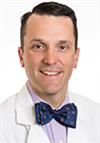
Badger thinks “one of the hallmarks of a good leader is one who develops relationships – not superficial ones, but true personal connections. I want my team to understand that I don't have all the answers, and I don't claim to. But I promise that I'll roll up my sleeves, have conversations and work to figure out the answer together.”
Be a whole-hearted leader.
Many people assume the heart sends all its blood outward to the body, but in fact, the very first branches of the aorta — the coronary arteries — deliver oxygen-rich blood back to the heart itself. The heart gives itself oxygen first. If you are a leader in your organization, change begins with you. “Add a commitment to nurture and nourish your own heart so you can show up for others as a whole-hearted leader,” Fisher said.
Be willing to listen. And then, act.
“Be open to hearing team members give feedback and then actually acting on that feedback,” Badger said. “Part of that is understanding that they have some input and that you’ll listen to that, incorporate that and use that to affect some change.” It’s not enough to just listen, Badger clarified. The second part of acting and incorporating the input is key.
Seek professional help.
What can workplace leaders do during a time of serious grief, such as the death of an employee?
Badger called this “a real opportunity to bring in outside resources to help support the team.” Fisher reiterated the importance of asking for professional help: “When someone is at risk, it's important to not go it alone.”
Make connections.
Fisher shared how emotional connection plays a vital role in healing. “Patients will say to me, ‘Dr. Fisher, I love you.’ That's not something I ever expected as a medical student. And I say it back because I really feel that this other dimension – whether it's eliminating loneliness, creating a sense of belonging – it creates physical changes in the patient's heart. It slows the heart rate down, lowers the blood pressure. I use it as a medicine.”
Set an example of well-being.
Fisher and Badger emphasized that leaders need to model healthy behaviors. You shouldn’t lecture your employees about the importance of a work-life balance if you’re always at work. Fisher suggested establishing boundaries such as no calls, emails or texts on the weekends or after, say, 8 p.m. If you suddenly think of something, at midnight, that you need to tell a colleague, make a note to yourself about it rather than texting that late. The colleague, especially if junior to you, may feel compelled to respond right away.
That’s good advice for all of us.
NCMS Advanced Healthcare Leadership Program Faculty Member Featured in Voyage Magazine!
 NCMS Advanced Healthcare Leadership Program Faculty Member Featured in Voyage Magazine!
NCMS Advanced Healthcare Leadership Program Faculty Member Featured in Voyage Magazine!
(Voyage Raleigh) – Today we’d like to introduce you to Amna Shabbir, MD, NBC-HWC, CPC
Hi Amna, it’s an honor to have you on the platform. Thanks for taking the time to share your story with us – to start maybe you can share some of your backstory with our readers?
From my teenage years, I’ve been passionate about empowering others to heal and thrive—whether through positive psychology, behavioral neuroscience, or medicine. This drive led me to a career in medicine, with training in Internal Medicine at the Cleveland Clinic. After residency, I moved to Raleigh and worked as a full-time primary care physician.
Like many in healthcare, I eventually faced the dual challenges of burnout and moral injury. During that difficult time, I reflected on what brought me joy in medicine: caring for older adults. This realization led me to complete a Geriatrics fellowship at Duke University. Now dual board-certified in Internal Medicine and Geriatrics, I balance part-time clinical practice with my passion for helping high-achievers thrive.
Coaching psychology, a natural extension of my focus on life optimization, became a powerful tool in supporting others. I earned my Wellness Coaching Certification from Duke Integrative Medicine and became a National Board-Certified Health and Wellness Coach, later deepening my expertise as a Master Certified Life Coach. These skills empower me to guide clients in overcoming obstacles and embracing life with confidence, calm, and clarity. As a professional speaker, I deliver workshops, keynotes, and boot camps that help attendees create tangible results.
My journey has inspired two ventures: Amna Shabbir Wellness Coaching and the Early Career Physicians Institute®, where I support physicians and high-achievers in navigating challenges.
Fiercely advocating for mental health is a cornerstone of my work. I’m proud to serve as an Ambassador for the Dr. Lorna Breen Heroes’ Foundation, which works to destigmatize mental health access for healthcare workers. Additionally, I actively contribute to the North Carolina Medical Society, the North Carolina Clinician and Physician Retention and Well-being Consortium, and the American College of Physicians North Carolina Chapter’s Well-being Committee.
I also cherish my other roles in life that complete me, including being the wife of a busy solar entrepreneur dedicated to serving the Triangle community and being the Super Mom to two young girls.
Through every step, my mission remains the same: to empower others to heal, grow, and shine.
Alright, so let’s dig a little deeper into the story – has it been an easy path overall and if not, what were the challenges you’ve had to overcome?
As we look around, we often see people who appear to have it all together, but the reality is often far more complex. My own journey has been no exception. Behind the outward accomplishments lies a journey of physical and mental health challenges, and moments of profound vulnerability.
Like many healthcare workers, I faced burnout and moral injury early in my career. The demands of a full-time primary care practice, combined with physical health challenges, tested my resilience in unexpected ways. I also experienced postpartum depression twice, navigating the complex emotions of motherhood while striving to meet the high expectations of being a physician. I felt isolated and my self-doubt was deafening, even as I appeared to “have it all together.”
Career pivots added their own set of hurdles. Whether it was stepping back into medical training after years of practice or transitioning into entrepreneurship, these shifts required me to embrace uncertainty, relinquish perfectionism, and redefine success. Even entrepreneurship is rewarding but often isolating, especially when creating something from scratch while juggling multiple roles such as motherhood. I had to learn to take bold risks, ask for help, and trust my instincts—all while staying true to my purpose of helping others thrive. The road hasn’t been smooth, but it has been transformative. One of my favorite quotes by Erin Hansen comes to mind here:
“There is freedom waiting for you,
On the breezes of the sky,
And you ask “What if I fall?”
Oh but my darling,
What if you fly?”
Thanks for sharing that. So, maybe next you can tell us a bit more about your business?
I am deeply passionate about my work serving high achievers, particularly those in healthcare, because I know how it feels to hide under a blanket of perfectionism while being simultaneously crushed from every direction.
The reality is that our time on this planet is finite, and the moment we truly recognize this and start living with intentionality, everything shifts. In all the experiences I offer—whether through coaching, workshops, or speaking engagements—my goal is to help turn abstract desires into tangible goals that leave you taking bold, meaningful action.
I work with both individuals and organizations, providing:
🎤 Speaking Engagements
📈 Well-being & Leadership Programs
🤝 Corporate Wellness Workshops
🤝 1:1 and Group Coaching
I collaborate with Learner+ to offer clinician-centric continuing medical education (CME) and continuing education (CE) credits for all my offerings.

The proud results my clients have experienced include:
– Confidence Creation (working through impostor syndrome and people-pleasing)
– Setting Tangible Boundaries
– Time & Energy Management
– Self-Advocacy
– Interpersonal Communication
– Stress Management Techniques
– Burnout Recovery and Prevention
– Cultivating a Life Outside of Work
– Achieving Physical Fitness Goals
What sets me apart is my unique approach, combining multiple evidence-based techniques rooted in the neuroscience of behavior change, coaching, and positive psychology, alongside my lived experience as a physician, mother, and entrepreneur.
Is there a quality that you most attribute to your success?
Grit- I attribute all my success to my ability to be gritty.

Duke Biologist: Honey, I Shrunk The Proteins!
 Duke Biologist: Honey, I Shrunk The Proteins!
Duke Biologist: Honey, I Shrunk The Proteins!
(Duke School of Medicine, Angela Spivey) – In August 2024, Duke University School of Medicine computational biologist Rohit Singh, PhD, posted on the social media platform X, “Introducing Raygun, a new approach to protein design.”
He was talking about an artificial intelligence tool his team created to help biologists “shrink” or “expand” existing proteins. The X post got nearly 200,000 views and nearly 1,000 likes. He also posted a link to a draft paper on bioRxiv, a “preprint” website where scientists share work ahead of formal publication.
Across the country, at University of California San Diego, biophysics PhD student Young Su Ko was intrigued. He doesn’t usually have time to try out any of the “cool projects” he reads about. But this one was different. “Rohit is a big guy in the field. I was a fan of his research,” Ko said.
Ko decided to use Raygun to compete in a protein design competition. To his surprise, the tool helped him design two new proteins that may show promise as chemotherapies, and he won top 10 placement in the contest.
Raygun is just one of several tools that Singh, an assistant professor of biostatistics & bioinformatics and cell biology, has built to help scientists work both faster and smarter to understand disease and ultimately develop better therapies. Most of them he makes widely available for further development.
Singh isn’t allergic to making money, having previously applied AI to the financial world, including founding a startup company that used deep learning to help small businesses assess risk and get credit. He has worked with Duke’s Office of Translation and Commercialization to file a provisional patent on CoNCISE, a tool that can scan a catalog of billions of chemical compounds in seconds. And for commercial uses of RayGun, he would aim to patent that too.
But he sees value in making tools accessible to other scientists early on. “You need to make it easy for people to build on top of it and try things out,” he said. “Science is better for sharing.”
Translating the Language of Proteins
While other computational biologists (including 2024 Nobel Prize winner David Baker, PhD, of the University of Washington) have created tools that can design an entirely new protein from scratch, Singh’s team developed Raygun to improve upon existing proteins by adding or deleting amino acids. That is, by “shrinking” or “enlarging” them.

Singh and postdoctoral fellow Kapil Devkota, PhD, named it Raygun in homage to movies like “Honey I Shrunk the Kids,” in which a scientist invents a “shrinkray” that blasts a laser to miniaturize objects. “Kapil and I and the other co-authors are all sci-fi fans, and there is this trope of a laser gun that can shrink or expand things,” Singh said. “And we thought, wouldn’t it be cool to have something like that in real life.”
Unlike its movie counterpart, Raygun isn’t a contraption that uses lasers; it’s a machine- learning framework (a computer program that runs two different algorithms).
Raygun is based on protein language models, which work on the same principle as large language models, which are the basis of chatbots that many people use every day. There is a “language” that governs how a protein’s amino acid sequence leads to its shape and function, Singh said, but scientists don’t fully understand it. Protein language models analyze patterns between sequence and function in millions of proteins, acting as a “translator,” Singh said.
“The catch here is that the translation gets more and more unreliable the further you get from the original protein,” he said. “But in some cases, we can actually shrink a protein by 50% while keeping the overall behavior the same.”
Better Sensors
A case in point: Singh’s team used Raygun to “shrink” two proteins that are commonly used as fluorescent reporters (eGFP and mCherry). Then Scott Soderling, PhD, professor and chair of cell biology at Duke, had the DNA encoding the redesigned proteins synthesized by a company, then conducted cell-based imaging experiments with the proteins to show that they still maintained their fluorescent properties.
This shows that Raygun may be useful for creating more accurate biological sensors. “So much of biology is about imaging now,” Singh said.

Scientists will fuse a protein with fluorescent properties onto a particular gene or protein of interest so that the protein will glow when it’s expressed. But that very process can cause unintended changes.
“It’s actually pretty risky in terms of being able to measure what you want to measure,” Singh said. “It’s like you have a car that gives you 30 miles to the gallon, and then you attach a big trailer to it, and then your whole mileage is off. You want the trailer to be as aerodynamic as possible.”
Singh, Devkota, and team are computer scientists, so they spend much of their time “writing tons and tons of code.” But they do this tucked outside a cell biology wet lab on the fourth floor of the Sands basic sciences building, embedded with the scientists who can benefit from their tools.
In this model for “discovery AI” at Duke, the computer scientists are “a vital part of the ecosystem of basic science in which biologists and computer scientists work together,” Soderling said.
A Surprising Success
Raygun is good at enlarging proteins, too, as Ko’s success in the protein design competition showed. Contestants were asked to design new proteins that would be relevant to chemotherapy, specifically proteins that would bind to epidermal growth factor receptor, (EGFR) which is involved in several types of cancers, including breast cancer.

Ko instructed Raygun to enlarge the protein epidermal growth factor but still preserve its function. “My thought was if we can miniaturize an existing binder or enlarge an existing binder to the EGFR, maybe that can improve the binding in some way,” he said.
To use Raygun, all Ko needed was the preprint, as well as the computer code and files that Singh had posted on file-sharing site GitHub.
“They basically shared the recipe for how you use Raygun,” Ko said.
The program suggested 10 candidate proteins that Ko submitted to the contest. Entries were narrowed down using computer analysis, and for the top 200 entries, scientists in a wet lab synthesized and tested the new proteins.
Four of Ko’s candidate proteins made it to the wet-lab step. In experimental testing, two of them bound to the epidermal growth factor receptor. “Fifty percent is a pretty high success rate for designing and making a protein that actually binds to the desired structure. That was already very exciting,” Ko said.
One of those two proteins bound better to EGFR than EGF itself. This result won Ko his top 10 placement.
Surprisingly, the new protein that bound most tightly to EFGR was the one that was the least like the original protein. So, these modifications would not have been obvious to a scientist. “The Raygun model has a deeper understanding of which amino acids can be changed to actually improve the binding,” Ko said.
Ko posted about the win on X, but he never expected Singh to see it. “I have less than 100 followers,” he said.
But Singh did see it, and he reached out to Ko. They’re now collaborating, adding Ko’s results to a paper the team has submitted for journal publication, with Devkota as first author. Ko and Devkota met up to talk science when he visited San Diego for a conference.
“It's one of those cool things,” Singh said. “We built something that we think of as a fundamental innovation, then people took it in directions we didn’t imagine.”
Advanced Healthcare Leaders New Co-Chair

Advanced Healthcare Leaders New Co-Chair
The NC Medical Society's Advanced Healthcare Leaders program welcomes Dr. Michaux Kilpatrick, MD, PhD, as a new Co-Chair. Dr. Kilpatrick is a neurological surgeon with Novant Health Brain and Spine Surgery.
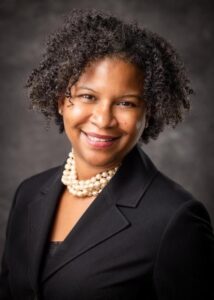 Dr. Kilpatrick also holds an adjunct faculty position at the UNC School of Medicine Charlotte campus. She graduated from the University of North Carolina School of Medicine in Chapel Hill and completed her Neurosurgery residency at UNC Hospitals, at which time she received the House Officer of the Year Award. She is active in many civic, educational, and community organizations. Dr. Kilpatrick looks forward to bringing her experience and expertise to the Scholars in the Medical Society's leadership programs.
Dr. Kilpatrick also holds an adjunct faculty position at the UNC School of Medicine Charlotte campus. She graduated from the University of North Carolina School of Medicine in Chapel Hill and completed her Neurosurgery residency at UNC Hospitals, at which time she received the House Officer of the Year Award. She is active in many civic, educational, and community organizations. Dr. Kilpatrick looks forward to bringing her experience and expertise to the Scholars in the Medical Society's leadership programs.
To learn more about the Advanced Healthcare Leaders program which will start recruiting for 2026 later this year, click here - https://ncmedsoc.org/
Diagnosed With 'Dense Breasts'? You May Need More Than A Mammogram
 Diagnosed With 'Dense Breasts'? You May Need More Than A Mammogram
Diagnosed With 'Dense Breasts'? You May Need More Than A Mammogram
(NPR, Yuki Noguchi) – Joy, a 46-year-old in Pittsburgh, recalls being the same age as her teenage boys, when her own mother diligently got cancer screenings. "She had her mammograms every year," Joy says.
But, Joy thinks her mother likely had "dense breasts," as she does. That means more concentrated clusters of glands and tissue, as opposed to fat. So the 2D, black-and-white images of a typical mammogram x-ray likely didn't catch the tumor her mom had until it had grown big enough to feel.
"She was diagnosed at age 43 and by 48 she was gone," says Joy, who asked that NPR use only her first name as she hasn't shared her health information widely with friends and family.
When Joy herself turned 43, she enrolled in a breast-imaging study, which gave her a mammogram that came back showing nothing of concern. But then, after researchers followed up with more high-contrast imaging, Joy got a call back: "We think we see something."
About 40% of women fall into the categories ranging from dense to extremely dense breasts — putting them at higher risk of developing cancer, which is also harder to detect on 2D or even newer 3D mammograms.
New information, but still a tough question
As of September 2024, federal regulations began requiring all mammogram reports to include information about breast density, including language saying, "in some people with dense tissue, other imaging tests in addition to a mammogram may help find cancers."
But with 40% of women falling under these dense breast categories, when is magnetic resonance imaging, known as MRI, or other follow-up imaging a good idea?
It is a tough question to answer, and there is not a one-size fits all approach.
The U.S. Preventive Services Taskforce is the expert body that makes recommendations for primary care doctors and sets which screening tests should be fully covered by insurance. It says evidence is "insufficient to assess the balance of benefits and harms of supplemental screening for breast cancer," including ultrasounds and MRIs, for women with dense breasts. Harms of additional screening could include subsequent testing such as biopsies and exposure to more radiation, if follow up x-rays are ordered.
Cost is a barrier
Joy's second image caught a tumor early enough to remove it completely. So she wishes follow-up MRIs were more routine and readily available. "I think it should be more automatic," says Joy.
But in fact, the vast majority of eligible women currently do not get the follow up screening. MRI machines are in short supply around the country, and sometimes hard for patients to get to, making it hard to get appointments.
But "cost is the biggest barrier, and most of the supplemental imaging is not covered by insurance," with out-of-pocket costs for an MRI about $1,000, says Krissa Smith, vice president of education at Susan G. Komen Breast Cancer Foundation.
Smith says there are questionnaires and online tools — including on Komen's Web site — to help women gauge their personal cancer risks. Still, she says, assessing whether a followup MRI is recommended is not a simple question to answer, because family history, genetics, weight, and lifestyle can all factor into one's risk, so she recommends starting with a doctor.
"It really has to be a conversation with your doctor, because if you have other risk factors, [like] a family history of breast cancer, that's going to be a more targeted conversation for you and what you need," she says.
Dr. Wendie Berg did that, a decade ago.
"I had put in my own risk factors into the risk models and determined that I, in fact, was high risk, and I knew I had dense breasts," says Berg, a radiology professor at the University of Pittsburgh, who researches breast imaging. But her doctor wasn't familiar with the latest science: "I contacted my doctor and I said I would like to get a screening MRI. And he said, 'Well, remind me why you want to do that?'"
Berg says the lack of physician education about breast density remains a problem today.
MRIs find more cancers
According to Berg's own findings, mammograms detect, on average, five cancers out of 1,000 patient scans. Ultrasounds catch a couple additional. "We added a screening MRI and found another 15 cancers per thousand, even after the mammogram and ultrasound," she says, meaning it detected far more cancers at earlier stages.
Unlike a CT scan, MRIs do not expose patients to radiation.
Yet — for various reasons, cost, complexity, or lack of awareness — Berg says fewer than a tenth of those eligible for the follow-up MRIs, get them. Often, she says, doctors don't have the time to go through each patient's risk assessments to help determine whether they should pursue an additional MRI.
Berg shares some of the relevant information on an educational Web site, densebreast-info.org, where she is chief scientific officer.
Berg benefitted from her own self-advocacy with the MRI she pushed her doctor for 10 years ago. "As luck would have it, that MRI showed a small, invasive cancer that is not visible on my mammogram," she says. That early detection enabled her to remove the tumor entirely, and she remains cancer free.
Berg says right now the onus is on women to take charge and advocate for themselves, with doctors and, if possible, for insurance coverage. "It remains incumbent on the woman herself to look at her risk factors, to talk to her doctor and say, 'Hey, I'd like to get an MRI,'" she says. "Don't wait for them to recommend it to you."
Advocates For Black Maternal Health Press NC General Assembly To Approve ‘MOMnibus’ Legislation
 Advocates For Black Maternal Health Press NC General Assembly To Approve ‘MOMnibus’ Legislation
Advocates For Black Maternal Health Press NC General Assembly To Approve ‘MOMnibus’ Legislation
(NC Newsline, Clayton Henkel) – On the week that North Carolina senators were busy rolling out a $32.6B spending plan, it was difficult to gain attention for legislation that some consider a longshot this session. But Senator Natalie Murdock (D-Chatham, Durham) refused to allow budget week to shift her focus from what she sees as the critical need to pass a bill crafted to improve Black maternal health outcomes.
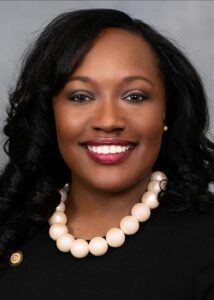 The United States has the highest maternal mortality rate in the developed world. And Black women in the U.S. are three times more likely to die from pregnancy-related health problems than white women.
The United States has the highest maternal mortality rate in the developed world. And Black women in the U.S. are three times more likely to die from pregnancy-related health problems than white women.
Murdock has repeated those sobering facts for more than three years now, as she tries to get the Republican-controlled Senate to advance the MOMnibus 3.0 Act.
Battling perceptions and negative stereotypes
Gabriel Scott, an MPA with the North Carolina Coalition of the National Council of Negro Women, joined Murdock last week in advocating for Senate Bill 571/House Bill 725.
Scott said when she went into labor at 25 weeks, doctors were dismissive.
“I needed pain medication, I needed help, I needed something. They did not listen.”
After she delivered her twins, complications with the placenta and an excessive loss of blood, left her husband terrified she might need a blood transfusion.
“They finally had an anesthesiologist come to give me medication. My husband said, can you at least tell me what the medication is? And the anesthesiologist laughed and said, ‘Oh, this is typically medicine we give to war vets who have had limbs blown off,’” Scott recounted. “They took it as a joke. The doctor continued to shove his arm in me.”
Hours later in recovery, a white female doctor came to her room acknowledging the difficulty of the delivery.
“And she said, there are things that we know we do well at the hospital and then there are things that we know we don’t do well, and one of those things is our treatment of African-American women and childbirth.”
The same doctor suggested both she and her husband might seek mental health help.
Scott gives thanks to God that her twin girls are healthy. But she’s been dealing with pelvic pain for over four years and the trauma of doctors who didn’t listen to her.
Dr. Charity Watkins, an assistant professor of social work at North Carolina Central University and a maternal health researcher at Duke University, shared her own terrifying story of pregnancy-related heart failure.

“I always feel it is important for me to introduce myself using my professional roles. Maybe my doctoral degree will save me from the daily mistreatment I experienced because of my dark complexion. Maybe leaning into the perceived prestige of being a professor will protect me from poor perceptions and negative stereotypes associated with being a Black woman,” Watkins told a room of reporters on Wednesday.
After her pregnancy, Watkins presented with classic heart failure symptoms, a family history of heart disease, and a recent cesarean delivery followed by hemorrhaging.
She was told by a doctor that maybe it was the flu.
“What could have led to me receiving quality health care without having to prove I’m worthy of being treated as a human being?”
MOMnibus 3.0
Watkins believes the MOMnibus 3.0 Act would have changed her birth story, with doctors who would not have dismissed her as being over-dramatic or “just another Black woman exaggerating her pain levels.”
The legislation would direct the NC Department of Health and Human Services to establish and operate a maternal mortality prevention grant initiative that would establish or expand programs for the prevention of maternal mortality and severe maternal morbidity among Black women.
“It’s time for us to provide Black mothers with more confidence in their care before, during, and after childbirth,” said Watkins.
The legislation would also require NCDHHS, in collaboration with community-based organizations led by Black women and a historically Black college and universities (HBCUs) that primarily serves minority populations to create evidence-based implicit bias training program for health care professionals.
Patients receiving care at a perinatal care facility would also receive a list of their rights including being informed of continuing health care requirements following discharge.
The bill would also earmark $3 million for each year of the 2025-27 biennium for the UNC Board of Governors for recruiting, training, and retaining a diverse workforce of lactation consultants in North Carolina.
Reps. Zack Hawkins (D-Durham) and Julie von Haefen (D-Wake) are advocating for HB 725, the companion bill in the state House.

Hawkins said his two sisters and his wife had their own stories in which doctors were not “listening appropriately” to their pain, and the fact that they knew their own bodies.
Von Haefen said while it may not seem like her place to speak on Black health, she also knew she could not turn away.
“This should not be something that’s put solely on Black women. White women need to be allies in this fight, because we are all mothers.”
In North Carolina Black women are 1.8 times more likely to die from childbirth, two-thirds of these deaths are preventable, according to Murdock.

NCDHHS: ‘Be on Alert’: Mpox Detected in Sewage Samples in NC
 NCDHHS: ‘Be on Alert’: Mpox Detected in Sewage Samples in NC
NCDHHS: ‘Be on Alert’: Mpox Detected in Sewage Samples in NC
(WYFF, Stephanie Moore) — The North Carolina Department of Health and Human Services is asking people and providers to be on alert for mpox cases following the detection of mpox particles in multiple sewage samples found through routine wastewater testing.
Health officials said there have been two cases of mpox, formerly known as monkeypox, in North Carolina and the new wastewater detections were determined to be another type, clade I, not previously found in North Carolina. These detections indicate potential undiagnosed or unreported cases. At this time, the risk to the public remains low.
Below is the information provided by health officials:
"The mpox virus is primarily spread by prolonged close contact, typically skin-to-skin, often during sexual activity. There are two genetic types of the virus, known as clade I and clade II. The viral particles found in wastewater were determined to be clade I. To date, only four clade I cases have been reported in the U.S. Clade I mpox is responsible for a large outbreak in Central and Eastern Africa, which appears to be spreading mostly through heterosexual contact with some spread to household members, including children.
"North Carolina’s detections were found in wastewater samples collected on March 25, March 28 and April 8 from a treatment plant in Greenville, NC. No clade I cases have been reported to date; however, these detections mean there was possibly at least one person with an undiagnosed or unreported clade I mpox infection present or traveling through the Greenville area around the time of these detections.
'The detection of clade I mpox virus in wastewater surveillance tells us the virus is potentially here in our state, even though no cases have been reported and confirmed,' said NC Health and Human Services Secretary Dev Sangvai. 'We encourage health care providers to be on the lookout for mpox cases and we encourage people who are at higher risk to protect themselves by getting vaccinated.'
"NCDHHS requests that all North Carolina health care providers consider mpox in patients with compatible symptoms and ask about any recent international travel. Providers who are treating patients with mpox infections should contact their local health department or the NCDHHS Division of Public Health’s 24/7 epidemiologist on-call number: 919-733-3419.
"These recent results were found by the North Carolina Wastewater Monitoring Network, which launched in 2021 to better understand the spread of certain viruses in communities across North Carolina. This network is a collaboration between NCDHHS, the University of North Carolina at Chapel Hill, wastewater utilities and local health departments. Samples are collected routinely from 35 wastewater treatment plants across the state and tested for specific viruses, including SARS-CoV-2 (the virus that causes COVID-19), influenza and respiratory syncytial virus (RSV). People with these viruses shed viral particles in their stool even if they don’t have symptoms. These virus particles are no longer infectious but can still be detected through lab testing.
"While wastewater surveillance has become a valuable tool for tracking and responding to viruses, the program is now at risk due to proposed federal funding cuts. Wastewater surveillance funding allows North Carolina to have a crucial early warning system for levels of infections that can help public health officials and health care providers make decisions, such as providing guidance on how to prevent infections.
"NC Wastewater Monitoring Network results are routinely shared on the NCDHHS wastewater monitoring dashboard. Testing for mpox is done on samples from 18 of the participating sites and results are shared on the CDC Mpox wastewater dashboard.
"If you think you have mpox or have had close contact with someone who has mpox, visit your health care provider or contact your local health department. Symptoms include a rash on any part of the body, like the genitals, hands, feet, chest, face or mouth. The rash can initially look like pimples or blisters and may be painful or itchy. The rash will go through several stages, including scabs, before healing. Some people experience flu-like symptoms before the rash, while others get a rash first followed by other symptoms. In some cases, a rash is the only symptom experienced.
"Vaccines are available to protect against mpox infection from both clade types and can reduce the severity of illness if infection does occur. Information about vaccine recommendations and where to find vaccine is available on the NCDHHS mpox page."
Cyberattack Aftermath - Loan Repayment Pressure from Optum - Are You Impacted?

Cyberattack Aftermath - Loan Repayment Pressure from Optum - Are You Impacted?
In February 2024, Change Healthcare, the medical claims clearinghouse and payment processor of the UnitedHealth Group, experienced a cyberattack. As a result, many physicians and practices experienced a disruption in claims payment which resulted in a serious cashflow dilemma for many.
In response to the ransomware attack and the resulting revenue cycle impact, UnitedHealth Group, via their subsidiary Optum, initiated a temporary financial assistance program whereby no-interest loans were offered to help physicians and practices survive the resulting cashflow challenges. The basic terms of the loan agreement were that repayment would be expected 45 days following the claims processing system being restored with deadline flexibility for practices finding it difficult to return to financial stability.
It has come to our attention that Optum is applying pressure on those with outstanding loans to make repayment while they are still dealing with unresolved claims from the cyberattack disruption. We are aware that some practices have received notices from Optum threatening to recover outstanding loan balances through recoupments.
Are you among the practices that have received these notices? Through collaboration with the American Medical Association, we are trying gauge the impact of the Optum’s aggressive loan recovery effort and would ask that you respond to share your experience if have received such notification. Please use the link below to respond.
https://www.surveymonkey.com/r/HQNQTMC
Thank you for responding.
A New Consensus On Substance Use Disorders And Healthcare

A New Consensus On Substance Use Disorders And Healthcare
(NC Newsline, Sara Harington and Jana Burson) – New polling from the Legal Action Center shows North Carolinians nearly universally (98%) view substance use disorders (SUD) as a problem deserving of attention. More than two-thirds know someone impacted by SUD, and the data shows robust support – across political and demographic lines – for a health-first approach to the issue. North Carolinians support expanding access to the full spectrum of evidence-based SUD treatment, including medications and eliminating SUD-based discrimination.
Leaders in North Carolina’s executive and legislative branches can take heart in this emerging consensus of support for their efforts to combat the state’s overdose epidemic. Fortunately, Governor Josh Stein and First Lady Anna Stein both support access to evidence-based treatment and ending the stigma that interferes with the delivery of treatment.
Additionally, State Representative Timothy Reeder and State Senator Jim Burgin recently held a press conference with the Addiction Professionals of NC (APNC) to announce the NC Treatment Connection website, aimed at ensuring all SUD treatment providers in the state use evidence-based models.
These efforts are essential since the Centers for Disease Control and Prevention (CDC) ranks North Carolina in the top 15 states with the highest fatal overdose rates. According to the state’s Department of Health and Human Services, 2023 (the most current year of data) marks NC’s highest rate of fatal overdose since 2010, with an estimated 4,442 deaths. That’s 12 deaths per day, more than double the rate of fatalities from vehicle crashes that year.
For opioid use disorder, the most evidence-based form of treatment uses either methadone or buprenorphine, two of the three medications approved by the FDA for treatment of this disorder. The third, naltrexone, has much less robust evidence of efficacy.
Buprenorphine and methadone are effective at treating opioid withdrawal and cravings for opioids. These two medications for opioid disorder (MOUD), in repeated studies, show a reduction in overdose death rates of at least two-fold.
If a medication showed such a reduction in death when used to treat any other chronic condition, failing to provide that medication would be malpractice. Yet MOUD is often prohibited in settings such as drug courts, skilled nursing facilities, and even in residential SUD treatment programs. These stigmatizing practices lead to unnecessary deaths.
We must eliminate MOUD- and SUD- based discrimination in all settings, especially healthcare settings. The stigma some medical professionals hold towards people with SUD can lead to dangerous results. Studies have shown clinicians can miss important diagnoses or deny care when they harbor preconceived ideas about patients.
Inadequate treatment of withdrawal symptoms causes patients to leave against medical advice or avoid medical care completely. Verbal and nonverbal communication of disdain or judgment from medical providers intensifies the shame already felt by patients with SUD and harms the therapeutic relationship. Even at facilities treating SUD, some providers carry negative attitudes towards life-saving buprenorphine and methadone.
The people of North Carolina also have reasons for optimism. In 2024, North Carolina experienced a five-year low of 12,447 emergency department visits due to overdose. The availability of naloxone, now free at many jails, health departments, and harm reduction sites, and the use of mobile OUD treatment clinics to reach people in areas that previously lacked access has contributed to this positive trend.
Clearly, there’s much more work to be done. North Carolina’s widespread support for strategies that prioritize treatment over punishment signals a prime opportunity for action. NC leaders should build on their efforts in three key ways:
- Ensure emergency departments, primary care providers, jails, recovery courts, and SUD treatment programs all provide – or act as conduits to – evidence-based treatment.
- Expand the SUD treatment workforce
- Ensure public funds, including opioid settlement money, only support programs that provide access to evidence-based treatment.
Overwhelming public support for a health-first approach, the leadership of policymakers committed to change, and the availability of lifesaving interventions bring the overdose crisis within our reach for positive change.
By investing in treatment, harm reduction, and policies that promote recovery and combat discrimination, North Carolina can save lives and create a robust healthcare system that treats all people with dignity and respect. There is consensus, and the path forward is clear.
Let us act with urgency.
Look! Up in the Sky! Get Ready to See The Lyrid Meteor Shower

Look! Up in the Sky! Get Ready to See The Lyrid Meteor Shower
(CNN, Kameryn Griesser and Ashley Strickland) – After months without a meteor shower, sky-gazers now have a reason to keep their chins up — the Lyrids are here to kick off the season.
The Lyrids have graced the sky since April 17 and will hang around until Saturday, with the densest concentration of meteors flying by Monday night into Tuesday, according to the American Meteor Society. In a perfectly dark sky, onlookers can typically spot up to 18 meteors per hour during the Lyrid shower’s peak. This year, however, light from the waning crescent moon will make it somewhat harder to see the celestial show.
Still, local weather conditions allowing, careful observers in the Northern Hemisphere can expect around five streaking lights per hour appearing between 10 p.m. local time Monday and 4:30 a.m. Tuesday, said Dr. Bill Cooke, lead for NASA’s Meteoroid Environment Office.
“Most meteors you see (during a Lyrid shower) are not brilliant fireballs — they are faint little streaks — and the more moonlight there is, it tends to wash out those faint little streaks,” Cooke said. “Meteor observing is one of those things where you’re going to take your time.”
For the optimal viewing experience, Cooke recommends lying down somewhere outside with minimal light pollution and giving your eyes about 30 minutes to adjust to the darkness.
“The other important thing is: Don’t look at your cell phone, because that bright screen destroys your night vision,” Cooke said. “And it takes your eyes off the sky.”
More about the Lyrids
Regular meteor showers occur throughout the year as the Earth passes through a field of debris left by comets and asteroids, said Shannon Schmoll, director of Abrams Planetarium at Michigan State University.
The Lyrids originate from the parent comet C/1861 G1 (Thatcher), which is about halfway through its roughly 415-year orbit around the sun. While Comet Thatcher was discovered in 1861, the Lyrids have been observed for 2,700 years, making them one of the oldest known meteor showers, according to NASA.
The best time to view the Lyrids is when Lyra, the Northern Hemisphere constellation from which the meteors appear to radiate, is above the horizon, according to EarthSky.
What happens during a meteor shower?
As the comet travels, it leaves a trail of ice and dust moving thousands of miles per hour in its wake, astronomer Dean Regas said.
“The meteors hit the (Earth’s) atmosphere and slow down, and that transmits heat. That’s the flash you see,” Regas said. “Most of the material from meter showers, the comet pieces, will burn up before they hit the ground, and a lot of them are about the size of a grain of sand. So it’s really impressive to see something so small light up like that.”
While the Lyrids tend to be relatively predictable each year, occasionally they exceed expectations.
Outbursts of 100 meteors per hour occur unpredictably, averaging about every 60 years. The next outburst is expected around 2042, according to the American Meteor Society. It is not entirely known what causes these outbursts, but other planets and objects are thought to affect the density of the debris as they cross paths, Schmoll said.
Other meteor showers to come
If you miss the peak of the Lyrid shower, there’s still a chance to catch some shooting stars this year.
Here are peak dates for upcoming meteor showers in 2025, according to the American Meteor Society and EarthSky.
● Eta Aquariids: May 5–6
● Southern Delta Aquariids: July 29–30
● Alpha Capricornids: July 29–30
● Perseids: August 12–13
● Draconids: October 8–9
● Orionids: October 22–23
● Southern Taurids: November 3–4
● Northern Taurids: November 8–9
● Leonids: November 16–17
● Geminids: December 12–13
● Ursids: December 21–22
Full moons to watch for
Following the recent pink moon event, there are eight more full moons to look out for this year, with supermoons occurring in October, November and December.
Here’s the list of full moons remaining in 2025, according to the Farmers’ Almanac:
● May 12: Flower moon
● June 11: Strawberry moon
● July 10: Buck moon
● August 9: Sturgeon moon
● September 7: Corn moon
● October 6: Harvest moon
● November 5: Beaver moon
● December 4: Cold moon
Lunar and solar eclipses in 2025
In the lead-up to the fall season, two eclipse events will grace the sky.
A total lunar eclipse will be most visible from Europe, Africa, Asia, Australia, parts of eastern South America, Alaska and Antarctica on September 7 and 8. A lunar eclipse, which causes the moon to look dark or dimmed, occurs when Earth is between the sun and moon and the three celestial objects line up in a row so that the moon passes into our planet’s shadow.
When the moon is within the darkest part of Earth’s shadow, called the umbra, it takes on a reddish hue, which has led to the nickname “blood moon” for a lunar eclipse, according to NASA. That shadow isn’t perfect, so sunbeams sneak around the shadow’s edges, bathing the moon in warm hues.
A partial solar eclipse will occur on September 21 as the moon moves between the sun and Earth but the celestial bodies aren’t perfectly aligned, according to NASA. In this type of event, the moon only blocks part of the sun’s face, creating a crescent shape in which it appears the moon is taking a “bite” out of the sun. This event will be visible to parts of Australia, Antarctica and the Pacific Ocean.
Cancer Death Rates Declining, New Report Says, But Diagnosis Rates Are On The Rise For Women
 Cancer Death Rates Declining, New Report Says, But Diagnosis Rates Are On The Rise For Women
Cancer Death Rates Declining, New Report Says, But Diagnosis Rates Are On The Rise For Women
(CNN, Katherine Dillinger) – A new report on cancer in the US shows a steady decline in overall deaths from 2001 through 2022. The rate of diagnoses among men fell from 2001 through 2013 and then stabilized through 2021 but these incidence rates among women increased slightly every year between 2003 and 2021.
Those trends were interrupted in 2020, when cancer incidence rates fell significantly, the report shows, possibly because of disruptions in medical care related to the Covid-19 pandemic. After 2020, they returned to expected levels. “Because fewer cancers were diagnosed in 2020, especially through screening, we may see a larger percentage of cancers diagnosed at a late stage in future years,” the report says.
The 2024 Annual Report to the Nation on the Status of Cancer was published Monday in the journal Cancer. It’s based on data from cancer registries funded by the US Centers for Disease Control and Prevention and the US National Institutes of Health’s National Cancer Institute, and it’s released by those institutions, the American Cancer Society and the North American Association of Central Cancer Registries.
“Overall, cancer incidence and death rates continue to decline, representing changes in risk factors, increases in screening utilization, and advances in treatment,” the researchers write. “However, sustained disparities by race and ethnicity emphasize the need to fully understand the factors that create these differences so that they can be mitigated.”
Fewer people in the US are using tobacco, helping lower incidence and death rates for smoking-related cancers like lung, bladder and larynx, the report says. And these sustained declines in lung cancer have been a major contributor to the overall improvements in cancer death.
However, incidence rates are on the rise for several other cancers, including those linked with excess weight, such as pancreas and kidney cancers; uterine, breast and liver cancers among women; and colon and rectal cancers among adolescents and young adults.
Previously published research has shown that cancer diagnoses are shifting from older to younger adults and from men to women. Middle‐age women now have a slightly higher cancer risk than their male counterparts, and young women are nearly twice as likely to be diagnosed with the disease as young men, according to an American Cancer Society report published earlier this year.
The new report shows that incidence rates among women have risen 0.3% each year. The largest observed increase among women was for stomach cancer, which the researchers say may be largely due to a change in the classification of tumors by the World Health Organization.
Rates of breast cancer diagnoses are also gradually increasing, driven mostly by types of cancer that have been associated with factors like obesity, alcohol use and age when someone gives birth for the first time.
The data continues to show large racial disparities. For example, Black women have a 40% higher rate of death from breast cancer than White women, and their rate of death from uterine cancer is double that of White women.
Differences in access to care and less use of diagnostic procedures and treatment may account for some of the difference, the researchers say. “One additional potential risk factor disproportionately affecting Black women is the use of chemical hair relaxers, which may be associated with an increased risk of uterine cancer among postmenopausal women.”
Changing habits such as stopping tobacco use, staying at a healthy weight, eating a healthy diet with fruits and vegetables, avoiding alcohol and protecting skin can all reduce risk of cancer. Screening can help find and treat cancers early, before they spread. Screenings are available and recommended for certain people for breast cancer, colon and rectal cancer, cervical cancer, endometrial cancer, lung cancer and prostate cancer.











